

How to Write an Essay about a Novel – Step by Step Guide

Writing about literature used to scare the heck out of me. I really couldn’t wrap my mind around analyzing a novel. You have the story. You have the characters. But so what? I had no idea what to write.
Luckily, a brilliant professor I had as an undergrad taught me how to analyze a novel in an essay. I taught this process in the university and as a tutor for many years. It’s simple, and it works. And in this tutorial, I’ll show it to you. So, let’s go!
Writing an essay about a novel or any work of fiction is a 6-step process. Steps 1-3 are the analysis part. Steps 4-6 are the writing part.
Step 1. create a list of elements of the novel .
Ask yourself, “What are the elements of this book?”
Well, here is a list of elements present in any work of fiction, any novel:
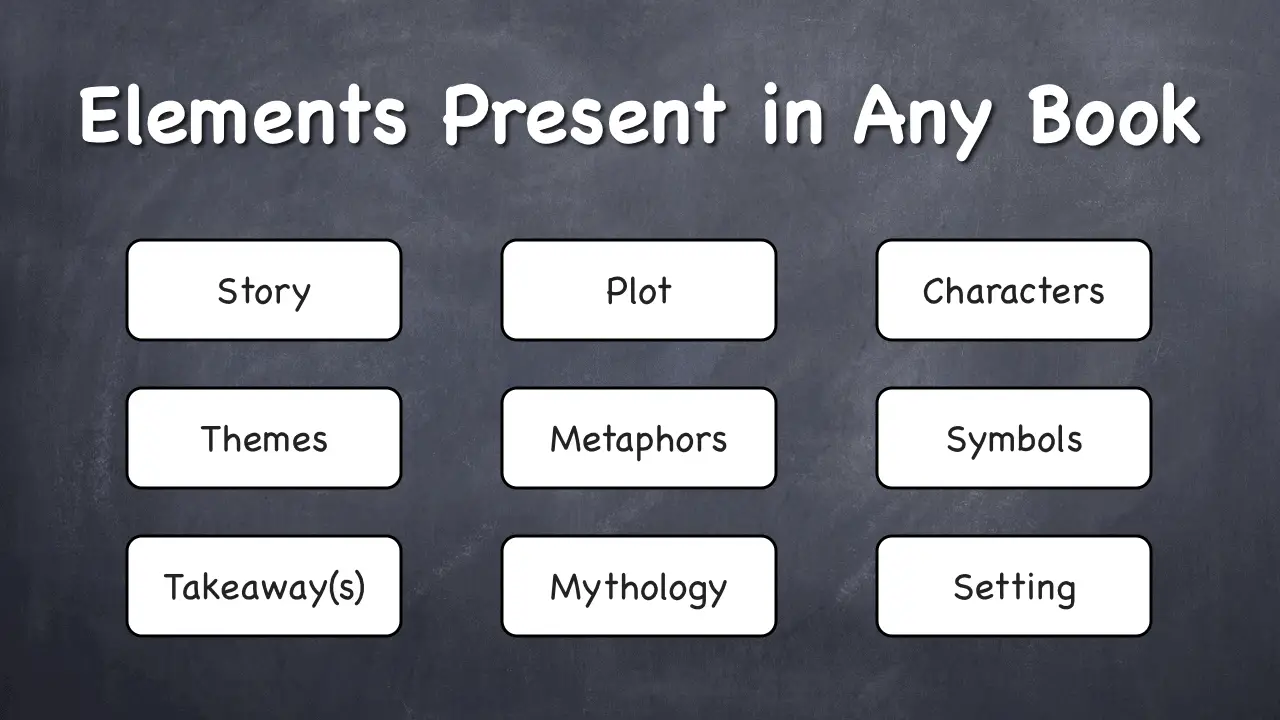
Here is a table of literary elements along with their descriptions.
In this step, you simply pick 3-6 elements from the list I just gave you and arrange them as bullet points. You just want to make sure you pick elements that you are most familiar or comfortable with.
For example, you can create the following list:
This is just for you to capture the possibilities of what you can write about. It’s a very simple and quick step because I already gave you a list of elements.
Step 2. Pick 3 elements you are most comfortable with
In this step, we’ll use what I call The Power of Three . You don’t need more than three elements to write an excellent essay about a novel or a book.
Just pick three from the list you just created with which you are most familiar or that you understand the best. These will correspond to three sections in your essay.
If you’re an English major, you’ll be a lot more familiar with the term “metaphor” than if you major in Accounting.
But even if you’re a Math major, you are at least probably already familiar with what a story or a character is. And you’ve probably had a takeaway or a lesson from stories you’ve read or seen on screen.
Just pick what you can relate to most readily and easily.
For example, you can pick Characters , Symbols , and Takeaways . Great!
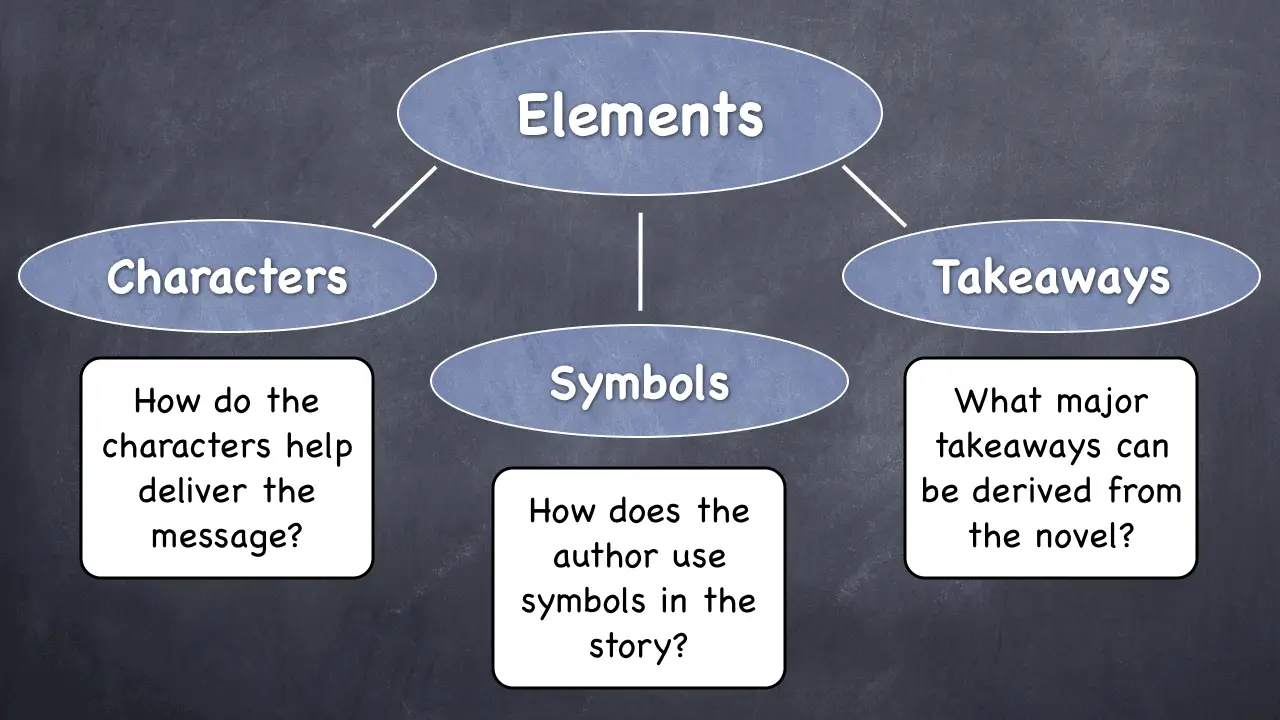
You Can Also Pick Examples of an Element
Let’s say that you are really unfamiliar with most of the elements. In that case, you can just pick one and then list three examples of it.
For example, you can pick the element of Characters . And now all you need to do is choose three of the most memorable characters. You can do this with many of the elements of a novel.
You can pick three themes , such as Romance, Envy, and Adultery.
You can pick three symbols , such as a rose, a ring, and a boat. These can represent love, marriage, and departure.
Okay, great job picking your elements or examples of them.
For the rest of this tutorial, I chose to write about a novel by Fedor Dostoyevskiy, The Brothers Karamazov. This will be our example.
It is one of the greatest novels ever written. And it’s a mystery novel, too, which makes it fun.
So now, let’s choose either three elements of this novel or three examples of an element. I find that one of the easiest ways to do this is to pick one element – Characters – and three examples of it.
In other words, I’m picking three characters. And the entire essay will be about these three characters.
Now, you may ask, if I write only about the characters, am I really writing an essay about the novel?
And the answer is, Yes. Because you can’t write about everything at once. You must pick something. Pick your battles.
And by doing that, you will have plenty of opportunities to make a statement about the whole novel. Does that make sense?
Just trust the process, and it will all become clear in the next steps.
Let’s pick the three brothers – Alexei, Dmitriy, and Ivan.
And don’t worry – I won’t assume that you have read the book. And I won’t spoil it for you if you’re planning to.
So we have the three brothers. We’re ready to move on to the next step.
Step 3. Identify a relationship among these elements
In this step, you want to think about how these three elements that you picked are related to one another.
In this particular case, the three brothers are obviously related because they are brothers. But I want you to dig deeper and see if there is perhaps a theme in the novel that may be connecting the elements.
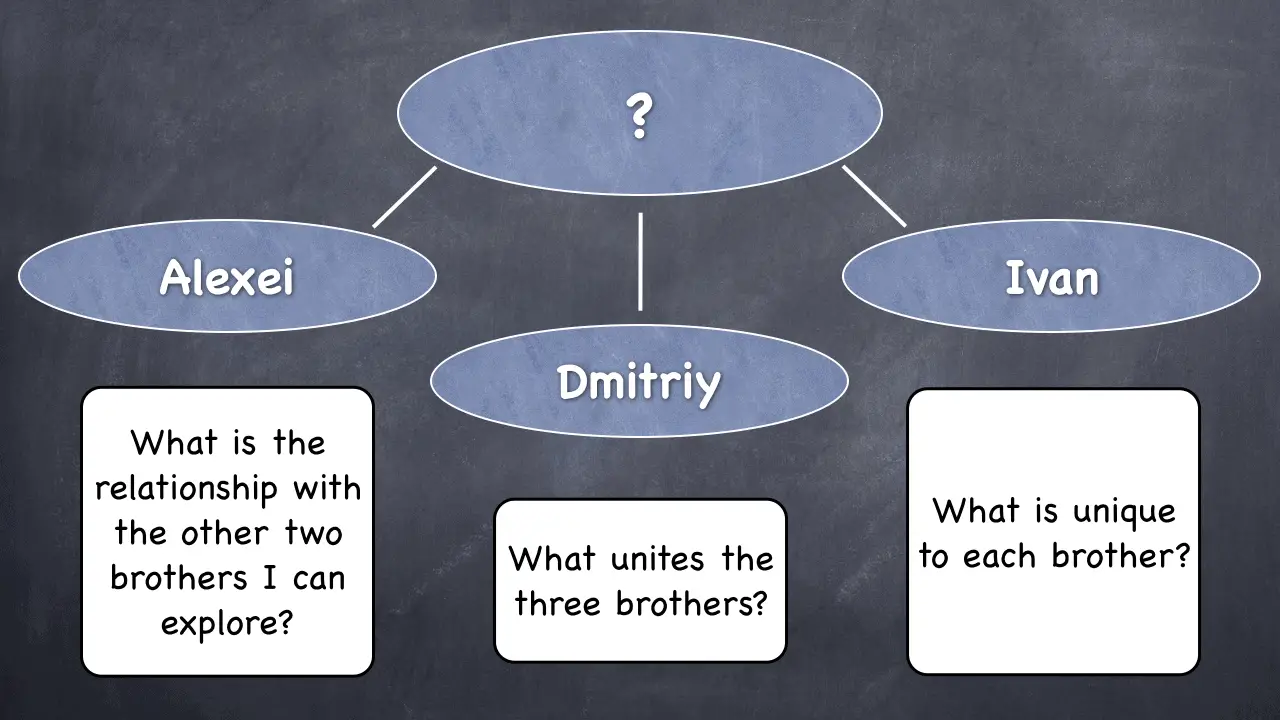
And, yes, I am using another element – theme – just to help me think about the book. Be creative and use whatever is available to you. It just so happens that religion is a very strong theme in this novel.
What do the three brothers have in common?
- They have the same father.
- Each one has a romantic interest (meaning, a beloved woman).
- All three have some kind of a relationship with God.
These are three ways in which the brothers are related to one another. All we need is one type of a relationship among them to write this essay.
This is a religious novel, and yes, some of the characters will be linked to a form of a divinity. In this case, the religion is Christianity.
Note: there are many ways in which you can play with elements of a novel and examples of them. Here’s a detailed video I made about this process:
Let’s see if we can pick the best relationship of those we just enumerated.
They all have the same father.
This relationship is only factual. It is not very interesting in any way. So we move on to the next one.
They all have women they love.
Each brother has a romantic interest, to use a literary term. We can examine each of the brothers as a lover.
Who is the most fervent lover? Who is perhaps more distant and closed? This is an interesting connecting relationship to explore.
One of them is the most passionate about his woman, but so is another one – I won’t say who so I don’t spoil the novel for you. The third brother seems rather intellectual about his love interest.
So, romantic interest is a good candidate for a connecting relationship. Let’s explore the next connection candidate.
They all relate to God in one way or another.
Let’s see if we can put the brothers’ relationships with God in some sort of an order. Well, Alexei is a monk in learning. He lives at the monastery and studies Christianity. He is the closest to God.
Dmitriy is a believer, but he is more distant from God due to his passionate affair with his woman. He loses his head many times and does things that are ungodly, according to the author. So, although he is a believer, he is more distant from God than is Alexei.
Finally, Ivan is a self-proclaimed atheist. Therefore, he is the farthest away from God.
It looks like we got ourselves a nice sequence, or progression, which we can probably use to write this essay about this novel.
What is the sequence? The sequence is:
Alexei is the closest to God, Dmitriy is second closest, and Ivan is pretty far away.
It looks like we have a pattern here.
If we look at the brothers in the book and watch their emotions closely, we’ll come to the conclusion that they go from blissful to very emotionally unstable to downright miserable to the point of insanity.
Here’s the conclusion we must make:
The closer the character’s relationship with God, the happier he is, and the farther away he is from God, the more miserable he appears to be.
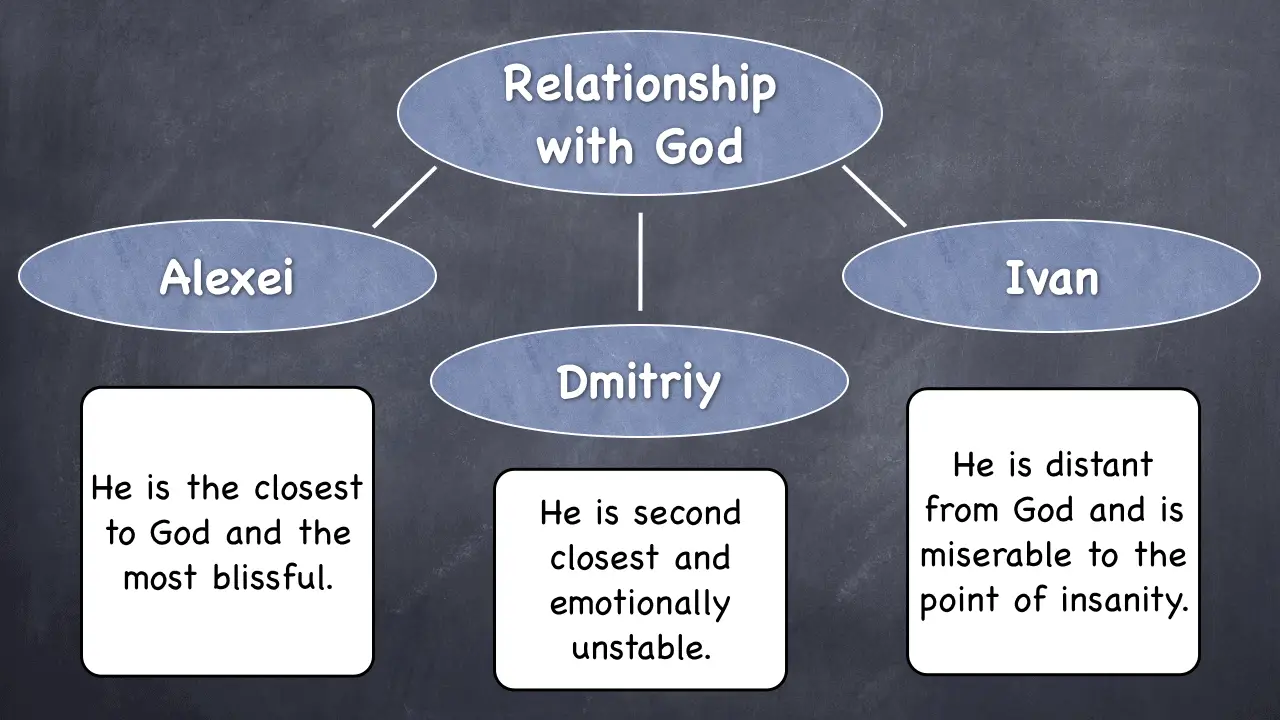
Wow. This is quite a conclusion. It looks like we have just uncovered one of Dostoyevskiy’s main arguments in this novel, if not the main point he is trying to make.
Now that we’ve identified our three elements (examples) and a strong connecting relationship among them, we can move on to Step 4.
Step 4. Take a stand and write your thesis statement
Now we’re ready to formulate our thesis statement. It consists of two parts:
- Your Thesis (your main argument)
- Your Outline of Support (how you plan to support your main point)
By now, we have everything we need to write a very clear and strong thesis statement.
First, let’s state our thesis as clearly and succinctly as possible, based on what we already know:
“In his novel Brothers Karamazov , Dostoyevskiy describes a world in which happiness is directly proportional to proximity to God. The closer to God a character is, the happier and more emotionally stable he is, and vice versa.”
See how clear this is? And most importantly, this is clear not only to the reader, but also to you as the writer. Now you know exactly what statement you will be supporting in the body of the essay.
Are we finished with the thesis statement? Not yet. The second part consists of your supporting points. And again, we have everything we need to write it. Let’s do it.
“Alexei’s state of mind is ultimately blissful, because he is a true and observant believer. Dmitriy’s faith is upstaged by his passion for a woman, and he suffers a lot as a result. Ivan’s renunciation of God makes him the unhappiest of the brothers and eventually leads him to insanity.”
Guess what – we have just written our complete thesis statement. And it’s also our whole first paragraph.
We are ready for Step 5.
Step 5. Write the body of the essay
Again, just like in the previous step, you have everything you need to structure and write out the body of this essay.
How many main sections will this essay have? Because we are writing about three brothers, it only makes sense that our essay will have three main sections.
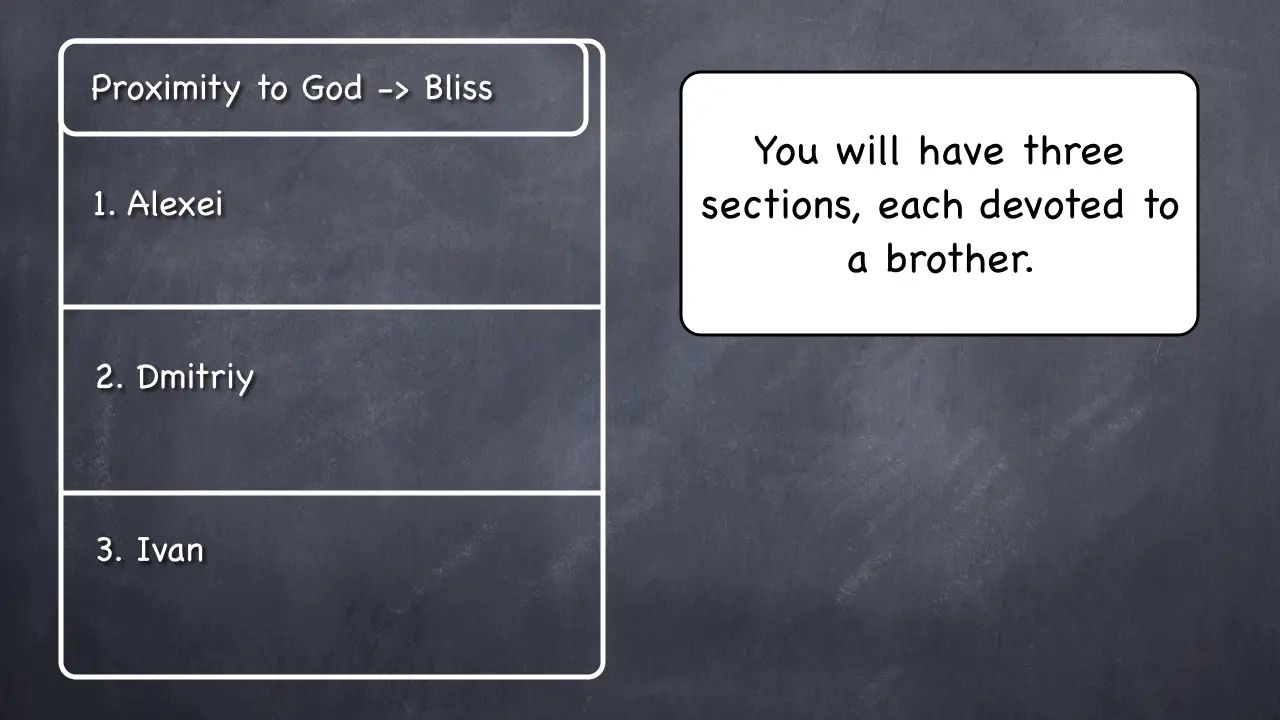
Each section may have one or more paragraphs. So, here’s an important question to consider:
How many words or pages do you have to write?
Let’s say your teacher or professor wants you to write 2,000 words on this topic. Then, here is your strategic breakdown:
- Thesis Statement (first paragraph) = 100 words
- Conclusion (last paragraph) = 100 words
- Body of the Essay = 1,800 words
Let me show you how easy it is to subdivide the body of the essay into sections and subsections.
We already know that we have three sections. And we need 1,800 words total for the body. This leads us to 600 words per main section (meaning, per brother).
Can we subdivide further? Yes, we can. And we should.
When discussing each of the brothers, we connect two subjects: his relationship with God AND his psychological state. That’s how we make those connections.
So, we should simply subdivide each section of 600 words into two subsections of 300 words each. And now all we need to do is to write each part as if it were a standalone 300-word essay.
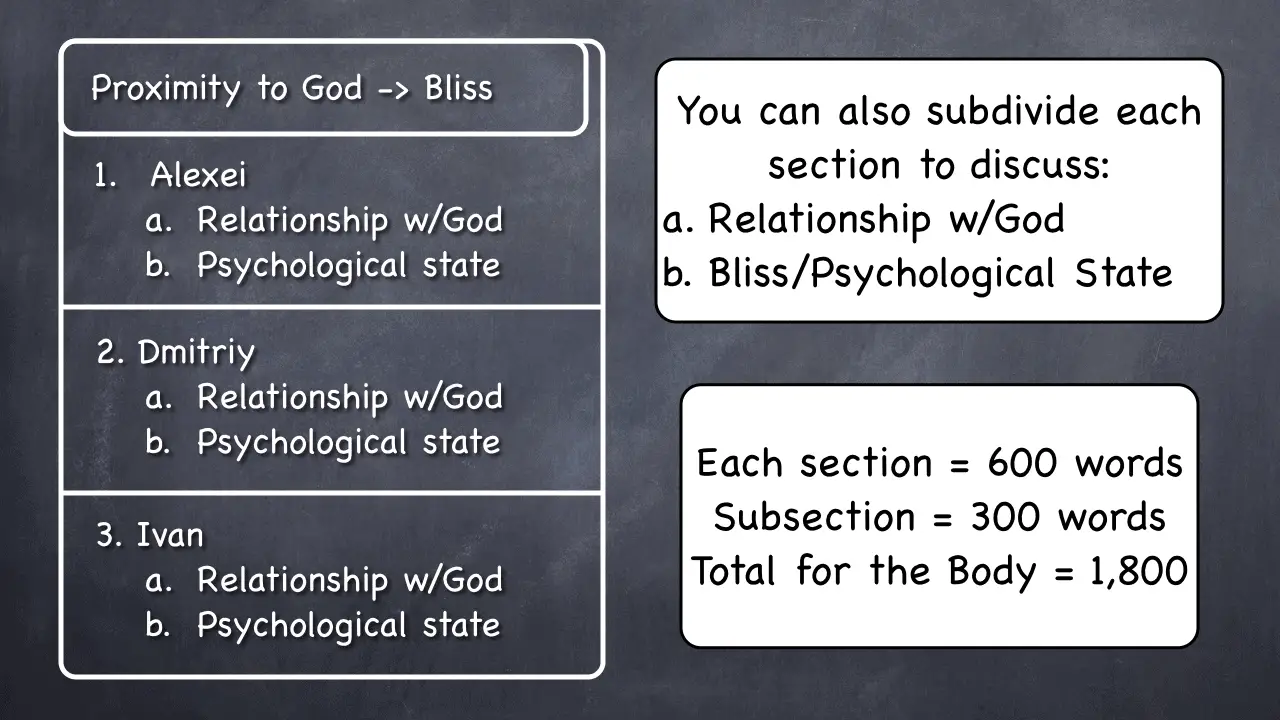
Does this make sense? See how simple and clear this is?
Writing Your Paragraphs
Writing good paragraphs is a topic for an entire article of its own. It is a science and an art.
In essence, you start your paragraph with a good lead sentence in which you make one point. Then, you provide reasons, explanations, and examples to support it.
Here is an article I wrote on how to write great paragraphs .
Once you’ve written the body of the essay, one last step remains.
Step 6. Add an introduction and a conclusion
Introductions and conclusions are those little parts of an essay that your teachers and professors will want you to write.
Introduction
In our example, we already have a full opening paragraph going. It’s our thesis statement.
To write an introduction, all you need to do is add one or two sentences above the thesis statement.
Here is our thesis statement:
“In his novel Brothers Karamazov, Dostoyevskiy describes a world in which happiness is directly proportional to proximity to God. The closer to God a character is, the happier and more emotionally stable he is, and vice versa. Alexei’s state of mind is ultimately blissful, because he is a true and observant believer. Dmitriy’s faith is upstaged by his passion for a woman, and he suffers a lot as a result. Ivan’s renunciation of God makes him the unhappiest of the brothers and eventually leads him to insanity.”
As you can see, it is a complete paragraph that doesn’t lack anything. But because we need to have an introduction, here is a sentence with which we can open this paragraph:
“Dostoyevskiy is a great Russian novelist who explores the theme of religion in many of his books.”
And then just proceed with the rest of the paragraph. Read this sentence followed by the thesis statement, and you see that it works great. And it took me about 30 seconds to write this introductory sentence.
You can write conclusions in several different ways. But the most time-proven way is to simply restate your thesis.
If you write your thesis statement the way I teach, you will have a really strong opening paragraph that can be easily reworded to craft a good conclusion.
Here is an article I wrote (which includes a video) on how to write conclusions .
Congratulations!
You’ve made it to the end, and now you know exactly how to write an essay about a novel or any work of fiction!
Tutor Phil is an e-learning professional who helps adult learners finish their degrees by teaching them academic writing skills.
Recent Posts
How to Write an Essay about Why You Want to Become a Nurse
If you're eager to write an essay about why you want to become a nurse, then you've arrived at the right tutorial! An essay about why you want to enter the nursing profession can help to...
How to Write an Essay about Why You Deserve a Job
If you're preparing for a job application or interview, knowing how to express why you deserve a role is essential. This tutorial will guide you in crafting an effective essay to convey this...

Ebooks, Publishing, and Everything in Between
- Downloads & Pricing
- Advertising
How to Write the Best Book Introduction (With Checklists & Examples)
- on Aug 31, 2022
- in Writing Tips
- Last update: August 31st, 2022
- at 11:23 am
Readers might be intrigued by a book standing in the middle of a bookstore lined with shiny artwork. But what will make them flip through the pages after they’ve picked it up? And what will lead them to the cashier to make a commitment to this one book out of countless others? The answer lies in the ‘book introduction’. That’s where the real magic happens: where the author hooks the reader and captures their thoughts, making them feel like what they’re about to read is going to change their life in some way.
In this article, we are going to cover the purpose of book introductions; the simple steps you can take to write a great one for your book (whether it’s for a work of fiction or nonfiction); and finally, we’ll share some examples by authors who just nailed the assignment!

In this article :
- What is a book introduction exactly?
- Why you need a book introduction
- How to write a book introduction that people will actually read
- Fiction book introduction checklist (downloadable)
- Non-fiction book introduction checklist (downloadable)
- Examples of great book introductions (fiction and non-fiction)
Forward VS Preface Vs Introduction
There are many different elements that make up the “ front matter ” of a book, or the pages preceding the body. We’ve all come across introductions, forewords, and prefaces, and sometimes a book can have a mix of all three. So first, let’s establish the differences between them.
Forewords are usually not written by the author or editor, but rather by someone who is knowledgeable on the book’s subject—preferably a “celebrity” in the field. Forewords represent a way for authors to earn readers’ trust by having someone well-established vouch for these authors and their work. And usually, they are no more than a couple of pages long— just like a letter of reference .
A preface provides a general overview of a book and is written by the author or editor. It touches upon the author’s reasons for writing the book, how it is written, and why the author is an expert on the subject. What it doesn’t do, however, is offer a close examination of the book’s contents. Think of a preface as the “why” and “how” of a work, but not the “what.”
Introduction
A book’s introduction, on the other hand, can provide the same overview that a preface does, while also discussing and adding to the subject of the book. It is written by the author and usually offers readers an outline of the book’s contents, letting the readers know what’s to come. In effect, it acts as the “hook”—a justification for why readers should turn to the first chapter, and also why they should make it all the way to the end.
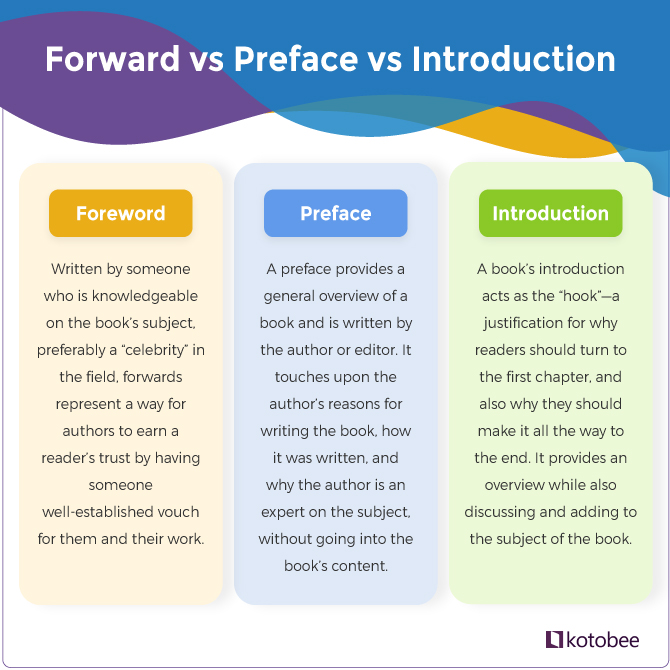
The Purpose of Book Introductions
Before we get into how to write a fantastic book introduction, here are five glorious things that a well-written introduction can do for you:
1. Getting Readers Hooked
Has your book been picked up at a bookstore? Great! The potential buyer is now scanning the first paragraph of your introduction. They’re about to keep flipping through the pages, when, slowly, they pause. Something in that paragraph has caught their attention and they’re now putting down their bag for a minute. That’s the hook .
2. Convincing Them to Carry On
Not only will a good introduction convince the reader to turn to the next chapter, but it will also give them a sense of wanting to know what’s to come much later on. With the right amount of show-and-tell, your introduction will persuade them that this book is one they should not put away till the end.
3. Increasing Book Sales
The book industry is a competitive one, and it’s no secret that it takes a lot to market and sell a book. But whether you have a publishing contract or are planning to self-publish , your introduction is one of the most vital sales tools your book will have. As the author, you know what your work has to offer, and with a good introduction, your readers will too.
4. Providing a Bite-Sized Version of Your Work
Reading a book—especially a novel or any other type of long-form work—is an investment on the reader’s part. The introduction is your chance to clearly summarize hundreds of pages in just a few.
In this way, you’re offering a “trailer” of your work—a bite-sized version that potential readers can quickly digest in order to make the decision to finish reading your book.
5. Displaying Your Expertise
It doesn’t matter if you’re writing about a niche subject or something that’s been written about thousands of times; either way, you have to convince your readers that you know what you are talking about.
The introduction is a chance to showcase your talents, whether it’s by writing that perfect opening to your mystery novel, or by outlining the research methodology for your book on ancient Egyptian architecture.
How to Write a Book Introduction
Now that you know how important a book introduction is, it’s time to know how it’s done. In this section, we will provide a step-by-step guide on how to nail yours, and also give you some more specific pointers on how to write introductions for works of fiction and non-fiction.
Step 1: Don’t Worry about Its Length
It’s normal to wonder if there’s a word limit you should stick to when writing your introduction. The short answer is: there isn’t one. The length of an introduction entirely depends on your subject matter. In other words, how much does the reader need to know about your topic before being convinced to make that purchase?
So instead of trying to fit your introduction into a set number of pages, make a list of the important points a potential reader should know so they would continue reading your book. Using that as your guide, you’ll be able to naturally determine the appropriate length of your introduction as you write it.
Step 2: Choose Your Reader Wisely
Choosing your reader may sound strange, but before an author begins writing, he/she will usually have an ideal reader persona in mind. This reader is one who is interested in your subject, and who will therefore appreciate the work you have done.
Before writing your introduction, picture your ideal reader and write to them rather than trying to appeal to a general audience. This will make writing your introduction much easier, as you will be catering it to those who would naturally want to read your work.
Step 3: Introduce Your Subject Matter
A good introduction is like a good sales pitch; it should provide the right amount of information to get others excited and motivated to invest. This means book introductions should be concise and informative while showcasing the work’s subject matter.
Here are three questions to consider:
- Why is this topic important?
- Why should people read about it now?
- What are the main things you promise the reader will take away from this reading experience?
Step 4: Don’t Be Afraid to Boast a Little
The introduction is not the place for you to be humble about your experiences and expertise. Of course, this doesn’t mean you should use it just to show off and sing your own praises either. Instead, you have to find the right balance between making yourself relatable to your readers, while simultaneously demonstrating that you are an authority on your subject.
Use the introduction to show readers that you’re passionate about your topic, and list the ways in which you bring a unique edge to it. If done correctly, the introduction would be the first step to getting readers to trust you as an author.
Step 5: Think about Your “Hook”
Now that you have your ideal reader, outline, and expertise all down, it’s time to think about your introduction’s opening paragraph. How are you going to get that reader to pause in the middle of the bookstore? How will you get them to instantly stop skimming and start carefully reading instead?
That’s where your “hook” comes in. Whether you’re writing a romance novel or a history book, you need to give readers an introduction with some kind of an intriguing story—one that will get them to ask: “And then what happens next?”
Step 6: Direct Readers to Continue
So far you’ve nailed the opening and the core of your introduction, and your reader is looking forward to moving on to the next page. Great work. Now it’s time to wrap up your introduction in a way that prompts readers to get to the end of the book.
How do you do that? You give them a promise that there is a golden nugget to be found later on—whether that promise is explicit or not depends on the type of work you’ve written.
For example, if you’re writing a work of non-fiction, you can intrigue your readers by hinting at the conclusions they’ll attain by the end of the book. And if you’re working on an introduction to a novel, you can use foreshadowing to keep readers hungry for the climax that is yet to come.
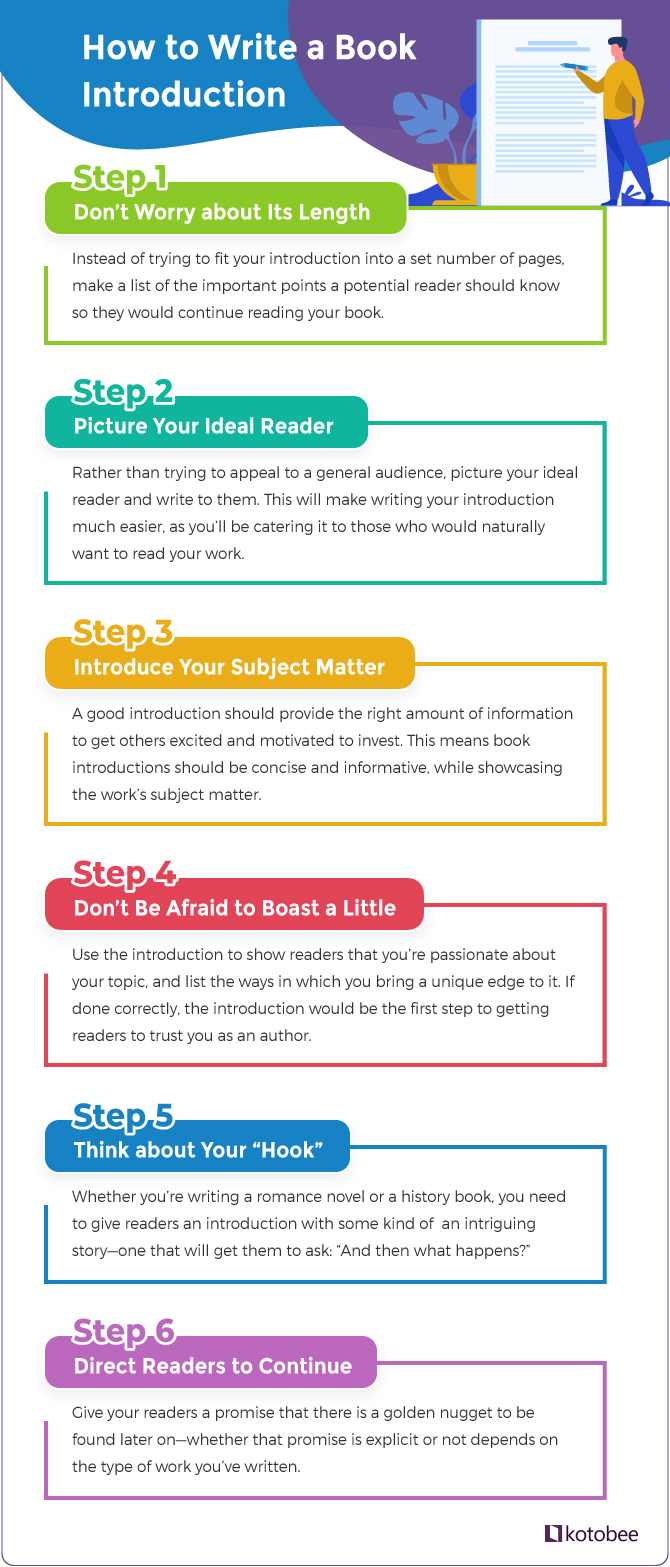
Introduction for Fiction Books Checklist
The steps provided above will work for any type of book introduction. Nevertheless, here are some additional tips that are specific to fiction book introductions.
For the purpose of this section, we have chosen novels as an example of works of fiction. For each tip, we’ve put together a list of questions for you to check off while writing to make sure your introduction is airtight.
1. Establishing the Setting and Mood
- Where and in what time period is the novel set?
- Does your introduction give readers a strong sense of this setting ?
- Is it clear what the general mood of the story is? (Is it dark? Mysterious? Romantic?)
- What details did you use in your introduction to convey this mood?
2. Indicating Your Narrator
- Who is the narrator in your novel? Is it one of the characters? Or are you using a third-person omniscient or third-person limited narrator?
- What kind of tone does your narrator adopt?
- Does your narrator’s voice effectively draw in the reader?
3. Introducing Your Characters
- Have you introduced at least one of your main characters in the introduction?
- How does your introduction make that character memorable?
4. Showing or Foreshadowing the Main Conflict
- Does your introduction hint at the novel’s main conflict ?
- Is the conflict “juicy” enough to make readers want to read on?
- Does your introduction give the readers a sense of how the conflict will affect the main character(s)?
5. Exhibiting or Hinting at the Main Themes
- Can the readers attain an overview of the novel’s potential themes through your introduction?
- Does the introduction effectively use the literary elements of setting, plot, conflict, and foreshadowing to establish the main themes of the novel?
6. Hooking the Reader
- Does the introduction leave readers with the question: “What happens next?”
Download Now: Fiction Book Introduction Checklist
Introduction for Nonfiction books Checklist
A good nonfiction introduction will aim to capture the reader’s mind just like a good fiction introduction would. Below is a list of tips and questions tailored specifically to suit works of nonfiction. In this case, we’ll use a standard academic monograph as an example.
1. Introducing the Topic
- Does the introduction dive straight into the book’s main subject matter?
- Does the reader know what he/she can expect to learn from this book?
- Is it made clear why this topic is relevant and important?
2. Outlining the Content
- Does the introduction provide a clear outline of what each chapter will discuss?
- Does it provide enough information about the book’s research methodology ?
3. Asserting the Author’s Credibility
- Does the introduction justify why you as the author are an authority on the subject matter discussed?
- Is the tone of the introduction assertive but also inviting, such that readers can feel a sense of trust and relatability?
4. Identifying a Problem
- Does the introduction present a problem that the readers can relate to?
- Does it clearly demonstrate the effects of that problem on our world today?
5. Making a Promise to the Reader
- Does the introduction motivate readers by making a promise to provide answers throughout the book?
- Is this promise crafted in a way that makes readers want to reach the conclusion of the book?
6. Showing Your Passion
- Does the introduction effectively convey your passion for your subject matter?
- Does it allow readers to see how important the topic is to you?
- Do you demonstrate a personal connection to your subject matter?
Download Now : Non-Fiction Book Introduction Checklist
Book Introduction Examples
You now have all the necessary tools to write that winning introduction. All that’s left now is some inspiration to get you going. Below are four samples from great introductions that are sure to help: two from nonfiction titles, and two from works of fiction.
On Identity by Amin Maalouf [Nonfiction]
The very first line of this introduction instantly conveys the author’s frustrated tone : “How many times” has he been asked to pick a side: French or Lebanese? The expressed frustration makes the author appear “human”, relatable. The reader is also immediately acquainted with the author’s problem : Who is he in the midst of all the languages and cultural traditions he has been exposed to over the years? And why must he choose just one “identity” and stick to it?
Maalouf’s introduction is also riddled with rhetorical questions that engage the reader, allowing them to question their own views, too. “Would I exist more authentically if I cut off a part of myself?” The reader becomes invested in the author’s struggle—probably because Maalouf’s ideal reader is someone who, like him, has questions about their identity in the face of multiculturalism.
What makes this introduction great is that despite the fact that Maalouf is evidently frustrated, he already has the solution: he is both Lebanese and American, and he is sure of it because “any other answer would be a lie.” The reader, therefore, trusts that Maalouf has already figured it out, and that his book will show exactly how he reached this conclusion.
Despite Maalouf’s frustration, which is there to mimic the reader’s own feelings of confusion, there is a promise of resolution that is yet to come. And thus the reader wants to carry on.
And Still the Music Plays by Graham Stokes [Nonfiction]
The power of this introduction stems from three main elements. Firstly, the author uses the very first line to explicitly state his reason for writing this book; namely, his “increasing wish to say more” about the effects of dementia on people’s lives.
Secondly, the author gives important background information about dementia and in doing so, sets out the main problem: that neuropathology has failed to explain certain important aspects of the disease. The author then shows how his book aims to provide a solution, which is by adopting a research methodology that focuses on the everyday experiences of people with dementia: “the ‘person-centered’ model.”
However, Stokes doesn’t get into the details of his method just yet; instead, he appeals to the reader’s sensibilities by adopting an empathetic tone towards his subject matter and making it relatable: “They were like you and me, and then seemingly inexplicably they were struck down.” The author directly addresses his ideal reader , “you,” and hooks them almost as if they don’t have a choice.
Finally, if the author were pitching this book to publishers, he would probably use the last sentence in the introduction’s second paragraph as his tagline : “Extraordinary stories about ordinary people.” Sold!
To Kill a Mockingbird by Harper Lee [Fiction]
It’s no surprise that Harper Lee’s To Kill a Mockingbird has been a part of many school curricula for years. What makes the opening of this novel brilliant is how the author manages to effortlessly throw the reader into the heart of the action . Through a flashback to a single event—Jem’s arm injury—the reader is given plenty of information about the setting (the American South), the narrator (Jem’s younger sister), and so many important characters , including Jem, Atticus, and Boo Radley.
Although it may initially seem overwhelming, the author is not simply rattling off a bunch of character names. Instead, she subtly hints at the mystery behind them. Who are the Ewells, and what role did they play in Jem’s accident? Who is Boo Radley, and what does it mean to have him “come out”? What is the significance of Simon Finch’s paddling up the Alabama river? These are all questions that will run through the reader’s mind, and the only way to get answers is to read on.
The art here lies in how the author uses the single occurrence of Jem’s accident to neatly tie together a complex story about racial prejudice and injustice. Thus, the reader is told to anticipate the novel’s climax , and to continue reading in order to find out how it happens.
The Yellow Wallpaper by Charlotte Perkins Gilman [Fiction]
The strength of this short story’s introduction lies in the simple , conversational way in which it reveals a whole lot of information. From the outset, we immediately find out a number of key things:
- The setting : The narrator and her husband are spending the summer away at a mansion.
- The mood : There is something eerie and mysterious about this place that has been let so cheaply and previously left unoccupied for so long.
- The conflict : The narrator is unwell and seems to be afraid to voice her thoughts out loud to her husband.
Talk about conciseness! Every word in Gilman’s introduction is packed with meaning and has an intentional purpose. The narrator and her husband’s tense relationship is immediately brought to the reader’s attention via the simple line: “but one expects that in marriage.” It’s almost like the narrator has given up on the entire institution.
The first-person narration serves to draw readers in, making them feel close to the protagonist and her point of view. Not only that, but the secrecy of the narrator’s writing (“I would not say it to a living soul”) conveys the sense of reading someone’s diary, or perhaps a secret letter, thus immersing the reader in this writer’s world.
Gilman’s introduction succinctly and masterfully draws readers in, making them already start to empathize with —or at least express interest in—her main character’s story.
Concluding Thoughts
It doesn’t matter if you’re working on the next bestselling novel, or on a book about birds of the Middle East—a well-crafted introduction is your book’s golden ticket. It’s a powerful sales tool and a great hook for people to keep reading your book, and now you have all the information you need to use it effectively.
Your ideal reader is out there, and a great introduction will convince them that yours is the book they should be taking home. All you have to do is start writing!
Making Use of Humor in Writing: Why and How
Best AI Writing Software in 2022
Top Plagiarism Checkers and Tools of 2022 [Compared]
Justin Allen
Thanks for sharing the blog. I am a Ph.D. student and also have an interest in writing. I will consider the information when I publish my first book.
You’re very welcome! We’re delighted to hear that you found our article helpful, especially as you pursue your Ph.D. and your interest in writing.
When you’re ready to publish your first book, feel free to revisit our resources or reach out if you have any questions or need guidance.
We wish you the best of luck with your academic and writing endeavors! 🙂
Leave a Reply Cancel reply
Save my name, email, and website in this browser for the next time I comment.
Currently you have JavaScript disabled. In order to post comments, please make sure JavaScript and Cookies are enabled, and reload the page. Click here for instructions on how to enable JavaScript in your browser.

Kotobee is the complete end-to-end ebook solution for you and your business. Export multiple formats. Deliver securely.
Create, publish, and sell ebooks with ease
Kotobee es la solución completa de ebooks de extremo a extremo para usted y su empresa.
Cree, publique y venda libros electrónicos con facilidad

Recent Posts
- How to Edit a Book for Publishing: Tips & Best Practices
- Book Royalties: What They Are and How to Earn the Best Rates
- Game-Based Learning: What It Is, and How to Apply It
- How to Publish a Book for Free and Maximize Your Profit
- How to Become a Best-Selling Author: 5 Secrets for Success
- Entries feed
- Comments feed
- WordPress.org
Have a language expert improve your writing
Run a free plagiarism check in 10 minutes, generate accurate citations for free.
- Knowledge Base
- How to write a literary analysis essay | A step-by-step guide
How to Write a Literary Analysis Essay | A Step-by-Step Guide
Published on January 30, 2020 by Jack Caulfield . Revised on August 14, 2023.
Literary analysis means closely studying a text, interpreting its meanings, and exploring why the author made certain choices. It can be applied to novels, short stories, plays, poems, or any other form of literary writing.
A literary analysis essay is not a rhetorical analysis , nor is it just a summary of the plot or a book review. Instead, it is a type of argumentative essay where you need to analyze elements such as the language, perspective, and structure of the text, and explain how the author uses literary devices to create effects and convey ideas.
Before beginning a literary analysis essay, it’s essential to carefully read the text and c ome up with a thesis statement to keep your essay focused. As you write, follow the standard structure of an academic essay :
- An introduction that tells the reader what your essay will focus on.
- A main body, divided into paragraphs , that builds an argument using evidence from the text.
- A conclusion that clearly states the main point that you have shown with your analysis.
Instantly correct all language mistakes in your text
Upload your document to correct all your mistakes in minutes

Table of contents
Step 1: reading the text and identifying literary devices, step 2: coming up with a thesis, step 3: writing a title and introduction, step 4: writing the body of the essay, step 5: writing a conclusion, other interesting articles.
The first step is to carefully read the text(s) and take initial notes. As you read, pay attention to the things that are most intriguing, surprising, or even confusing in the writing—these are things you can dig into in your analysis.
Your goal in literary analysis is not simply to explain the events described in the text, but to analyze the writing itself and discuss how the text works on a deeper level. Primarily, you’re looking out for literary devices —textual elements that writers use to convey meaning and create effects. If you’re comparing and contrasting multiple texts, you can also look for connections between different texts.
To get started with your analysis, there are several key areas that you can focus on. As you analyze each aspect of the text, try to think about how they all relate to each other. You can use highlights or notes to keep track of important passages and quotes.
Language choices
Consider what style of language the author uses. Are the sentences short and simple or more complex and poetic?
What word choices stand out as interesting or unusual? Are words used figuratively to mean something other than their literal definition? Figurative language includes things like metaphor (e.g. “her eyes were oceans”) and simile (e.g. “her eyes were like oceans”).
Also keep an eye out for imagery in the text—recurring images that create a certain atmosphere or symbolize something important. Remember that language is used in literary texts to say more than it means on the surface.
Narrative voice
Ask yourself:
- Who is telling the story?
- How are they telling it?
Is it a first-person narrator (“I”) who is personally involved in the story, or a third-person narrator who tells us about the characters from a distance?
Consider the narrator’s perspective . Is the narrator omniscient (where they know everything about all the characters and events), or do they only have partial knowledge? Are they an unreliable narrator who we are not supposed to take at face value? Authors often hint that their narrator might be giving us a distorted or dishonest version of events.
The tone of the text is also worth considering. Is the story intended to be comic, tragic, or something else? Are usually serious topics treated as funny, or vice versa ? Is the story realistic or fantastical (or somewhere in between)?
Consider how the text is structured, and how the structure relates to the story being told.
- Novels are often divided into chapters and parts.
- Poems are divided into lines, stanzas, and sometime cantos.
- Plays are divided into scenes and acts.
Think about why the author chose to divide the different parts of the text in the way they did.
There are also less formal structural elements to take into account. Does the story unfold in chronological order, or does it jump back and forth in time? Does it begin in medias res —in the middle of the action? Does the plot advance towards a clearly defined climax?
With poetry, consider how the rhyme and meter shape your understanding of the text and your impression of the tone. Try reading the poem aloud to get a sense of this.
In a play, you might consider how relationships between characters are built up through different scenes, and how the setting relates to the action. Watch out for dramatic irony , where the audience knows some detail that the characters don’t, creating a double meaning in their words, thoughts, or actions.
Receive feedback on language, structure, and formatting
Professional editors proofread and edit your paper by focusing on:
- Academic style
- Vague sentences
- Style consistency
See an example

Your thesis in a literary analysis essay is the point you want to make about the text. It’s the core argument that gives your essay direction and prevents it from just being a collection of random observations about a text.
If you’re given a prompt for your essay, your thesis must answer or relate to the prompt. For example:
Essay question example
Is Franz Kafka’s “Before the Law” a religious parable?
Your thesis statement should be an answer to this question—not a simple yes or no, but a statement of why this is or isn’t the case:
Thesis statement example
Franz Kafka’s “Before the Law” is not a religious parable, but a story about bureaucratic alienation.
Sometimes you’ll be given freedom to choose your own topic; in this case, you’ll have to come up with an original thesis. Consider what stood out to you in the text; ask yourself questions about the elements that interested you, and consider how you might answer them.
Your thesis should be something arguable—that is, something that you think is true about the text, but which is not a simple matter of fact. It must be complex enough to develop through evidence and arguments across the course of your essay.
Say you’re analyzing the novel Frankenstein . You could start by asking yourself:
Your initial answer might be a surface-level description:
The character Frankenstein is portrayed negatively in Mary Shelley’s Frankenstein .
However, this statement is too simple to be an interesting thesis. After reading the text and analyzing its narrative voice and structure, you can develop the answer into a more nuanced and arguable thesis statement:
Mary Shelley uses shifting narrative perspectives to portray Frankenstein in an increasingly negative light as the novel goes on. While he initially appears to be a naive but sympathetic idealist, after the creature’s narrative Frankenstein begins to resemble—even in his own telling—the thoughtlessly cruel figure the creature represents him as.
Remember that you can revise your thesis statement throughout the writing process , so it doesn’t need to be perfectly formulated at this stage. The aim is to keep you focused as you analyze the text.
Finding textual evidence
To support your thesis statement, your essay will build an argument using textual evidence —specific parts of the text that demonstrate your point. This evidence is quoted and analyzed throughout your essay to explain your argument to the reader.
It can be useful to comb through the text in search of relevant quotations before you start writing. You might not end up using everything you find, and you may have to return to the text for more evidence as you write, but collecting textual evidence from the beginning will help you to structure your arguments and assess whether they’re convincing.
To start your literary analysis paper, you’ll need two things: a good title, and an introduction.
Your title should clearly indicate what your analysis will focus on. It usually contains the name of the author and text(s) you’re analyzing. Keep it as concise and engaging as possible.
A common approach to the title is to use a relevant quote from the text, followed by a colon and then the rest of your title.
If you struggle to come up with a good title at first, don’t worry—this will be easier once you’ve begun writing the essay and have a better sense of your arguments.
“Fearful symmetry” : The violence of creation in William Blake’s “The Tyger”
The introduction
The essay introduction provides a quick overview of where your argument is going. It should include your thesis statement and a summary of the essay’s structure.
A typical structure for an introduction is to begin with a general statement about the text and author, using this to lead into your thesis statement. You might refer to a commonly held idea about the text and show how your thesis will contradict it, or zoom in on a particular device you intend to focus on.
Then you can end with a brief indication of what’s coming up in the main body of the essay. This is called signposting. It will be more elaborate in longer essays, but in a short five-paragraph essay structure, it shouldn’t be more than one sentence.
Mary Shelley’s Frankenstein is often read as a crude cautionary tale about the dangers of scientific advancement unrestrained by ethical considerations. In this reading, protagonist Victor Frankenstein is a stable representation of the callous ambition of modern science throughout the novel. This essay, however, argues that far from providing a stable image of the character, Shelley uses shifting narrative perspectives to portray Frankenstein in an increasingly negative light as the novel goes on. While he initially appears to be a naive but sympathetic idealist, after the creature’s narrative Frankenstein begins to resemble—even in his own telling—the thoughtlessly cruel figure the creature represents him as. This essay begins by exploring the positive portrayal of Frankenstein in the first volume, then moves on to the creature’s perception of him, and finally discusses the third volume’s narrative shift toward viewing Frankenstein as the creature views him.
Some students prefer to write the introduction later in the process, and it’s not a bad idea. After all, you’ll have a clearer idea of the overall shape of your arguments once you’ve begun writing them!
If you do write the introduction first, you should still return to it later to make sure it lines up with what you ended up writing, and edit as necessary.
The body of your essay is everything between the introduction and conclusion. It contains your arguments and the textual evidence that supports them.
Paragraph structure
A typical structure for a high school literary analysis essay consists of five paragraphs : the three paragraphs of the body, plus the introduction and conclusion.
Each paragraph in the main body should focus on one topic. In the five-paragraph model, try to divide your argument into three main areas of analysis, all linked to your thesis. Don’t try to include everything you can think of to say about the text—only analysis that drives your argument.
In longer essays, the same principle applies on a broader scale. For example, you might have two or three sections in your main body, each with multiple paragraphs. Within these sections, you still want to begin new paragraphs at logical moments—a turn in the argument or the introduction of a new idea.
Robert’s first encounter with Gil-Martin suggests something of his sinister power. Robert feels “a sort of invisible power that drew me towards him.” He identifies the moment of their meeting as “the beginning of a series of adventures which has puzzled myself, and will puzzle the world when I am no more in it” (p. 89). Gil-Martin’s “invisible power” seems to be at work even at this distance from the moment described; before continuing the story, Robert feels compelled to anticipate at length what readers will make of his narrative after his approaching death. With this interjection, Hogg emphasizes the fatal influence Gil-Martin exercises from his first appearance.
Topic sentences
To keep your points focused, it’s important to use a topic sentence at the beginning of each paragraph.
A good topic sentence allows a reader to see at a glance what the paragraph is about. It can introduce a new line of argument and connect or contrast it with the previous paragraph. Transition words like “however” or “moreover” are useful for creating smooth transitions:
… The story’s focus, therefore, is not upon the divine revelation that may be waiting beyond the door, but upon the mundane process of aging undergone by the man as he waits.
Nevertheless, the “radiance” that appears to stream from the door is typically treated as religious symbolism.
This topic sentence signals that the paragraph will address the question of religious symbolism, while the linking word “nevertheless” points out a contrast with the previous paragraph’s conclusion.
Using textual evidence
A key part of literary analysis is backing up your arguments with relevant evidence from the text. This involves introducing quotes from the text and explaining their significance to your point.
It’s important to contextualize quotes and explain why you’re using them; they should be properly introduced and analyzed, not treated as self-explanatory:
It isn’t always necessary to use a quote. Quoting is useful when you’re discussing the author’s language, but sometimes you’ll have to refer to plot points or structural elements that can’t be captured in a short quote.
In these cases, it’s more appropriate to paraphrase or summarize parts of the text—that is, to describe the relevant part in your own words:
Here's why students love Scribbr's proofreading services
Discover proofreading & editing
The conclusion of your analysis shouldn’t introduce any new quotations or arguments. Instead, it’s about wrapping up the essay. Here, you summarize your key points and try to emphasize their significance to the reader.
A good way to approach this is to briefly summarize your key arguments, and then stress the conclusion they’ve led you to, highlighting the new perspective your thesis provides on the text as a whole:
If you want to know more about AI tools , college essays , or fallacies make sure to check out some of our other articles with explanations and examples or go directly to our tools!
- Ad hominem fallacy
- Post hoc fallacy
- Appeal to authority fallacy
- False cause fallacy
- Sunk cost fallacy
College essays
- Choosing Essay Topic
- Write a College Essay
- Write a Diversity Essay
- College Essay Format & Structure
- Comparing and Contrasting in an Essay
(AI) Tools
- Grammar Checker
- Paraphrasing Tool
- Text Summarizer
- AI Detector
- Plagiarism Checker
- Citation Generator
By tracing the depiction of Frankenstein through the novel’s three volumes, I have demonstrated how the narrative structure shifts our perception of the character. While the Frankenstein of the first volume is depicted as having innocent intentions, the second and third volumes—first in the creature’s accusatory voice, and then in his own voice—increasingly undermine him, causing him to appear alternately ridiculous and vindictive. Far from the one-dimensional villain he is often taken to be, the character of Frankenstein is compelling because of the dynamic narrative frame in which he is placed. In this frame, Frankenstein’s narrative self-presentation responds to the images of him we see from others’ perspectives. This conclusion sheds new light on the novel, foregrounding Shelley’s unique layering of narrative perspectives and its importance for the depiction of character.
Cite this Scribbr article
If you want to cite this source, you can copy and paste the citation or click the “Cite this Scribbr article” button to automatically add the citation to our free Citation Generator.
Caulfield, J. (2023, August 14). How to Write a Literary Analysis Essay | A Step-by-Step Guide. Scribbr. Retrieved April 2, 2024, from https://www.scribbr.com/academic-essay/literary-analysis/
Is this article helpful?

Jack Caulfield
Other students also liked, how to write a thesis statement | 4 steps & examples, academic paragraph structure | step-by-step guide & examples, how to write a narrative essay | example & tips, unlimited academic ai-proofreading.
✔ Document error-free in 5minutes ✔ Unlimited document corrections ✔ Specialized in correcting academic texts
- Non-Fiction
- Author’s Corner
- Reader’s Corner
- Writing Guide
- Book Marketing Services
- Write for us
Readers' Corner
How To Write An Essay Introduction: A Step-by-Step Guide
Table of contents, determine your essay statement:, hook the reader:, provide overview and preview:, crafting your outline:, edit and revise:, conclusion:.
Writing a strong introduction is one of the most important parts of crafting a polished essay. The opening paragraph sets the tone for your argument and piques the reader’s interest right from the start. This article will break down the step-by-step process for writing an effective essay introduction, including determining your essay statement, hooking the reader with an attention-grabbing opening, providing an overview of the essay, and revising your writing. Relevant examples will be provided for each step to illustrate how it can be implemented. By following these guidelines and examples to write essay introduction, you’ll be well on your way to starting your essay off strong.
The foundation of any solid academic paper or essay comes from having a clear, focused statement. Your statement should present the central argument you will explore and prove over the course of the essay. It conveys the perspective or conclusion you have reached regarding the topic at hand and contains the key points or ideas you will analyse in your body paragraphs.
For example, let’s say the topic is police brutality in America . A weak statement might be:
“This paper will discuss police brutality.”
This statement is too broad and does not take a clear stance. A stronger statement could be:
“This paper argues that systemic racism within American police departments has led to disproportionate violence against people of colour and proposes policy reforms such as mandatory de-escalation training, community oversight boards, and bans on chokeholds as ways to promote racial justice and restore trust in law enforcement.”
This statement is clearer, narrower, and takes a definitive position that can be supported over the course of the essay. It outlines the key points that will be analysed in the body paragraphs. Some tips for crafting a strong essay statement include:
- Narrow your topic to a single, manageable claim rather than a broad topic area. Ask yourself what specific point you want to make or prove.
- Keep your essay statement concise – usually one sentence that is between 10-15 words. Short, sweet, and right to the point is best.
- Use definitive language that takes a stance rather than presenting both sides. State your perspective overtly rather than hinting at it.
- Include elements that will structure your essay, such as key terms, concepts, individuals, events, or works that you will analyse in depth.
- Place the statement at the end of your introductory paragraph so readers have context before your central argument.
- Check that your statement gives a sense of direction for the essay by tying back to the prompt or guiding question if one was provided. Make sure any contents or claims mentioned in the statement are logically argued and proven over the body paragraphs.
With conscious effort focused on these strategies, you can craft a crystal clear statement that sets an achievable roadmap for your essay’s structure and analysis. It’s the linchpin that holds everything together.
Now that you have identified your central argument, the next important element is hooking the reader right away with an engaging opening sentence. Your essay introduction only has a few short lines to capture attention and establish a compelling tone – so make them count!
For example, in an essay analysing the themes of power and corruption in George Orwell’s Animal Farm , you may begin with:
“While on the surface a simple fable about barnyard insurrection, George Orwell’s Animal Farm contains deeper parallels to the corruption of the Russian Revolution that have cemented its status as a classic of political satire.”
This opening directly references the subject work and piques curiosity about its deeper significance. Another essay, on debates over police funding, may start with:
“In June of 2020, as national protests against police brutality erupted across America, the Minneapolis City Council made a bold claim – they would dismantle the police department entirely.”
This current events reference establishes relevance while surprising readers on where the introduction may lead. Some other attention-grabbing techniques may include:
- Quotes, statistics or facts: Drop an interesting snippet of evidence right off the bat to surprise and intrigue readers.
- Rhetorical questions: Pose an open-ended query to make readers think and get them invested in the topic.
- Vivid scenarios: Paint a picture with descriptive details to transport readers visually into your world.
- Counterintuitive claims: Challenge conventional wisdom in a thought-provoking manner from the start.
- Relevant anecdotes: Share a brief personal story that builds empathy and relevance.
- Current events: Reference a newsworthy development to show timeliness of discussion.
- Humour: Start off on a lighter note if your tone allows for a bit of levity to capture smiles.
- Definitions: Clarify how you are using important terms in an original way.
The goal is to pique natural human curiosity by teasing just enough context without giving everything away. Make readers want to lean in and keep reading to learn more. With practice, you’ll develop your own signature style for captivating opener sentences tailored to your voice and content area.
After generating initial intrigue, use the next couple lines of your introductory paragraph to offer readers direction about where you aim to lead them. Provide a brief overview of key facts and background necessary to establish context for the topic. You can state the main themes, schools of thought, influential figures, opposing viewpoints or any other defining characteristics that help orient readers. Moreover, it’s helpful to give a quick preview of how the remainder of your paper is structured by stating the main supporting points and ideas you will expand upon in subsequent paragraphs. This overview transitions the reader smoothly into the body while retaining suspense about which evidence or analyses might surprise them along the way. You can also state the main themes or ideas that will structure your paper by saying something like:
“This paper examines three prevailing schools of thought on the debate, analyses the flawed assumptions behind popular arguments, and ultimately argues that sustainable policy reforms are necessary to make progress.”
A quick preview helps transition the reader into the body of the essay while retaining suspense about how your unique analysis and evidence will unfold. It gives them direction without revealing all your cards.
For a humanities essay on morality in John Steinbeck’s Of Mice and Men, an overview may be:
“This essay explores how Steinbeck portrays the human need for dignity and companionship through the lens of 1930s migrant work. It analyses the complex relationships between George, Lennie, and other characters to ultimately argue Steinbeck uses their plight to comment on the dehumanizing realities of the Great Depression.”
Providing a lightly detailed synopsis serves as a useful roadmap and entices continued learning without “spoiling” your full analysis and argumentative strategies still to unfold. It gives structure without giving everything away too quickly. Try to keep this final sentence of your introductory paragraph under 2-3 concise sentences for optimal impact and flow.
As highlighted in the previous sections, it’s crucial your introduction tightly links back to your overall essay’s content and fulfils its signposting purpose. That’s why outlining both your introduction as well as the overall essay structure simultaneously is advised. Determine the flow of ideas for your body paragraphs first so the introduction can adequately mirror that intended progression and put forth clues about what’s to come without fully revealing your hand. Some tips for outlining:
- Jot down your main points, analyses and support in note form in whatever sequential order makes the most logical sense based on how the evidence flows together.
- Assign each chunk of information a corresponding letter or number to use as headings to structure the physical writing later.
- Consider how long you want each body paragraph or section to be – aim for Uniformity but allow flexibility if needed.
- Fill in any gaps where transitions between ideas may fall flat by inserting more research or brainstorming.
- Note sources and direct quotations or examples you plan to incorporate with their corresponding place in the outline.
- Leave space after each point to type out the full paragraphs once you begin physically writing up the essay.
For example, an outline analysing political themes in Shakespeare’s Macbeth may group as:
I. Introduction
Statement: Shakespeare uses…to critique early modern politics etc.
II. Royal Misconduct
A. Ambition
- Quotes on Lady Macbeth’s speech
- Examples of Macbeth’s soliloquies
B. Ethical Failures
- Scene of murdering Duncan
- Banquo’s ghost
III. Downfall of a Leader
A. Isolation of a Tyrant
- Macbeth’s madness
- Example of the witches’ final prophecies
B. Fall from Grace
- Macduff’s return
- Scene of final battle
A carefully mapped outline lays the essential roadmap for your essay and ensures each new section builds cohesively upon the last. Returning to review your essay introduction paragraph against this master plan before finalizing it is a great way to guarantee it delivers on signposting duties effectively.
Like any other part of the writing process, allow time for careful editing and revising your introduction. The advice of trusted writing consultants or professors can highlight areas where clarity or flow could be improved. When editing:
- Evaluate the strength and focus of your statement. Revise as needed.
- Check introductory paragraph follows a logical progression from start to finish.
- Ensure any defined terms, names or background are clearly explained at first mention.
- Evaluate your opening sentence – is it still an effective hook or could a stronger technique be swapped in?
- Trim any excess wordiness that does not directly serve orienting the reader.
- Proofread spelling, grammar punctuation to eliminate issues that break reading flow.
- Consider reworking sentence structure for variances and eloquent phrasing.
- Have your introduction mimic the organization and tone of the essay to follow.
Evaluate whether it successfully previews your paper’s substantive content and leave enough for the reader to discover on their own. Getting constructive outside eyes on your introduction is invaluable for perfecting its impact and quality prior to submission. Keep refining until you’re proud of each elegant, cohesive element!
In conclusion, crafting an introduction is as much an art as a strategic process. With practice and conscious attention to these elements, your opening paragraphs can set the stage for a strong essay that grabs reader attention from the very start and invites them into your perspective. Remember – determination of a focused statement that ties back to the essay’s key aims, hooking curiosity with an intriguing lead sentence, orienting with context and previews of what’s to come, and allowing time for revision will set your work up for success. Following these guidelines for writing an effective introduction lays the foundation for proficient academic and professional communications. Continue challenging yourself to develop your signature voice and writing excellence.
Recent Articles
Knowing who i am by a g allen, fred calvert, thomas j gebhardt iii, dissonance, volume i: reality by aaron ryan, related posts:, foolproof steps – how to hire the right e-book writer for your needs, maximizing your roi – how creative writing services can boost your business, writing tips from stephen king, best essay checkers for 2024: free and paid options, how to market an audiobook, leave a reply cancel reply.
Save my name, email, and website in this browser for the next time I comment.
Stay on Top - Get the daily news in your inbox
Subscribe to our newsletter.
To be updated with all the latest news, offers and special announcements.
Recent Posts
Maestro maestro by fred calvert, the ideal entrepreneur by rahul agarwal, popular category.
- Book Review 628
- Reader's Corner 408
- Author's Corner 182
- Author Interview 176
- Book List 111
- Mystery Thriller 96
- Historical Fiction 80
The Bookish Elf is your single, trusted, daily source for all the news, ideas and richness of literary life. The Bookish Elf is a site you can rely on for book reviews, author interviews, book recommendations, and all things books.
Contact us: [email protected]
Essay Introduction Examples
#scribendiinc
Written by Scribendi
Always have a road map for an essay introduction . Having a strong essay introduction structure is critical to a successful paper. It sets the tone for the reader and interests them in your work. It also tells them what the essay is about and why they should read it at all.
It shouldn't leave the reader confused with a cliffhanger at the end. Instead, it should generate interest and guide the reader to Chapter One. Using the right parts of an essay introduction can help with this.
Check out an effective essay introduction structure below. It’s a road map for writing an essay—just like the parts of essay introductions are road maps for readers.
Essay Introduction Structure
Attention-grabbing start
Outline of argument
Thesis statement
Some academics find the beginning the most difficult part of writing an essay , so our editors have created some examples of good essay introductions to guide you. Let's take a look at the samples below to see how the essay introduction structures come together.
If you are unsure about your paper, our essay editors would love to give you some feedback on how to write an essay introduction.
[1] According to Paul Ratsmith, the tenuous but nonetheless important relationship between pumpkins and rats is little understood: "While I've always been fascinated by this natural kinship, the connection between pumpkins and rats has been the subject of few, if any, other studies" (2008). [2] Ratsmith has been studying this connection, something he coined "pumpkinology," since the early 1990s. He is most well known for documenting the three years he spent living in the wild among pumpkins and rats. [3] Though it is a topic of little recent interest, the relationship has been noted in several ancient texts and seems to have been well understood by the Romans. Critics of Ratsmith have cited poor science and questionable methodology when dismissing his results, going so far as to call pumpkinology "rubbish" (de Vil, 2009), "stupid" (Claw, 2010), and "quite possibly made up" (Igthorn, 2009). [4] Despite these criticisms, there does appear to be a strong correlation between pumpkin patches and rat populations, with Ratsmith documenting numerous pumpkin–rat colonies across North America, leading to the conclusion that pumpkins and rats are indeed "nature's best friends" (2008).
Let's break down this example of a good essay introduction structure. The beginning hooks our attention from the get-go in section one. This is because it piques our curiosity. What is this strange relationship? Why has no one studied it? Then, section two gives us context for the topic. Ratsmith is an expert in a controversial field: pumpkinology. It's the study of the connection between pumpkins and rats.
The second half of the paragraph also demonstrates why this is a good essay introduction example. Section three gives us the main argument: the topic is rarely studied because critics think Ratsmith's work is "rubbish," but the relationship between pumpkins and rats has ancient roots. Then section four gives us the thesis statement: Ratsmith's work has some merit.
The parts of an essay introduction help us chart a course through the topic. We know the paper will take us on a journey. It's all because the author practiced how to write an essay introduction.
Let’s take a look at another example of a good essay introduction.
[1] Societies have long believed that if a black cat crosses one's path, one might have bad luck—but it wasn't until King Charles I's black cat died that the ruler's bad luck began (Pemberton, 2018). [2] Indeed, for centuries, black cats have been seen as the familiars of witches—as demonic associates of Satan who disrespect authority (Yuko, 2021). Yet, they have also been associated with good luck, from England's rulers to long-distance sailors (Cole, 2021). [3] This essay shows how outdated the bad luck superstition really is. It provides a comprehensive history of the belief and then provides proof that this superstition has no place in today's modern society. [4] It argues that despite the prevailing belief that animals cause bad luck, black cats often bring what seems to be "good luck" and deserve a new reputation.
This example of a good essay introduction pulls us in right away. This is because section one provides an interesting fact about King Charles I. What is the story there, and what bad luck did he experience after his cat passed away? Then, section two provides us with general information about the current status of black cats. We understand the context of the essay and why the topic is controversial.
Section three then gives us a road map that leads us through the main arguments. Finally, section four gives us the essay's thesis: "black cats often bring what seems to be 'good luck' and deserve a new reputation."
Still feeling unsure about how to write an essay introduction? Here's another example using the essay introduction structure we discussed earlier.
[1] When the Lutz family moved into a new house in Amityville, New York, they found themselves terrorized by a vengeful ghost (Labianca, 2021). Since then, their famous tale has been debunked by scientists and the family themselves (Smith, 2005). [2] Yet ghost stories have gripped human consciousness for centuries (History, 2009). Scientists, researchers, and theorists alike have argued whether ghosts are simply figments of the imagination or real things that go bump in the night. In considering this question, many scientists have stated that ghosts may actually exist. [3] Lindley (2017) believes the answer may be in the quantum world, which "just doesn’t work the way the world around us works," but "we don’t really have the concepts to deal with it." Scientific studies on the existence of ghosts date back hundreds of years (History, 2009), and technology has undergone a vast evolution since then (Lamey, 2018). State-of-the-art tools and concepts can now reveal more about ghosts than we've ever known (Kane, 2015). [4] This essay uses these tools to provide definitive proof of the existence of ghosts in the quantum realm.
This example of a good essay introduction uses a slightly different strategy than the others. To hook the reader, it begins with an interesting anecdote related to the topic. That pulls us in, making us wonder what really happened to the Lutzs. Then, section two provides us with some background information about the topic to help us understand. Many people believe ghosts aren't real, but some scientists think they are.
This immediately flows into section three, which charts a course through the main arguments the essay will make. Finally, it ends with the essay's thesis: there is definitive proof of the existence of ghosts in the quantum realm. It all works because the author used the parts of an essay introduction well.
For attention-grabbing introductions, an understanding of essay introduction structure and how to write an essay introduction is required.
Our essay introduction examples showing the parts of an essay introduction will help you craft the beginning paragraph you need to start your writing journey on the right foot.
If you'd like more personalized attention to your essay, consider sending it for Essay Editing by Scribendi. We can help you ensure that your essay starts off strong.
Image source: Prostock-studio/Elements.envato.com
Let’s Get Your Essay Ready to Wow an Audience
Hire one of our expert editors , or get a free sample, about the author.

Scribendi's in-house editors work with writers from all over the globe to perfect their writing. They know that no piece of writing is complete without a professional edit, and they love to see a good piece of writing transformed into a great one. Scribendi's in-house editors are unrivaled in both experience and education, having collectively edited millions of words and obtained numerous degrees. They love consuming caffeinated beverages, reading books of various genres, and relaxing in quiet, dimly lit spaces.
Have You Read?
"The Complete Beginner's Guide to Academic Writing"
Related Posts

Essay Writing: Traffic Signals for the Reader

How to Write a Great Thesis Statement

How to Write a Persuasive Essay

MLA Formatting and MLA Style: An Introduction
Upload your file(s) so we can calculate your word count, or enter your word count manually.
We will also recommend a service based on the file(s) you upload.
English is not my first language. I need English editing and proofreading so that I sound like a native speaker.
I need to have my journal article, dissertation, or term paper edited and proofread, or I need help with an admissions essay or proposal.
I have a novel, manuscript, play, or ebook. I need editing, copy editing, proofreading, a critique of my work, or a query package.
I need editing and proofreading for my white papers, reports, manuals, press releases, marketing materials, and other business documents.
I need to have my essay, project, assignment, or term paper edited and proofread.
I want to sound professional and to get hired. I have a resume, letter, email, or personal document that I need to have edited and proofread.
Prices include your personal % discount.
Prices include % sales tax ( ).

- Features for Creative Writers
- Features for Work
- Features for Higher Education
- Features for Teachers
- Features for Non-Native Speakers
- Learn Blog Grammar Guide Community Events FAQ
- Grammar Guide
Book Introductions: Hook Writers into a Story in 5 Steps (With Examples)

Hannah Yang

If you want readers to buy your book, it’s important to make a great first impression.
Your book's introduction should prove to the reader that this story can offer them what they’re looking for, whether that’s wisdom, entertainment, or anything in between.
So what are the different book introductions, and how do you write an effective one?
This article will explain how to write a fantastic book introduction that hooks your readers in .
What Is an Introduction in a Book or Story?
Great book introduction examples, 5 tips for writing the best book introductions, should you use different book introductions for different genres, conclusion on book introductions.
The introduction is the first section of a book.
In a nonfiction book, the introduction should show the reader why this author is an expert in this field and what the reader can expect to gain from this book.
In a fiction book, the introduction should grab the reader’s attention and set the tone for the rest of the story.
Either way, the introduction must convince a reader to invest time and money into reading this particular book, rather than all the other options in the bookstore.
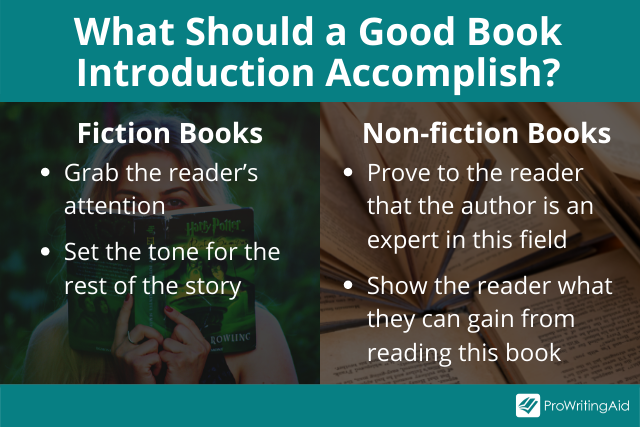
There are many types of book introductions, such as prefaces, forewords, and prologues. So before we jump into our advice for writing an introduction, let’s start with a quick overview of what these different types are.
Brief Explanation of a Preface
A preface is an introductory essay written by the author of a nonfiction book.
You can use the preface to explain why you’re the right person to write about this book’s specific subject matter.
You can mention your educational background, your life experience, your teaching experience, or any other credentials that will show readers you’re an expert in the field.
You can also talk about your motivations for writing this book. For example, if there was a specific event or situation that inspired you to explore this topic in greater depth, the preface is the right place to give your readers all the necessary context around how this book was formed.
Brief Explanation of a Foreword
A foreword, like a preface, is also an introductory essay at the beginning of a nonfiction book. Unlike a preface, however, a foreword is not written by the author of the book. Instead, it’s written by a different expert in the field.
The main purpose of a foreword is to lend extra credibility to the book. It’s a marketing tool, just like the blurbs from other authors that might be on the book’s cover. Readers will see this endorsement from a prominent figure as a vote of confidence in the book’s reliability or importance.
Forewords can also be used when a new edition of a previously published book releases in order to give the new edition a fresh perspective. For example, a new edition of a classic 20th-century book might come with a foreword from a modern expert to give context to modern readers.
Brief Explanation of a Prologue
A prologue is an introductory passage found at the beginning of fiction books. Not all fiction books have a prologue, but there are many reasons you might decide to include a prologue in your novel.
One common reason to include a prologue is to give the reader background information on events that take place before the main story begins.
For example, high fantasy novels often use a prologue to tell the reader the history of the world’s politics, or the prophecy that the hero will later fulfill, or something else along those lines.
You can also use a prologue to establish the tone of the book upfront and show readers what they can expect later in the story.
For example, in mystery and thriller books, authors might use an action-packed prologue to show readers that this will be an exciting and fast-paced book, even if the first chapters are slower and quieter.
Let’s look at some examples of some fantastic book introductions in each of the above categories.
The Preface of A Promised Land by Barack Obama
A Promised Land is a memoir that chronicles the presidency of U.S. President Barack Obama.
In the preface, Obama gives the context behind the book. He tells the reader that he started writing A Promised Land on his last flight on Air Force One, determined to create a lasting record of his time in office and show people what it’s like to be the president of the U.S.
This preface was so successful that it was widely excerpted and printed on its own, and it even reached people who didn’t read the rest of the book.
The Foreword of How to Win Friends and Influence People by Dale Carnegie (2022 edition)
The first edition of How to Win Friends and Influence People , a motivational guide to help people interact with others more effectively, was published in 1936. It quickly became one of the best-selling books of all time, with over 30 million copies sold worldwide.
In 2022, a new edition was released with a foreword written by Dale Carnegie’s daughter, Donna Carnegie, with updates to keep it fresh for modern readers. In the foreword, Donna Carnegie explains the impact her father’s book has made on the world and also describes the process she used to update the book while preserving his original vision.
The Prologue of Jurassic Park by Michael Crichton
Jurassic Park is a science fiction book about a theme park filled with dinosaurs. This book has two prologues, and each one is effective at accomplishing a different goal.
The first prologue is a simple, straightforward passage that summarizes the technology available on Earth by the time this book takes place.
It’s useful because it gives the reader the background information they need to understand how a place like Jurassic Park can exist.
The second prologue is a short, exciting scene in which a side character gets bitten by a mysterious monster.
After all, readers of Jurassic Park are expecting exciting scenes with dinosaurs. The problem is that the dinosaurs don’t show up many chapters into the story, after the main characters arrive at Jurassic Park.
That’s why this second prologue is so effective. It gives the readers a taste of the excitement they’re looking for and promises that there will be a terrifying monster in this book, which gives enough tantalizing foreshadowing to last the readers until the main characters get to the park.
So what exactly are the steps you can take to write an amazing book introduction, like the ones we looked at in the previous section?
Here are our top tips.
Tip 1: Write the Introduction Last
This tip may feel counterintuitive, but just because the introduction is the first part of the book, doesn't mean it has to be the first step in your writing process.
Writing introductions is one of the most challenging parts of being an author, since it can be daunting to take on a blank page. There's also a lot of pressure to make the opening pages perfect.
As a result, it’s often helpful to take the pressure off by saving the introduction for the very end, after you’ve written the rest of the book.
You also get the added benefit of knowing more about the book than you did before you started, so you can incorporate all that extra wisdom and knowledge into the introduction, as well.
Tip 2: Craft a Strong First Sentence
You should aim to intrigue readers as quickly as you can—ideally, in the very first sentence.
Here are some examples of intriguing first sentences in fiction:
- “It was her idea to tie up the nun.”—Patricia Engel, Infinite Country
- “Edward Fosca was a murderer.”—Alex Michaelides, The Maidens
- “Call me Ishmael.”—Herman Melville, Moby Dick
Here are some examples of intriguing first sentences in nonfiction:
- “Bob Dylan looks bored.”—Jonah Lehrer, Imagine: How Creativity Works
- “Thomas Jefferson was a lifelong and habitual fretter.”—Rachel Maddow, Drift: The Unmooring of American Military Power
- “In the fall of 1993, a man who would upend much of what we know about habits walked into a laboratory in San Diego for a scheduled appointment.”—Charles Duhigg, The Power of Habit
It’s not just about the first sentence, of course. You’ll have to keep the reader hooked throughout the rest of the book, too. But a great first sentence is a tool you shouldn’t overlook.
Tip 3: Identify and Address the Reader’s Needs
If you’re writing a nonfiction book, you can use the book introduction to describe the reader’s needs explicitly. Why would a reader pick up a book like yours? What problems in their lives could your book help them solve?
For example, if you’re writing an introductory guide to computer programming, you might say outright, “Perhaps you’ve spent years wanting to create your own website. Maybe you’ve even tried a programming language or two but never quite got the hang of it.”
In a fiction prologue, you should also address the reader’s needs, but in a more subtle way.
For example, an ideal reader who picks up a horror book might need to feel scared, thrilled, and excited.
An ideal reader who picks up a humor book might need to feel amused, cheered, and uplifted. Create a prologue or first chapter that promises to deliver on those needs.
Tip 4: Set the Tone for the Book
If your book is serious and somber, the introduction shouldn’t be flippant and witty. On the other hand, if your book is casual and conversational, the introduction shouldn’t be overly formal.
Make sure that the tone of the introduction matches the tone of the rest of the book, so you don’t surprise the reader later on.
Tip 5: Keep It Short and Sweet
Long introductions are the quickest way to bore a reader and tempt them to put the book down.
If you’re writing a prologue, for example, it’s important not to cram in every detail about the history of the world or the backstories of the main characters.
And if you’re writing a preface, you don’t need to describe your entire life story or summarize the entire book for the reader.
Pick and choose the most important and enticing details, the ones that the reader absolutely needs to know. Leave some open questions so the reader still wants to read more.
Different genres have different guidelines and conventions. As a result, it’s important to research the book introductions that are common in the specific genre you’re writing.
For example, prologues are common in science fiction and fantasy novels because these stories are often set on worlds different from our own.
The prologue is a great chance for the author to introduce readers to this new world and give them the context they need before the story begins.
On the other hand, literary novels don’t normally include prologues, instead choosing to jump right into the story.
That doesn’t mean you can’t use a prologue in a literary novel: it just means it might be a harder sell for readers and publishers, since they won’t be expecting to see one.
You can go to your local bookstore, find the shelf that your book would sit on after publication, and read the introductions of the other books on that shelf. This exercise will give you a sense of what’s common in your genre and how you can use or subvert those conventions.
There you have it—our complete guide for how to write a book introduction that will grab your reader's’ attention from the very first page.
Good luck, and happy writing!
Are you prepared to write your novel? Download this free book now:

The Novel-Writing Training Plan
So you are ready to write your novel. excellent. but are you prepared the last thing you want when you sit down to write your first draft is to lose momentum., this guide helps you work out your narrative arc, plan out your key plot points, flesh out your characters, and begin to build your world..

Be confident about grammar
Check every email, essay, or story for grammar mistakes. Fix them before you press send.
Hannah Yang is a speculative fiction writer who writes about all things strange and surreal. Her work has appeared in Analog Science Fiction, Apex Magazine, The Dark, and elsewhere, and two of her stories have been finalists for the Locus Award. Her favorite hobbies include watercolor painting, playing guitar, and rock climbing. You can follow her work on hannahyang.com, or subscribe to her newsletter for publication updates.
Get started with ProWritingAid
Drop us a line or let's stay in touch via :
- Link to facebook
- Link to linkedin
- Link to twitter
- Link to youtube
- Writing Tips
How to Write an Excellent Essay Introduction

3-minute read
- 27th September 2022
Love it or hate it, essay writing is a big part of student life. Writing a great essay might seem like a daunting task, especially when you’re staring at a blank document, but there are formulas you can follow to make sure your paper hits the mark.
When you plan your essays , don’t neglect your introduction! It might seem like a trivial part of the paper, but it can make it or break it. A badly written introduction can leave your reader feeling confused about the topic and what to expect from your essay.
To help your writing reach its full potential, we’ve put together a guide to writing an excellent essay introduction.
How to Write an Essay Introduction
An essay introduction has four main steps:
● Hook your reader
● Provide context
● Present your thesis statement
● Map your essay
Hook Your Reader
The first part of your introduction should be the hook. This is where you introduce the reader to the topic of the essay. A great hook should be clear, concise, and catchy. It doesn’t need to be long; a hook can be just one sentence.
Provide Context
In this section, introduce your reader to key definitions, ideas, and background information to help them understand your argument.
Present Your Thesis Statement
A thesis statement tells the reader the main point or argument of the essay. This can be just one sentence, or it can be a few sentences.
Map Your Essay
Before you wrap up your essay introduction, map it! This means signposting sections of your essay. The key here is to be concise. The purpose of this part of the introduction is to give your reader a sense of direction.
Here’s an example of an essay introduction:
Hook: Suspense is key for dramatic stories, and Shakespeare is well-known and celebrated for writing suspenseful plays.
Context: While there are many ways in which Shakespeare created suspension for his viewers, two techniques he used effectively were foreshadowing and dramatic irony. Foreshadowing is a literary device that hints at an event or situation that is yet to happen. Dramatic irony is a literary technique, originally used in Greek tragedy, by which the full significance of a character’s words or actions is clear to the audience or reader, although it is unknown to the character.
Find this useful?
Subscribe to our newsletter and get writing tips from our editors straight to your inbox.
Thesis statement: Foreshadowing and dramatic irony are two powerful techniques that Shakespeare used to create suspense in literature. These methods have been used to keep the reader intrigued, excited, or nervous about what is to come in many of his celebrated works.
Essay mapping: In this essay, I will be detailing how Shakespeare uses foreshadowing and dramatic irony to create suspense, with examples from Romeo and Juliet and Othello.
Pro tip: Essays take twists and turns. We recommend changing your introduction as necessary while you write the main text to make sure it fully aligns with your final draft.
Proofread and Editing
Proofreading is an essential part of delivering a great essay. We offer a proofreading and editing service for students and academics that will provide you with expert editors to check your work for any issues with:
● Grammar
● Spelling
● Formatting
● Tone
● Audience
● Consistency
● Accuracy
● Clarity
Want 500 words of your work proofread completely free of charge?
Share this article:
Post A New Comment
Got content that needs a quick turnaround? Let us polish your work. Explore our editorial business services.
What is a content editor.
Are you interested in learning more about the role of a content editor and the...
4-minute read
The Benefits of Using an Online Proofreading Service
Proofreading is important to ensure your writing is clear and concise for your readers. Whether...
2-minute read
6 Online AI Presentation Maker Tools
Creating presentations can be time-consuming and frustrating. Trying to construct a visually appealing and informative...
What Is Market Research?
No matter your industry, conducting market research helps you keep up to date with shifting...
8 Press Release Distribution Services for Your Business
In a world where you need to stand out, press releases are key to being...
How to Get a Patent
In the United States, the US Patent and Trademarks Office issues patents. In the United...

Make sure your writing is the best it can be with our expert English proofreading and editing.
Awesome Guide on How to Write an Essay Introduction

'I'd like to recall the day I nearly burned myself in flames in my automobile while going 250 mph and escaping the police'. – Thankfully, we don't have a story like that to relate to, but we bet we piqued your interest.
That's what we refer to as an efficient hook. Fundamentally, it's an attention-grabbing first sentence that piques an audience's interest and encourages them to keep reading. While writing an essay, a strong hook in essay introductions is essential.
Delve into the article if you're wondering how to start an essay with a strong introduction. This is the ultimate guide for writing the parts of a introduction paragraph from our custom dissertation writing service to engage your readers.
Introduction Definition
The introduction paragraph, to put it simply, is the first section of an essay. Thus, when reading your essay, the reader will notice it right away. What is the goal of an opening paragraph? There are two things that an excellent introduction achieves. It initially informs the reader on the subject of your work; in other words, it should describe the essay's topic and provide some background information for its main point. It must also spark readers' interest and persuade them to read the remainder of your article.
To provide you with essay writing services , we only need your paper requirements to create a plagiarism-free paper on time.
How Long Should an Introduction Be
Typically, there are no strict restrictions on how long an opening paragraph should be. Professional essay writers often shape the size of it with the paper's total length in mind. For instance, if you wonder how to make introduction in essay with five paragraphs, keep your introductory sentence brief and fit it inside a single section. But, if you're writing a longer paper, let's say one that's 40 pages, your introduction could need many paragraphs or even be pages long.
Although there are no specific requirements, seasoned writers advise that your introduction paragraph should account for 8% to 9% of your essay's overall word length.
And, if you place an order on our coursework writing services , we will certainly comply with your introduction length requirements.
What Makes a Good Introduction
All of the following criteria should be fulfilled by a strong opening sentence:
- Start your introduction on an essay with a catchy sentence that draws the reader in.
- It needs to include baseline information about your subject.
- This should give readers a sense of the main argument(s) that your essay will address.
- It must include all necessary information on the setting, locations, and chronological events.
- By the end of your introduction, make a precise remark that serves as your essay's thesis.
What Are the 3 Parts of an Introduction Paragraph
So, what should be in a introduction paragraph? The introduction format essay has three sections: a hook, connections, and a thesis statement. Let's examine each component in more depth.

Part 1: Essay Hook
A hook is among the most effective parts of a introduction paragraph to start an essay. A strong hook will always engage the reader in only one sentence. In other words, it is a selling point.
Let's now address the query, 'how to make an essay introduction hook interesting?'. Well, to create a powerful hook, you can employ a variety of techniques:
- A shocking fact
- An anecdote
- A short summary
And here is what to avoid when using a hook:
- Dictionary definitions
- Generalizations
- Sweeping statements that include words like 'everywhere,' 'always,' etc.
Once you've established a strong hook, you should give a general outline of your major point and some background information on the subject of your paper. If you're unsure how to write an introduction opening, the ideal approach is to describe your issue briefly before directing readers to particular areas. Simply put, you need to give some context before gradually getting more specific with your opinions.
The 5 Types of Hooks for Writing
Apart from the strategies mentioned above, there are even more types of hooks that can be used:
- A Common Misconception — a good trick, to begin with, to claim that something your readers believe in is false.
Example: 'Although many falsely believe that people working from home are less productive – employees who get such work-life benefits generally work harder.'
- Statistics — Statistical facts may provide a great hook for argumentative essays and serious subjects focusing on statistics.
Example: 'A recent study showed that people who are satisfied with their work-life balance work 21% harder and are 33% more likely to stay at the same company.'
- Personal Story — sometimes, personal stories can be an appropriate hook, but only if they fit into a few brief sentences (for example, in narrative essays).
Example: 'When I had my first work-from-home experience, I suddenly realized the importance of having a good work-life balance; I saw plenty of the benefits it can provide.'
- Scenes — this type of hook requires making the readers imagine the things you are writing about. It is most suitable when used in descriptive and narrative essays.
Example: 'Imagine you could have as much free time as you wish by working or studying from home—and spend more time with your loved ones.'
- Thesis Statement — when unsure how to do an essay introduction, some writers start directly with their thesis statement. The main trick here is that there is no trick.
Example: 'I strongly believe there is a direct correlation between a healthy work-life balance and productivity in school or at work.'
Part 2: Connections
Give readers a clearer sense of what you will discuss throughout your article once you have given a hook and relevant background information about your essay topic. Briefly mentioning your main points in the same sequence in which you will address them in your body paragraphs can help your readers progressively arrive at your thesis statement.
In this section of your introduction, you should primarily address the following questions:
You may make sure that you are giving your readers all the information they need to understand the subject of your essay by responding to each of these questions in two to three lines. Be careful to make these statements brief and to the point, though.
Your main goal is gradually moving from general to specific facts about your subject or thesis statement. Visualize your introduction as an upside-down triangle to simplify the essay writing process. The attention-grabbing element is at the top of this triangle, followed by a more detailed description of the subject and concluding with a highly precise claim. Here is some quick advice on how to use the 'upside-down triangle' structure to compose an essay introduction:
- Ensure that each subsequent line in your introduction is more focused and precise. This simple method will help you progressively introduce the main material of your piece to your audience.
- Consider that you are writing a paper on the value of maintaining a healthy work-life balance. In this situation, you may start with a query like, 'Have you ever considered how a healthy work-life balance can affect other areas of your life?' or a similar hook. Next, you could proceed by giving broad factual information. Finally, you could focus your topic on fitting your thesis statement.
Part 3: The Thesis Statement
If you're unsure of the ideal method to create an introduction, you should be particularly attentive to how you phrase your thesis statement.
The thesis of your work is, without a doubt, the most crucial section. Given that the thesis statement of your piece serves as the foundation for the entire essay, it must be presented in the introduction. A thesis statement provides readers with a brief summary of the article's key point. Your main assertion is what you'll be defending or disputing in the body of your essay. An effective thesis statement is often one sentence long, accurate, exact, unambiguous, and focused. Your thesis should often be provided at the end of your introduction.
Here is an example thesis statement for an essay about the value of a proper work-life balance to help you gain a better understanding of what a good thesis should be:
Thesis Statement Example: 'Creating flexible and pleasant work schedules for employees can help them have a better work-life balance while also increasing overall performance.'
Catchy Introductions for Different Essay Types
Although opening paragraphs typically have a fixed form, their language may vary. In terms of academic essays, students are often expected to produce four primary intro to essay examples. They include articles that are analytical, argumentative, personal, and narrative. It is assumed that different information should appear in these beginning paragraphs since the goals of each sort of essay change. A thorough overview of the various paper kinds is provided below, along with some good essay introduction samples from our argumentative essay writers:
Narrative Introduction
- The writer of a narrative essay must convey a story in this style of writing. Such essays communicate a story, which distinguishes them from other essay types in a big way.
- Such a paper's hook will often be an enticing glimpse into a specific scene that only loosely links to the thesis statement. Additionally, when writing such an essay, a writer should ensure that every claim included in the introduction relates to some important moments that have significantly impacted the story's outcome.
- The thesis in narrative writing is usually the theme or main lesson learned from the story.
Narrative introduction example: 'My phone rang, and my mother told me that Dad had suffered a heart attack. I suddenly experienced a sense of being lifted out from under me by this immaculately carpeted flooring. After making it through, Dad left me with a sizable collection of lessons. Here are three principles that I know dad would have wanted me to uphold...'
Still Can't Think of a Perfect Intro?
When assigned to write an essay, students end up with a ton of questions, including 'How to structure an essay?', 'How to choose a good topic?'. Here at EssayPro, we employ only the best essay writers who are committed to students’ success.
Analytical Introduction
- Analytical essay introduction format is another popular type. In contrast to a narrative paper, an analytical paper seeks to explore an idea and educate the reader about a topic.
- Three important facts that support the analytical premise should be included in the middle section of the introduction.
- A well-researched and well-thought-out claim will form a wonderful thesis because the main goal of this paper is to study the topic and educate readers. It's crucial to remember that this assertion shouldn't initially have any real weight. Although it will still be theoretical, it has to be articulated practically.
Analytical introduction example: “... Hence even though presidents, CEOs, and generals still have their daily schedules full of economic crises and military conflicts, on the cosmic scale of history humankind can lift its eyes up and start looking towards new horizons. If we bring famine, plague, and war under control, what will replace them at the top of the human agenda? Like firefighters in a world without fire, so humankind in the twenty-first century needs to ask itself an unprecedented question: what are we going to do with ourselves? What will demand our attention and ingenuity in a healthy, prosperous, and harmonious world? In a healthy, prosperous, and harmonious world, what will demand our attention and ingenuity? This question becomes doubly urgent given the immense new powers that biotechnology and information technology are providing us with. What will we do with all that power? ...” Homo Deus: A Brief History of Tomorrow, Yuval Noah Harari
Persuasive Introduction
- To persuade readers of anything is the sole goal of persuasive essay writing. This may be accomplished using persuasive strategies like ethos, pathos, and logos.
- A hook statement for this paper may be anything from a fascinating fact to even comedy. You can use whatever technique you choose. The most crucial advice is to ensure your hook is in line with your thesis and that it can bolster further justifications.
- Generally speaking, a persuasive essay must include three supporting facts. Hence, to gradually lead readers to the major topic of your paper, add a quick summary of your three arguments in your introduction.
- Last, the thesis statement should be the main claim you will be disputing in this paper. It should be a brief, carefully thought-out, and confident statement of your essay's major argument.
Persuasive introduction example: 'Recycling waste helps to protect the climate. Besides cleaning the environment, it uses waste materials to create valuable items. Recycling initiatives must be running all around the world. ...'
Personal Introduction
- The final sort of academic writing that students frequently encounter is a personal essay. In principle, this essay style is creative nonfiction and requires the author to reflect on personal experiences. The goals of such a paper may be to convey a story, discuss the lessons that certain incidents have taught you, etc. This type of writing is unique since it is the most personal.
- Whatever topic you choose can serve as the hook for such an essay. A pertinent remark, query, joke, or fact about the primary plot or anything else will be acceptable. The backdrop of your narrative should then be briefly explained after that. Lastly, a thesis statement can describe the impact of particular experiences on you and what you learned.
Personal introduction example: 'My parents always pushed me to excel in school and pursue new interests like playing the saxophone and other instruments. I felt obligated to lead my life in a way that met their standards. Success was always expected on the route they had set out for me. Yet eight years after my parents' separation, this course was diverted when my dad relocated to California...'
Tips for Writing a Winning Introduction Paragraph
You now understand how to do introduction and have specific intro example for essays to help you get going. Let's quickly examine what you should and shouldn't do during the writing process.
- Keep the assignment's purpose in mind when you write your introduction, and ensure it complies with your instructor's requirements.
- Use a compelling and relevant hook to grab the reader's attention immediately.
- Make sure your readers understand your perspective to make it apparent.
- If necessary, establish key terms related to your subject.
- Show off your expertise on the subject.
- Provide a symbolic road map to help readers understand what you discuss throughout the post.
- Be brief; it's recommended that your introduction make up no more than 8 to 9 percent of the entire text (for example, 200 words for a 2500 words essay).
- Construct a strong thesis statement.
- Create some intrigue.
- Make sure there is a clear and smooth transition from your introduction to the body of your piece.
- If you're looking for a custom writer , request assistance from the EssayPro team. We know how to write a term paper along with many other types of essays.
Don'ts
- Provide too much background information.
- Use sentences that are off-topic or unnecessary.
- Make your opening paragraph excessively long.
- Keep some information a secret and reveal it later in conclusion.
- Employ overused phrases or generalizations.
- Using quotation marks excessively
Now that you know what is in the introduction of an essay, we recommend reading the information on how to critique an article to gain more academic insight.
If you are still struggling with that, keep in mind that you can always send us your request to get professional assistance from our law essay writing service .
Get Help With Your ESSAY INTRO!
Address to our professional writers to get help with your homework.
Related Articles
%20(1).webp)
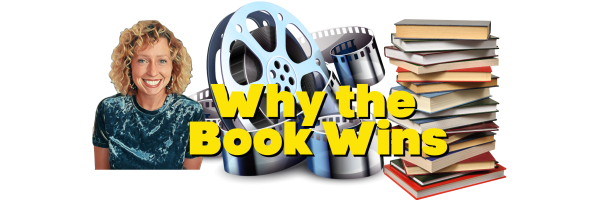
Big Fish Book vs Movie Review
Tim Burton adapted this story of a man who is trying to connect with his dying father-a man who couldn’t help but exaggerate the stories of his life.
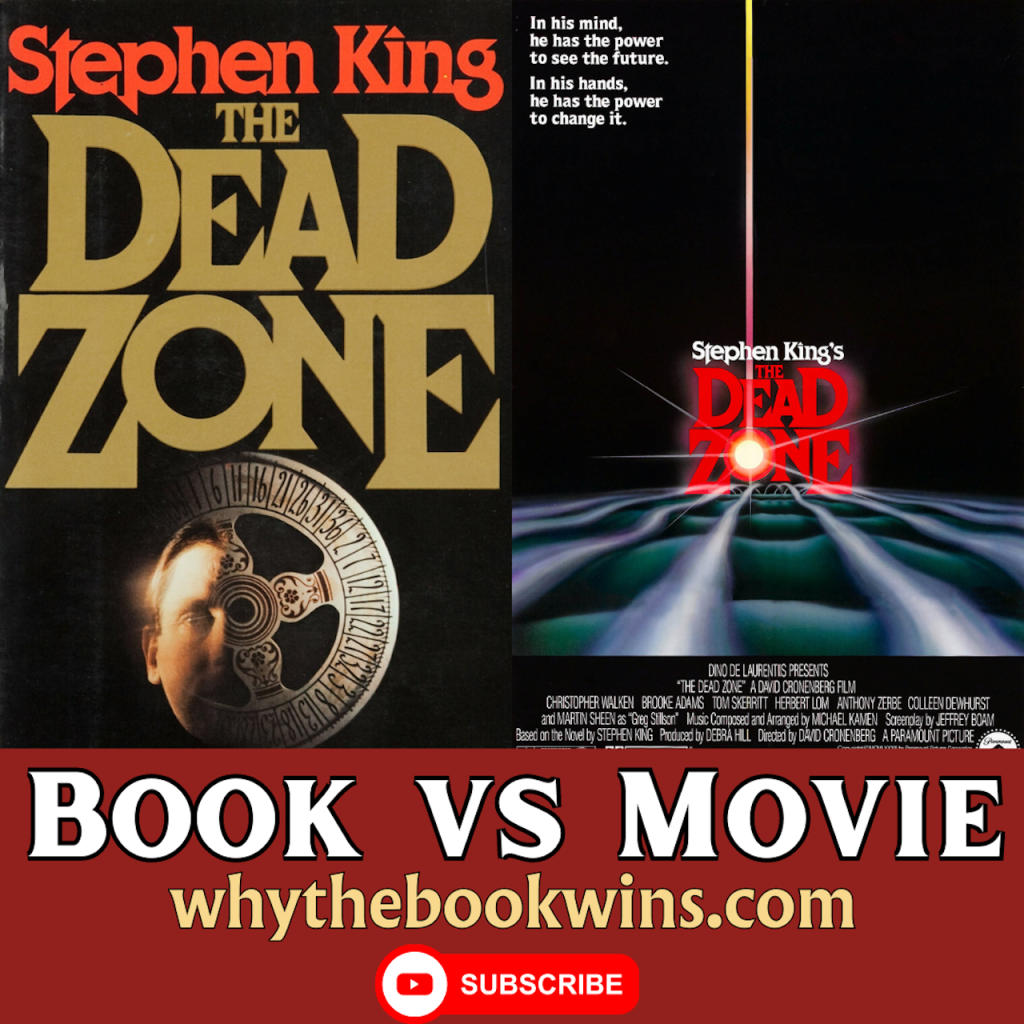
The Dead Zone Book vs Movie Review
Stephen King’s first ever best seller was adapted by famed director David Cronenberg. Find out how the story of a man who can see the future differs from book to movie!
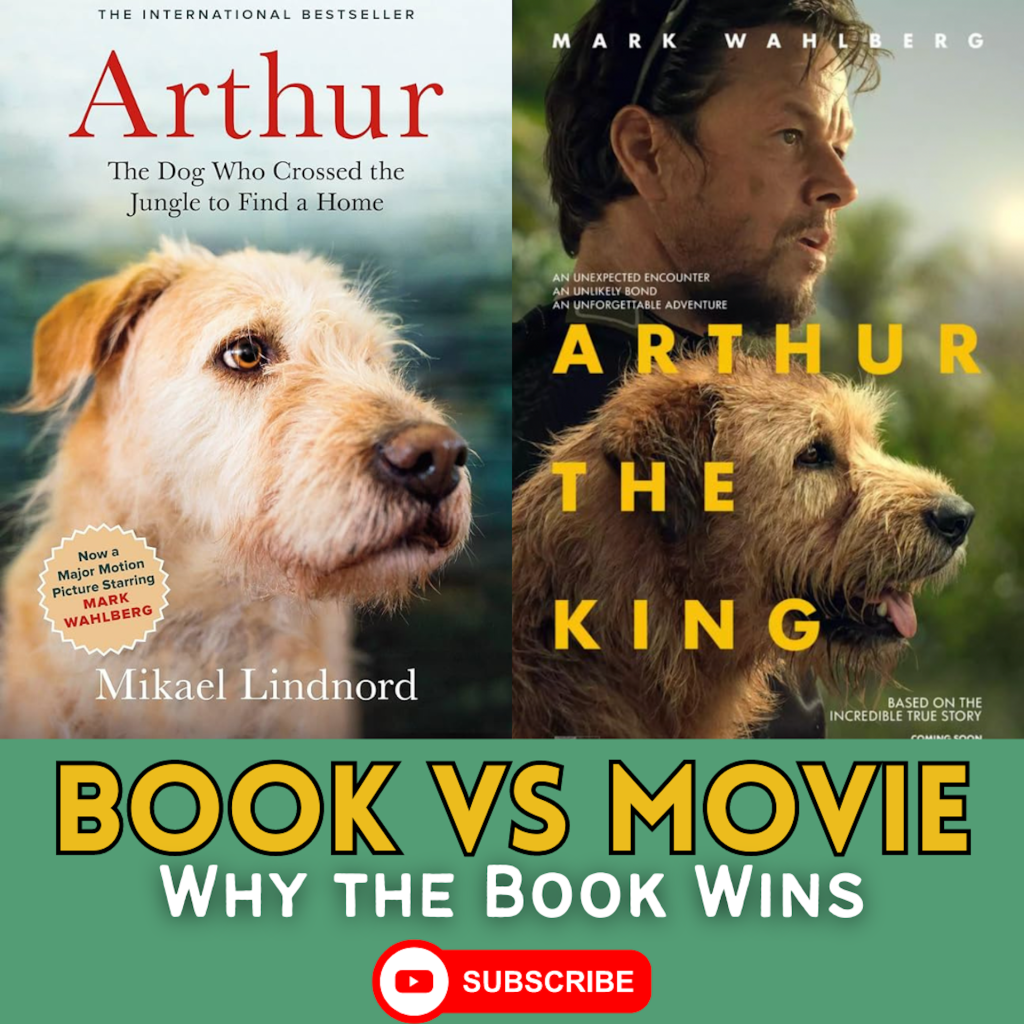
Arthur the King (the adventure racing dog) Movie vs True Story Review
Find out how the true story of a stray dog who becomes attached to an adventure racer compares to the new Mark Wahlberg movie!
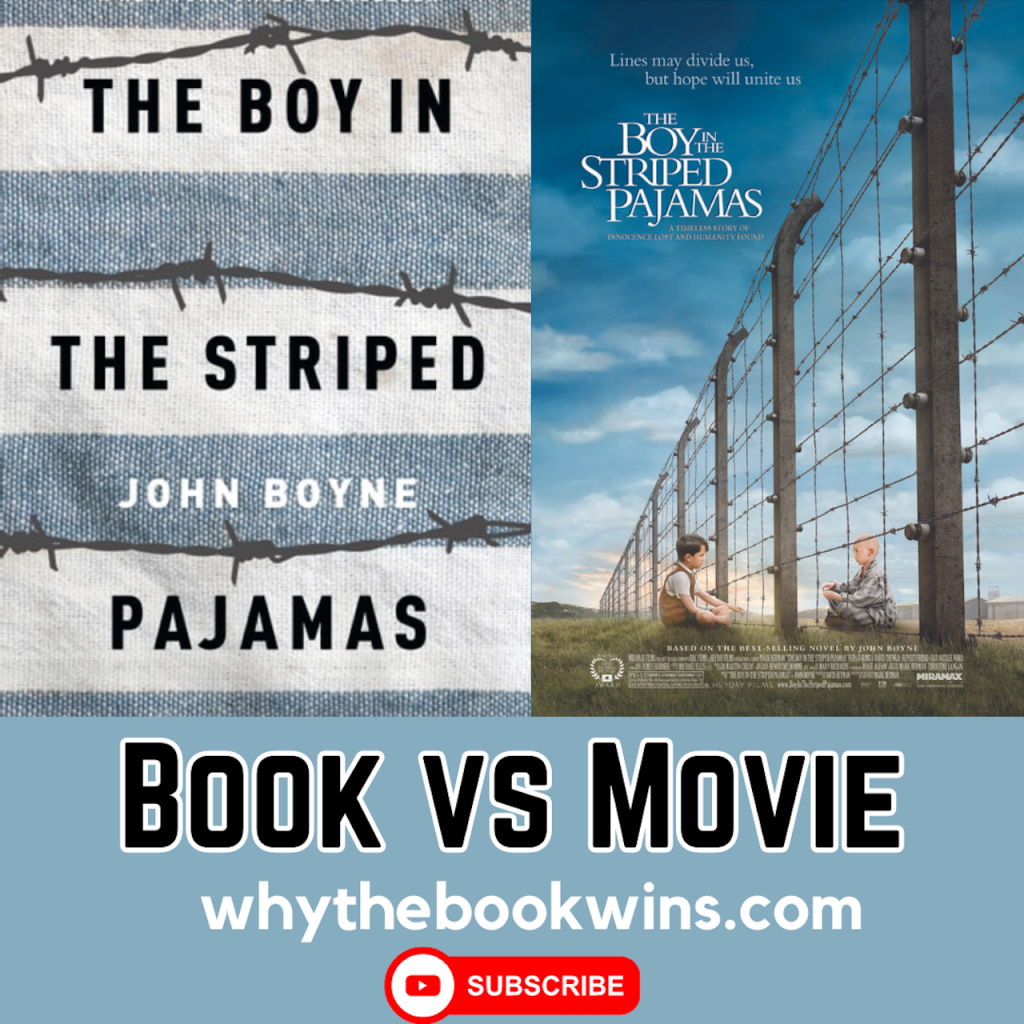
The Boy in the Striped Pajamas Book vs Movie Review
This YA novel is about two boys who form a sweet friendship, but the whole story has a dark undercurrent due to it taking place during the Holocaust.


Dune: Part Two Book vs Movie Review
Denis Villeneuve’s highly anticipated Dune Part Two is finally out-but does he capture the messaging of the book that Frank Herbert intended?

All of Us Strangers Ending Explained Review
This book and movie are both a surrealist story of a man connecting with his past. Find out what was changed from book to film!

Life of Pi Book vs Movie/Ending Explained Review
Find out how this symbolic movie about a teenager at sea with a tiger, compares to the award winning book it was based on!

Dune: Part One Book vs Movie Review
Frank Herbert created the epic world of Dune which has recently been adapted by Denis Villeneuve.
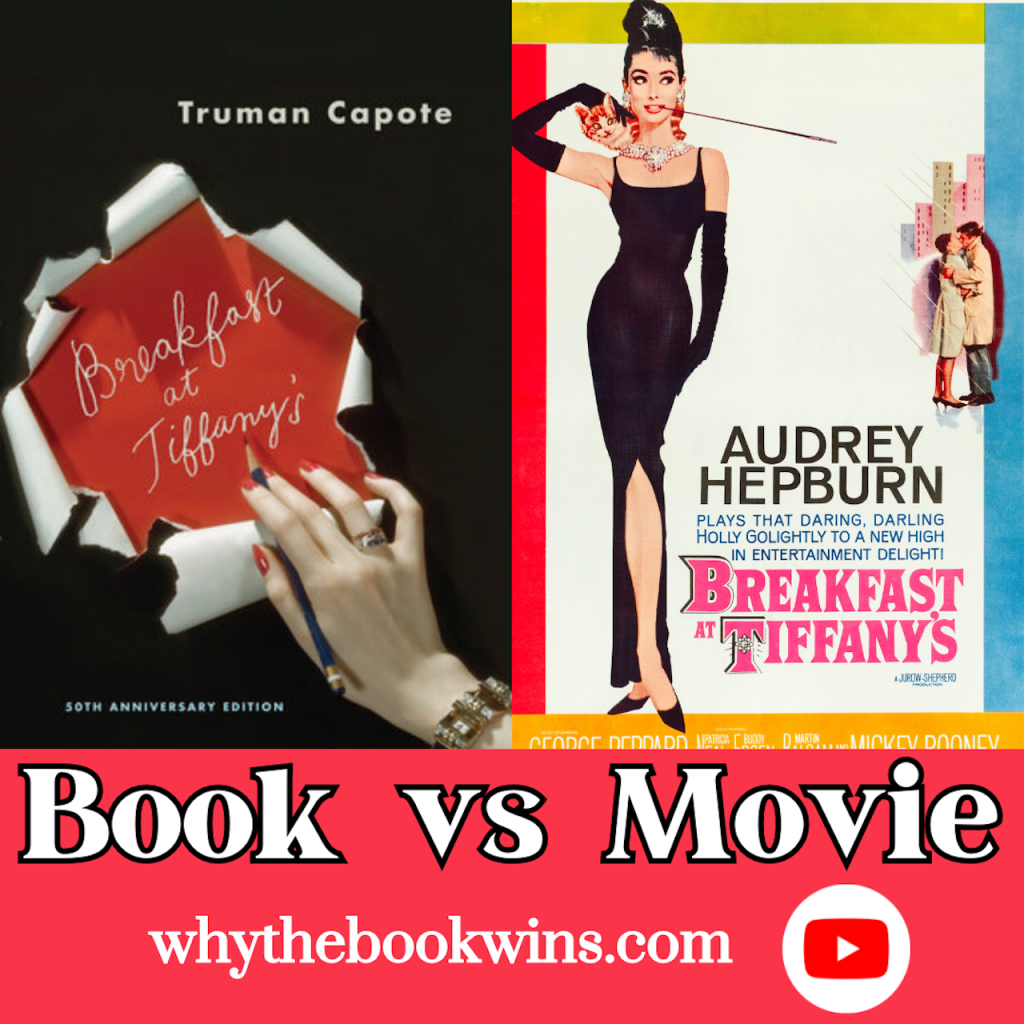
Breakfast at Tiffany’s Book vs Movie Review
Audrey Hepburn turned Holly Golightly into an icon. But how does the movie compare with the book which was written by Truman Capote?
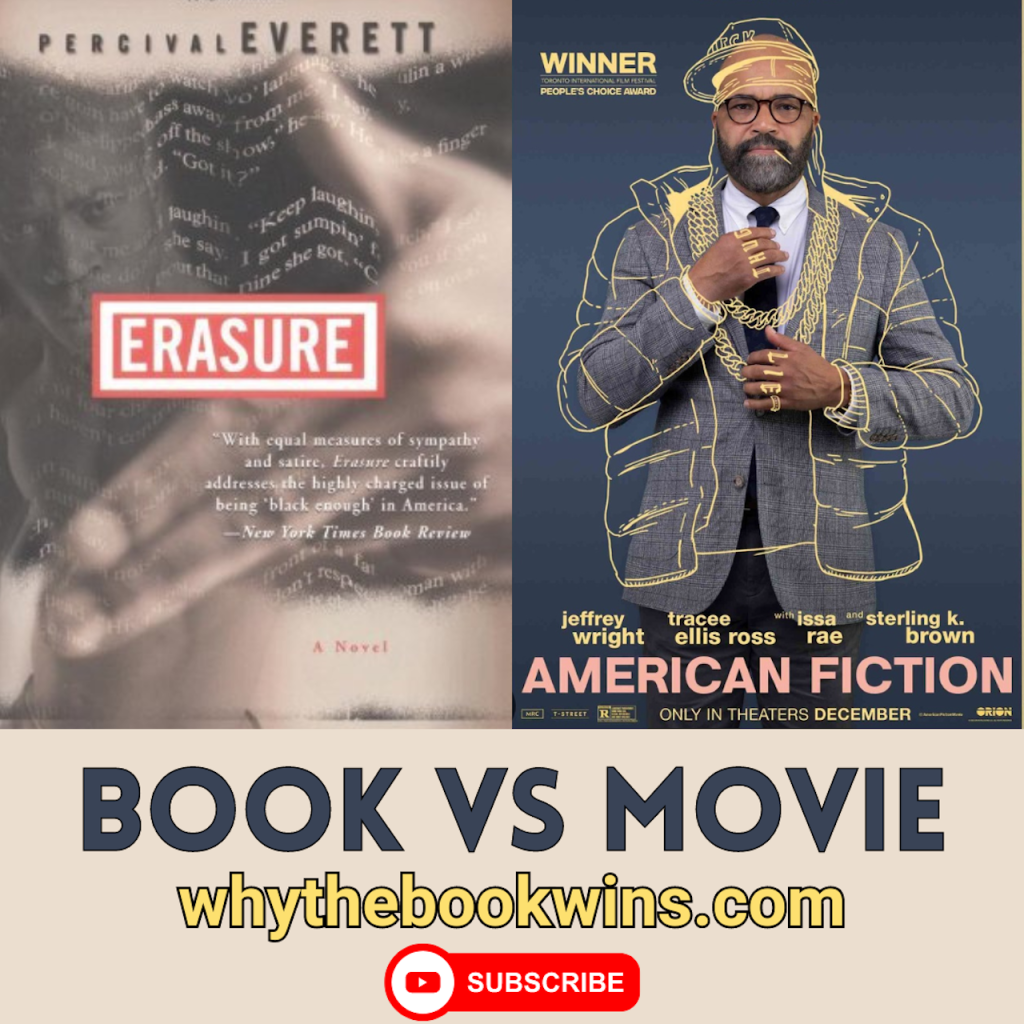
American Fiction vs Erasure Book vs Movie Review
This critically acclaimed movie starring Jeffery Wright was adapted from a book by Percival Everett. Find out how the two compare!
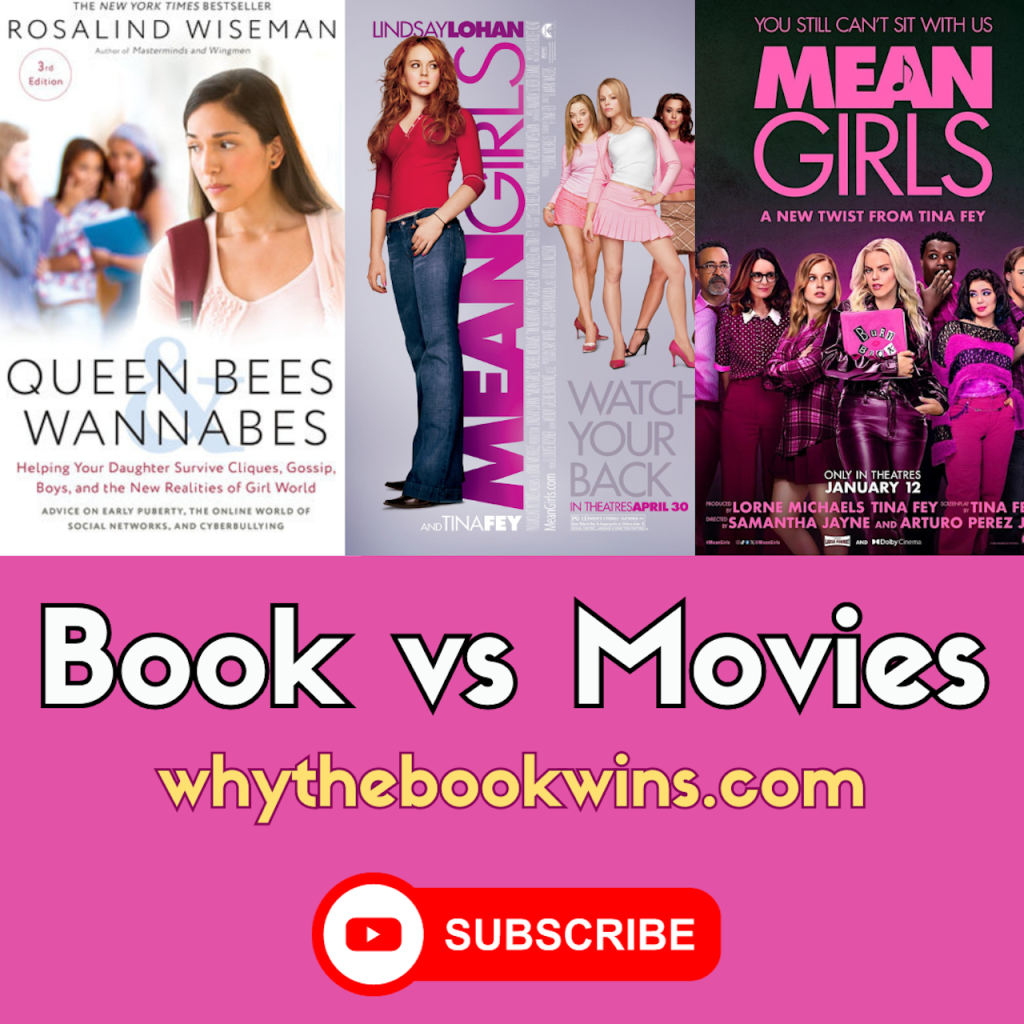
Mean Girls Book vs Movies 2004 vs 2024 Review
Tina Fey’s iconic comedy was adapted from a self help book! Find out how book and movie compare, and how the new remake compares with the original.
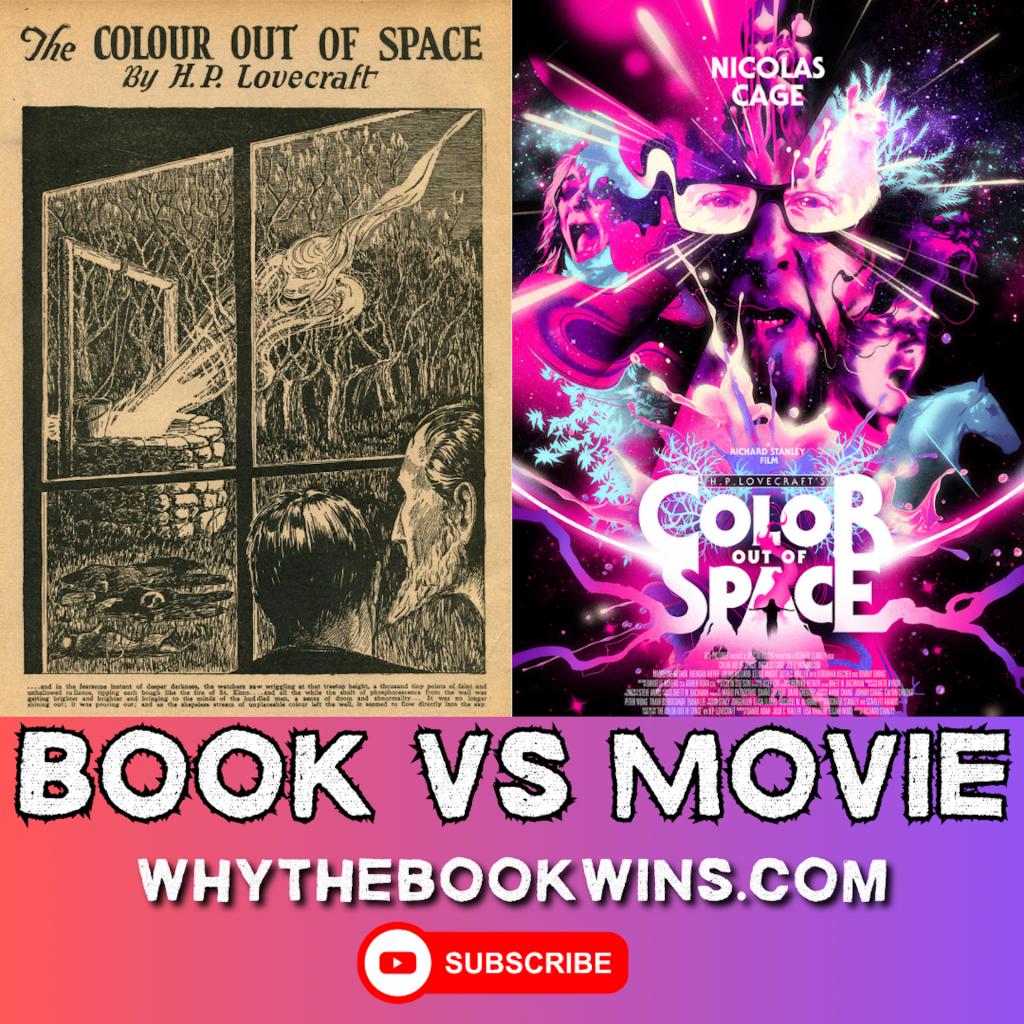
The Color Out of Space Book vs Movie Review
H.P. Lovecraft’s cosmic horror masterpiece was adapted nearly 100 years after it was published. Find out how book and movie compare!
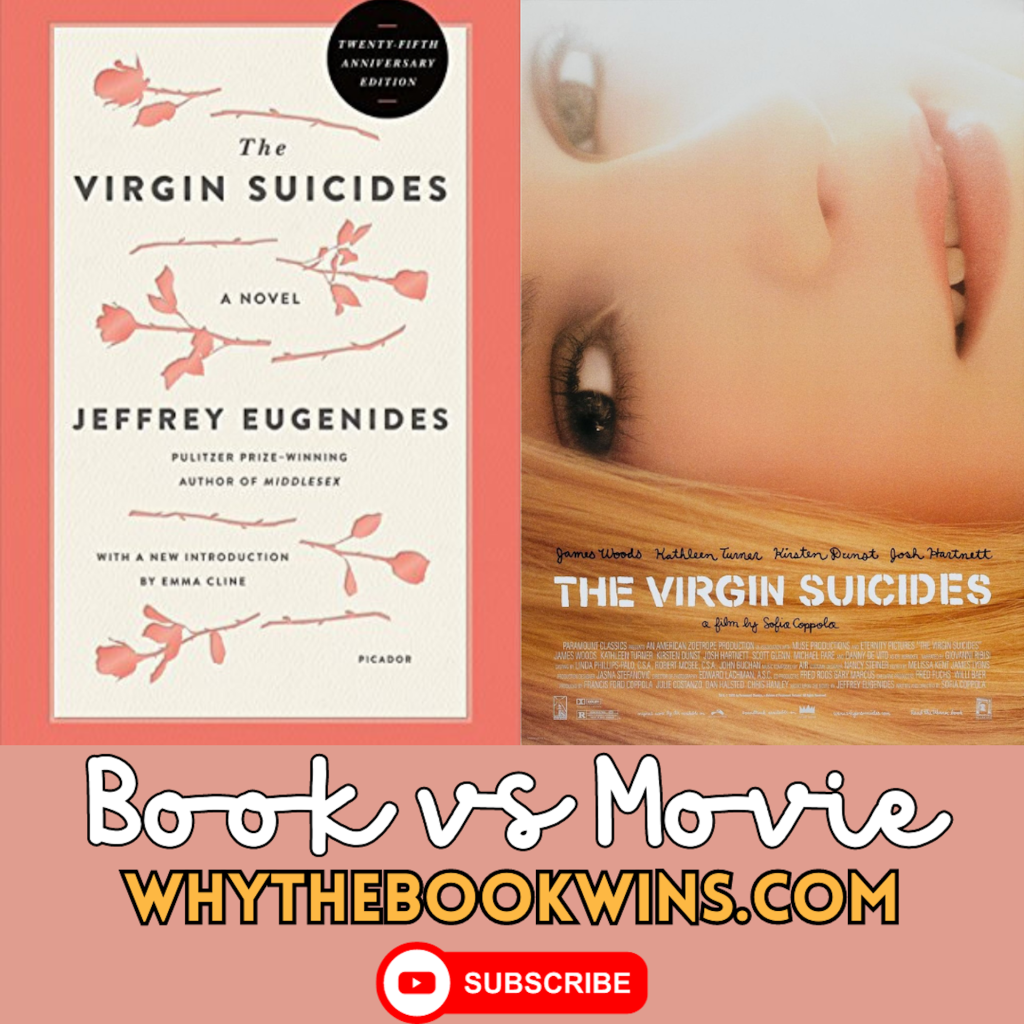
The Virgin Suicides Book vs Movie Review
Sofia Coppola’s directorial debut is an adaptation about five sisters and the boys who are obsessed with them. Find out how the two compare!

The Island of Doctor Moreau Book vs Movies Review
There are strange experiments happening on the island of Doctor Moreau…Find out how this iconic book compares to three different movie adaptations!
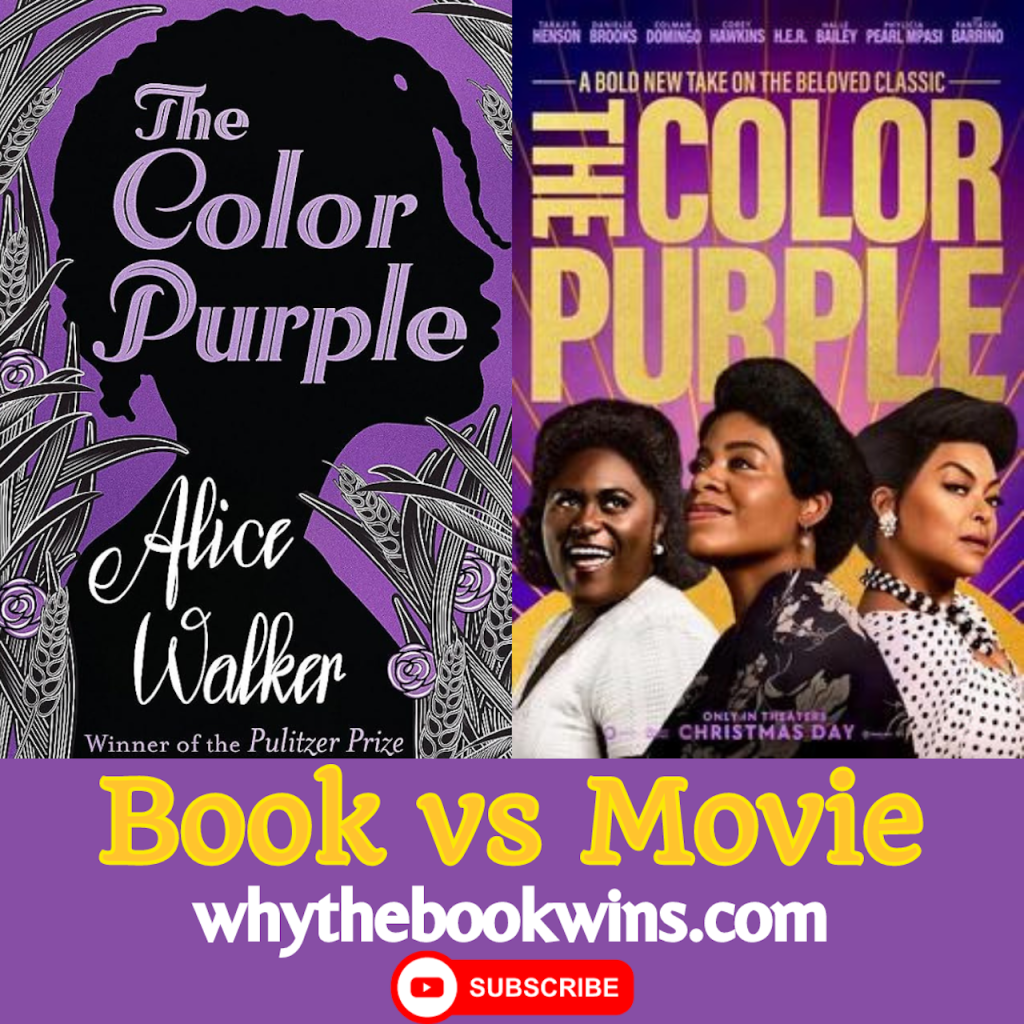
The Color Purple 2023 Book vs Movie Review
How does this musical adaptation of Alice Walker’s book compare with the award winning novel?
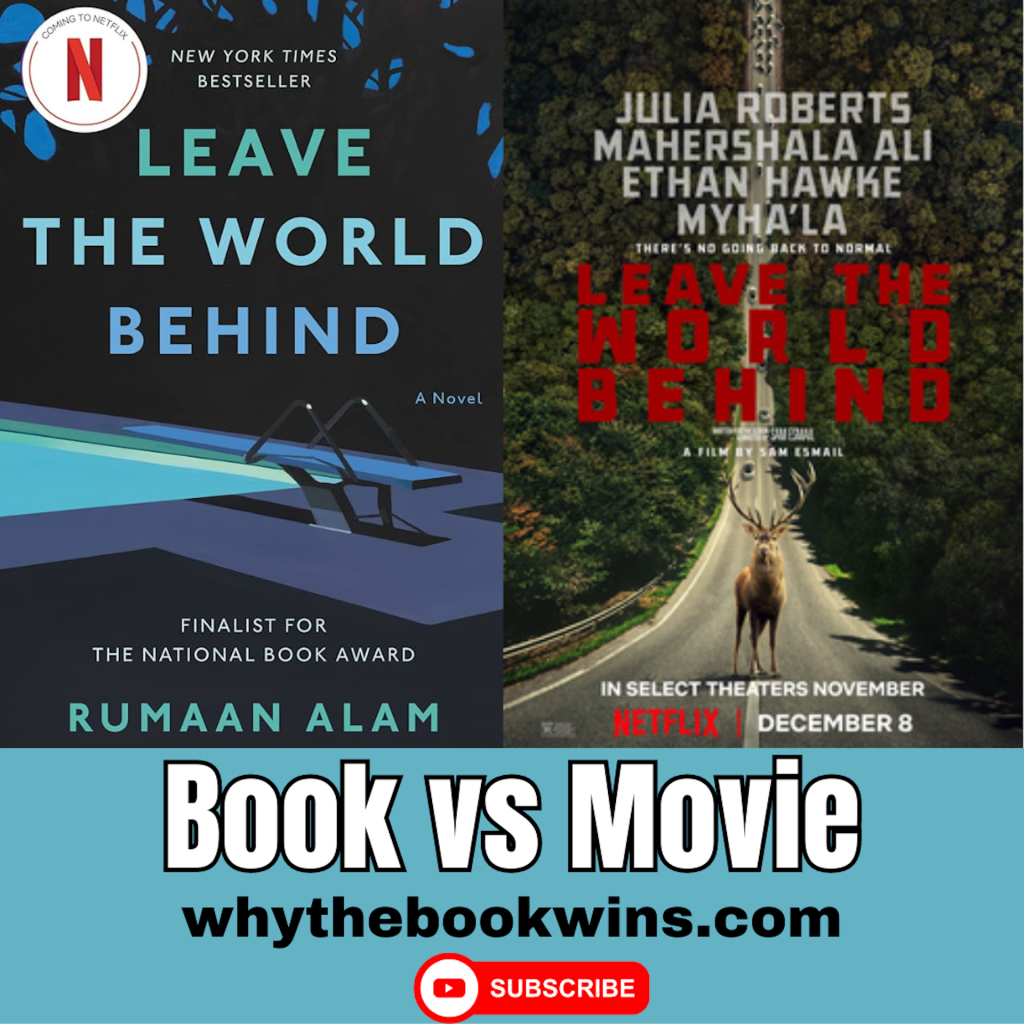
Leave the World Behind Book vs Movie Review
Find out what is different between the New York Times best seller (how did that happen??) and its Netflix adaptation about the end of the world.

Eileen ending explained/Book vs Movie Review
This slow burn thriller by Otessa Moshfegh was adapted into a movie starring Anne Hathaway and Thomasin Mckenzie. FInd out how the two compare!
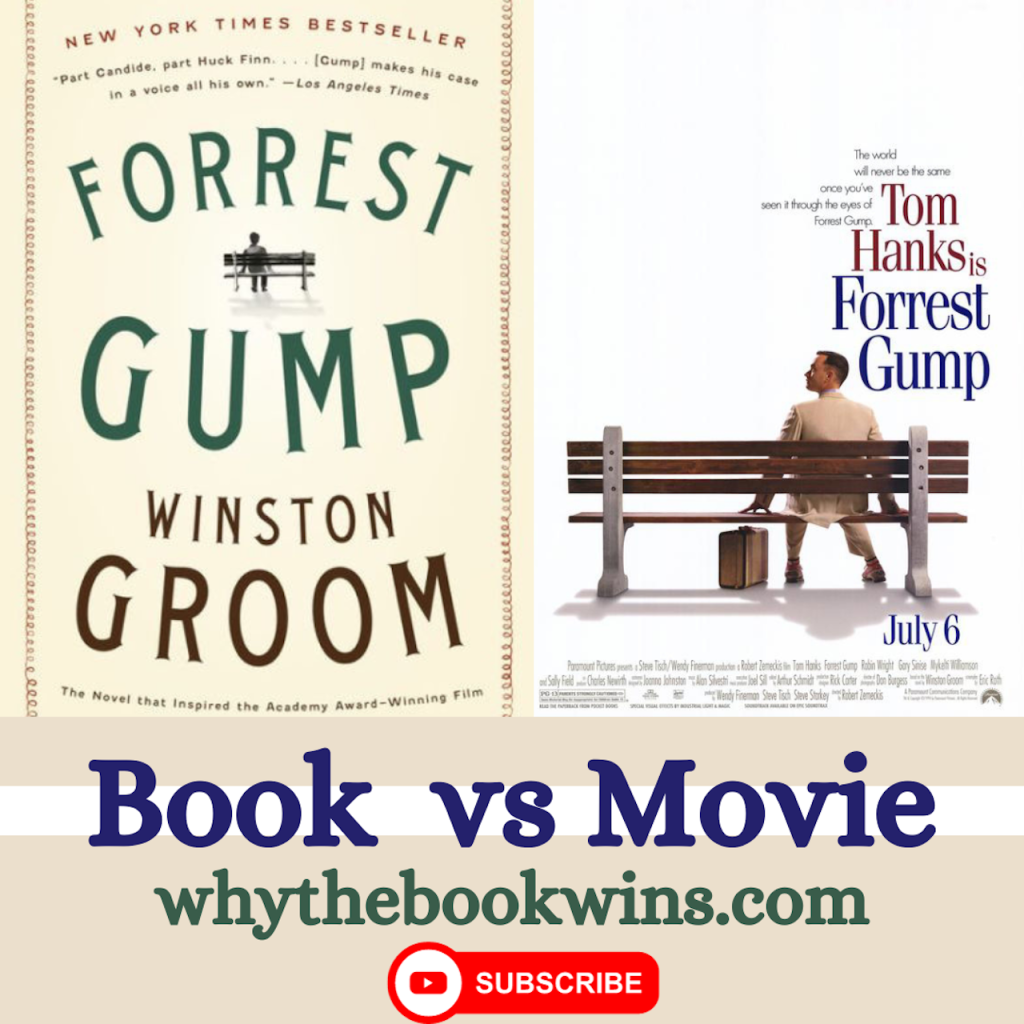
Forrest Gump Book vs Movie Review
written by Laura J. Forrest Gump by Winston Groom (1986) Forrest Gump directed Robert Zemeckis (1994) This is a book vs movie topic that was requested by Ryan, as well as Shelby from longdogbookreviews. Forrest’s childhood In the movie I’m not sure if Forrest’s dad left them, or if he died (I’m thinking he left …
Forrest Gump Book vs Movie Review Read More »
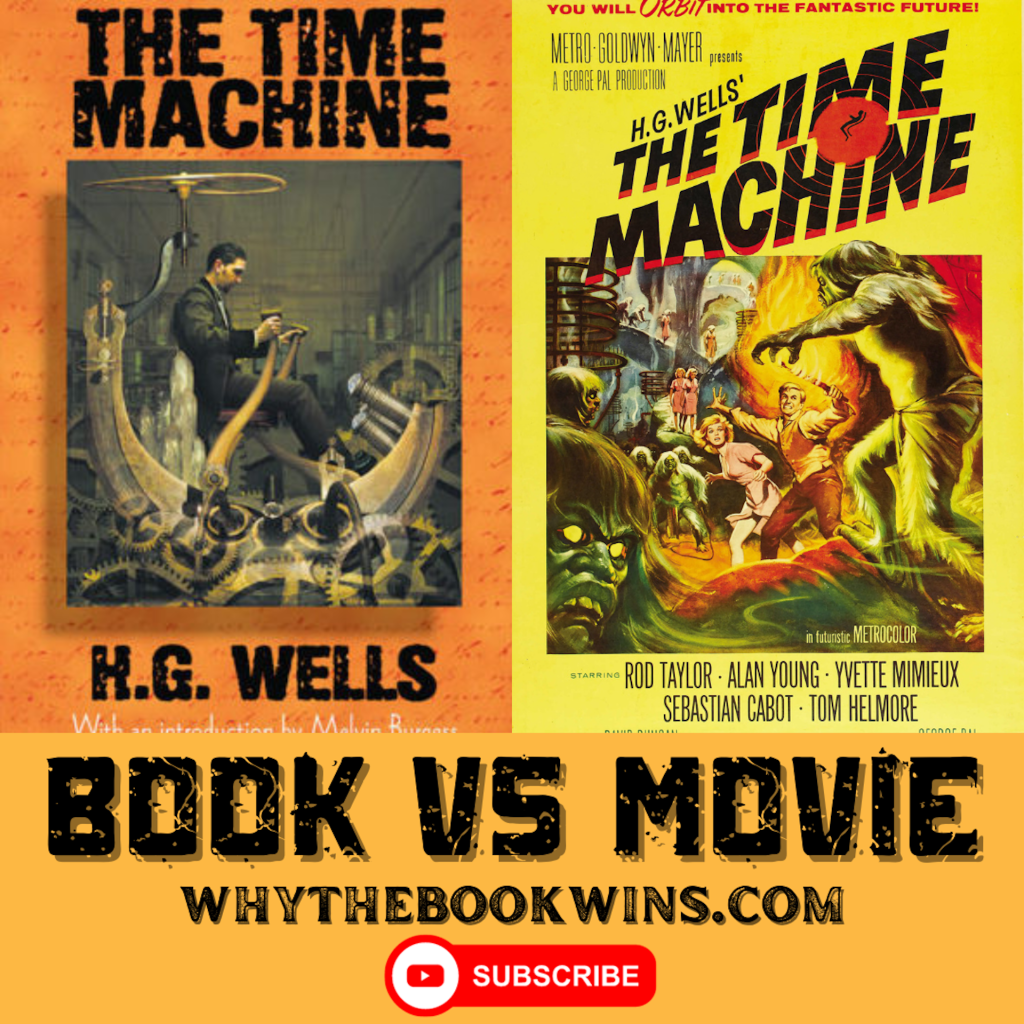
The Time Machine Book vs Movie Review
H.G. Wells first novel is about a man who travels thousands of years into the future and meets the Eloi and the Morlocks. Find out how the 1960 movie compares!

Shutter Island Book vs Movie Review
Martin Scorsese teams up with Leonardo DiCaprio to adapt the Dennis Lehane thriller, Shutter Island! This movie is stays very close to the book, bu there is still just so much to talk about with this mindbending story!
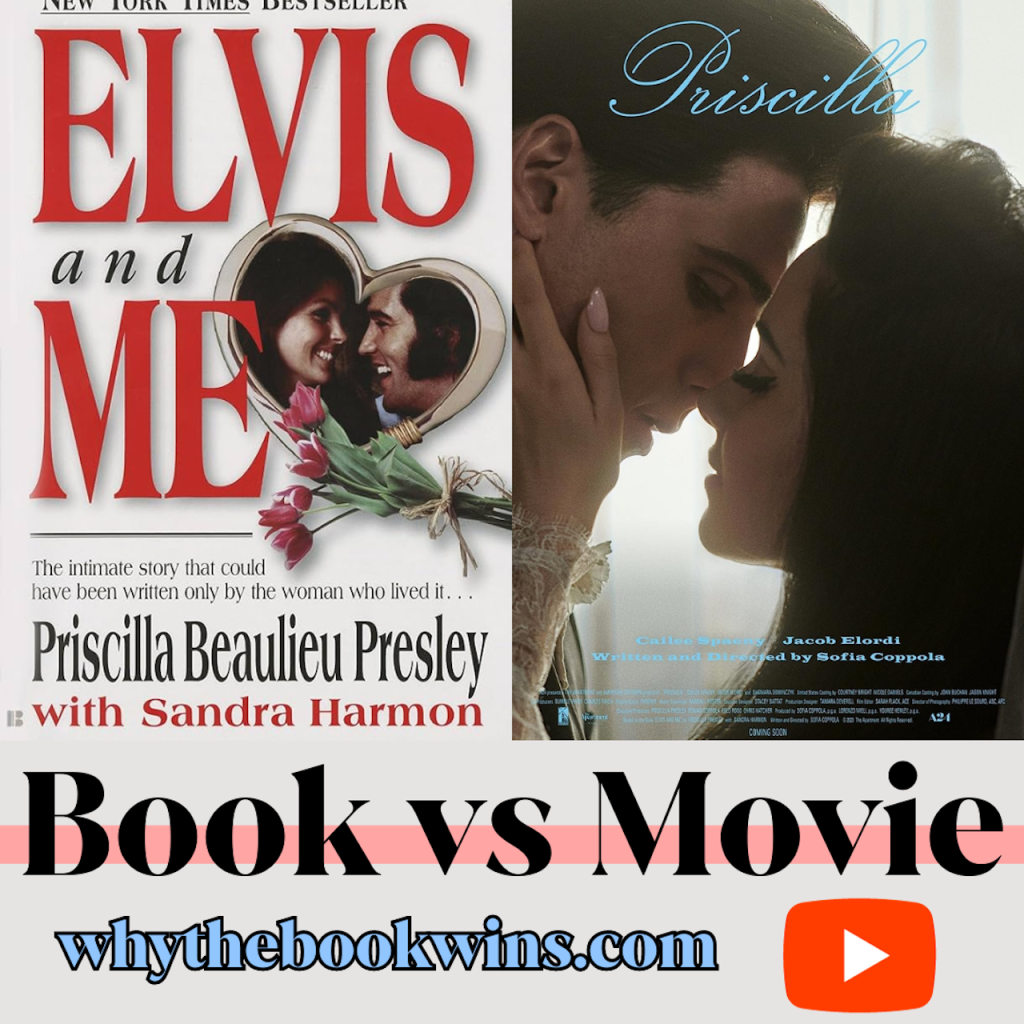
Elvis and Me/Priscilla true story vs movie Review
Sofia Coppola has adapted Priscilla Presley’s memoir into a stunning movie all about Priscilla’s relationship with Elvis Presley. But is the movie all vibes and no substance?

Willy Wonka/Charlie and the Chocolate Factory Book vs Movies Review
Roald Dahl’s whimsical story of a magical chocolate maker has been adapted twice. One starring Gene Wilder and the other starring Johnny Depp. Find out how each movie compares to the book!
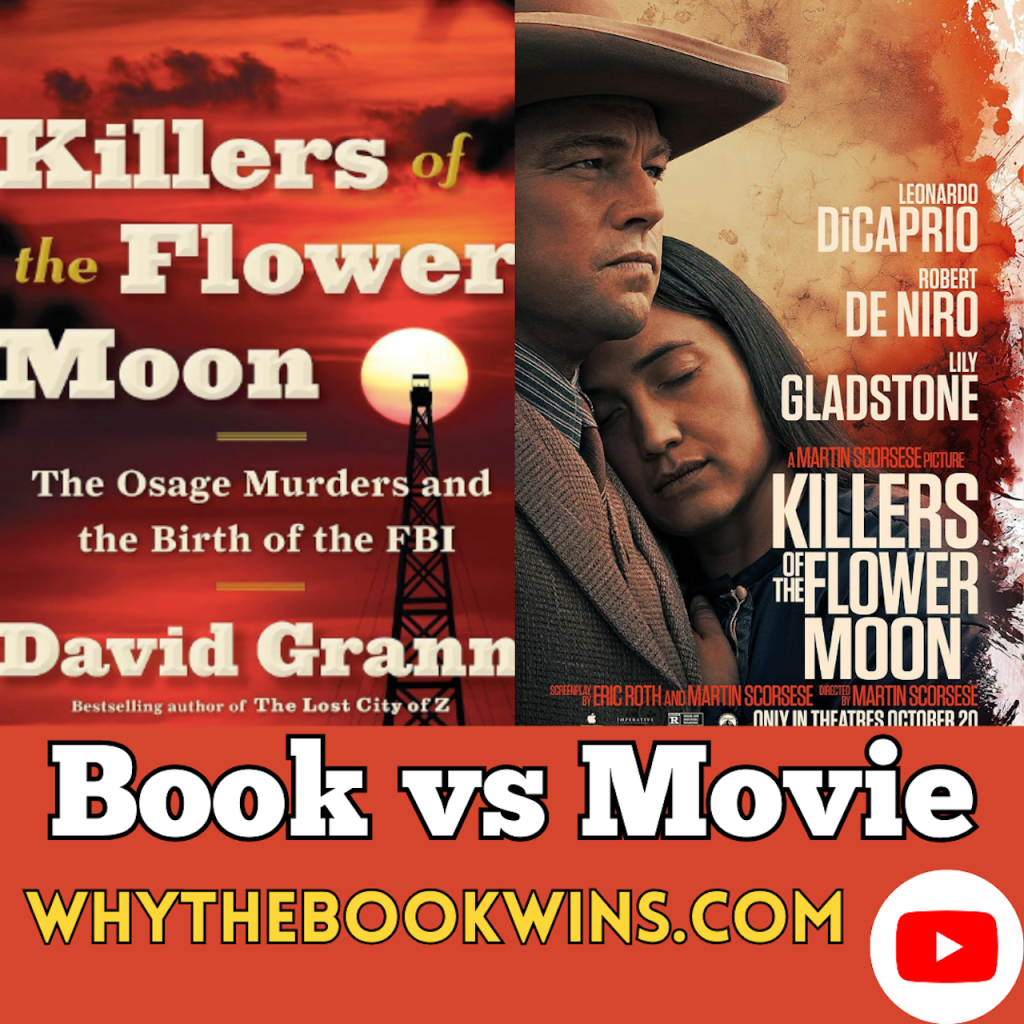
Killers of the Flower Moon Movie vs True Story Review
Martin Scorsese’s 3.5 hour movie about the Osage tribe who were murdered over the span of years, was adapted from a book by David Grann who researched the true story. Find out how the movie compares with the truth.
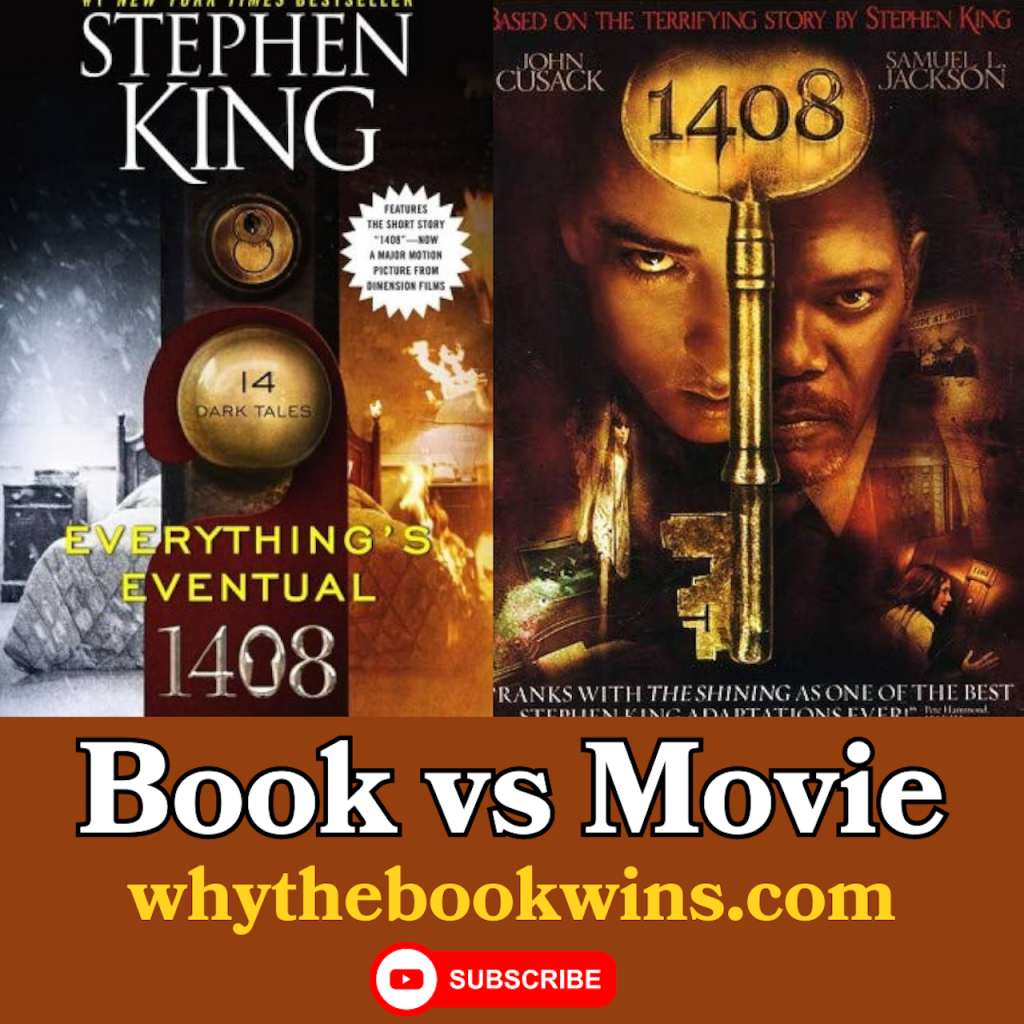
1408 by Stephen King Book vs Movie Review
Stephen King’s novella about an evil hotel room was adapted into the movie with John Cusack and Samuel L. Jackson. Find out how the two compare!
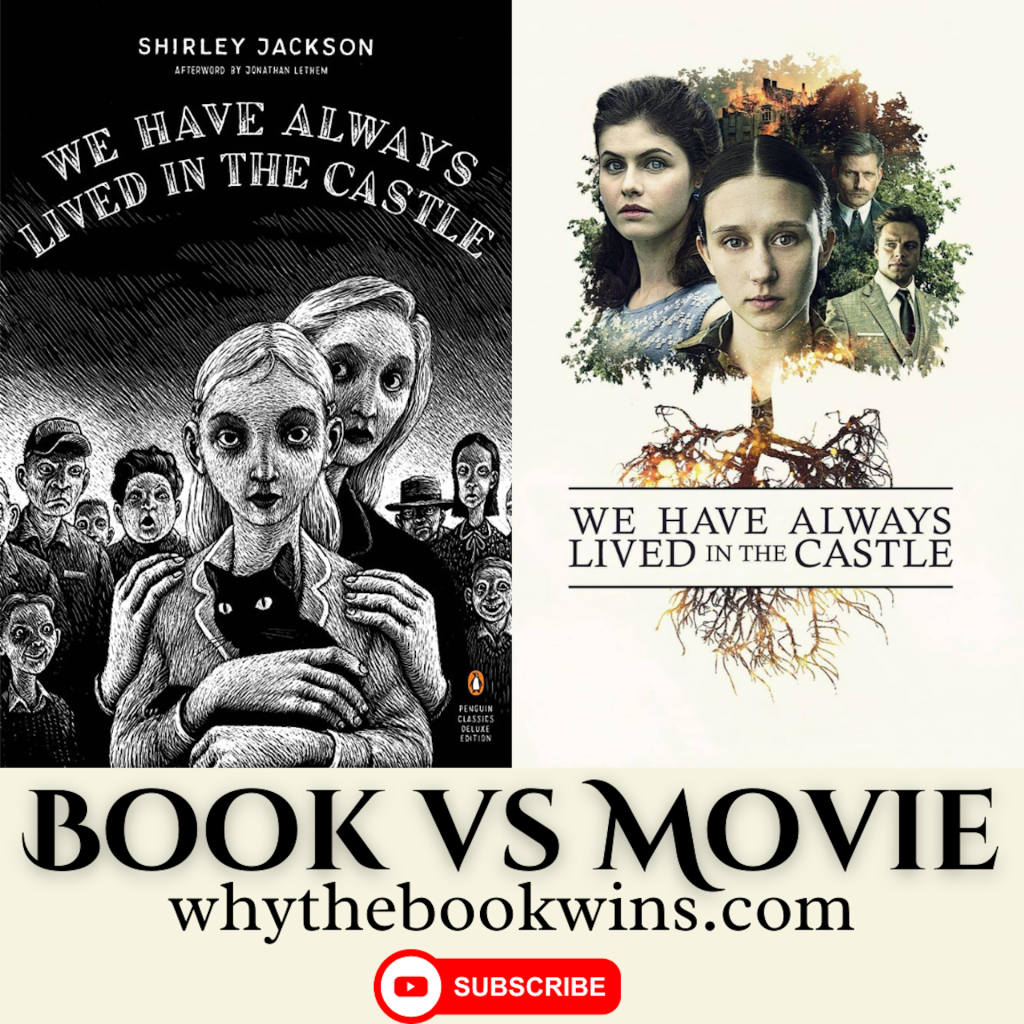
We Have Always Lived in the Castle Book vs Movie Review
Shirley Jackson’s story about a family that is isolated from the town gives you a lot to analyze. But does the movie adaptation from 2018 capture the ambiguity or do they dumb it down?
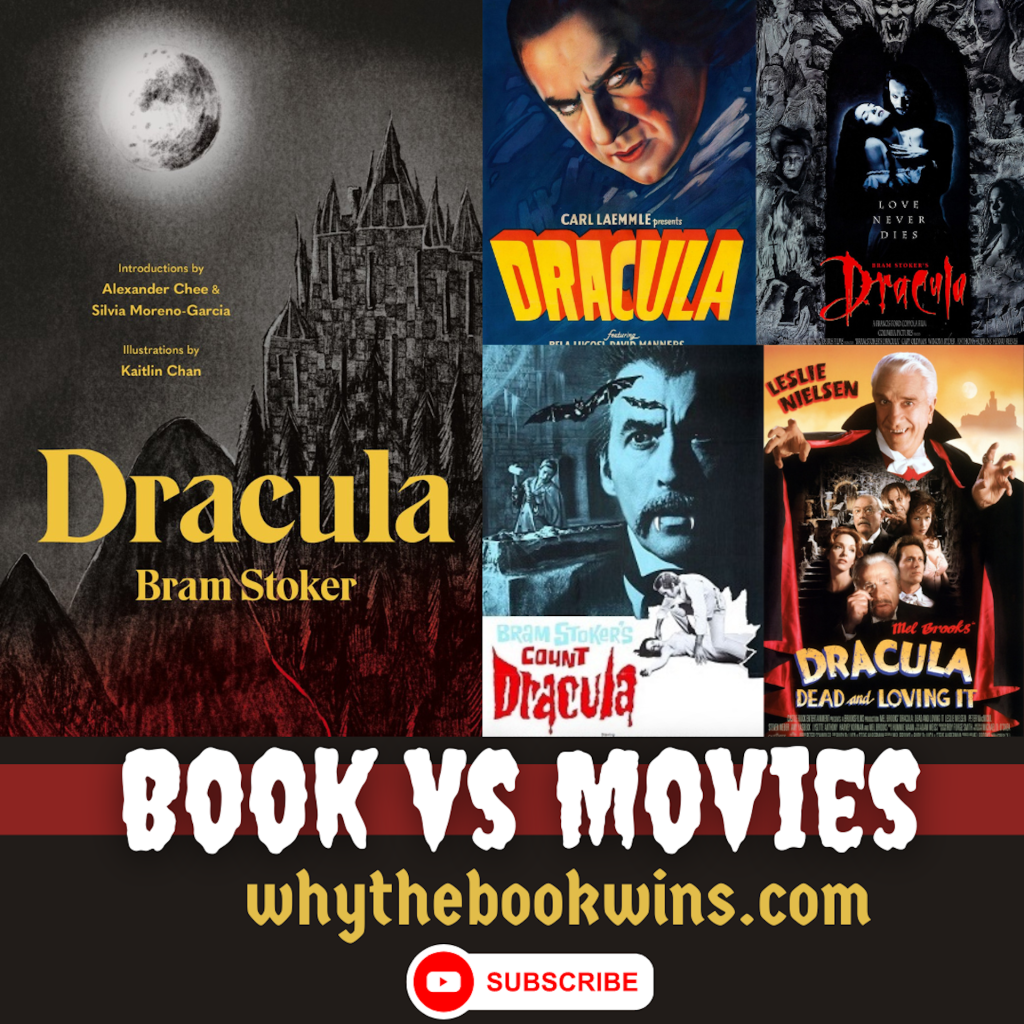
Dracula Book vs Movies Review
Bram Stoker’s Dracula has taken on a life of its own. After reading the book I watched 6 different Dracula movies to find out which one is the most faithful, and if being more faithful makes for a better adaptation.

Casino Royale Book vs Movie Review
The first James Bond book wasn’t (truly) adapted until 2006, when Daniel Craig made his first appearance at the British spy. Find out how the movie compares with the book!
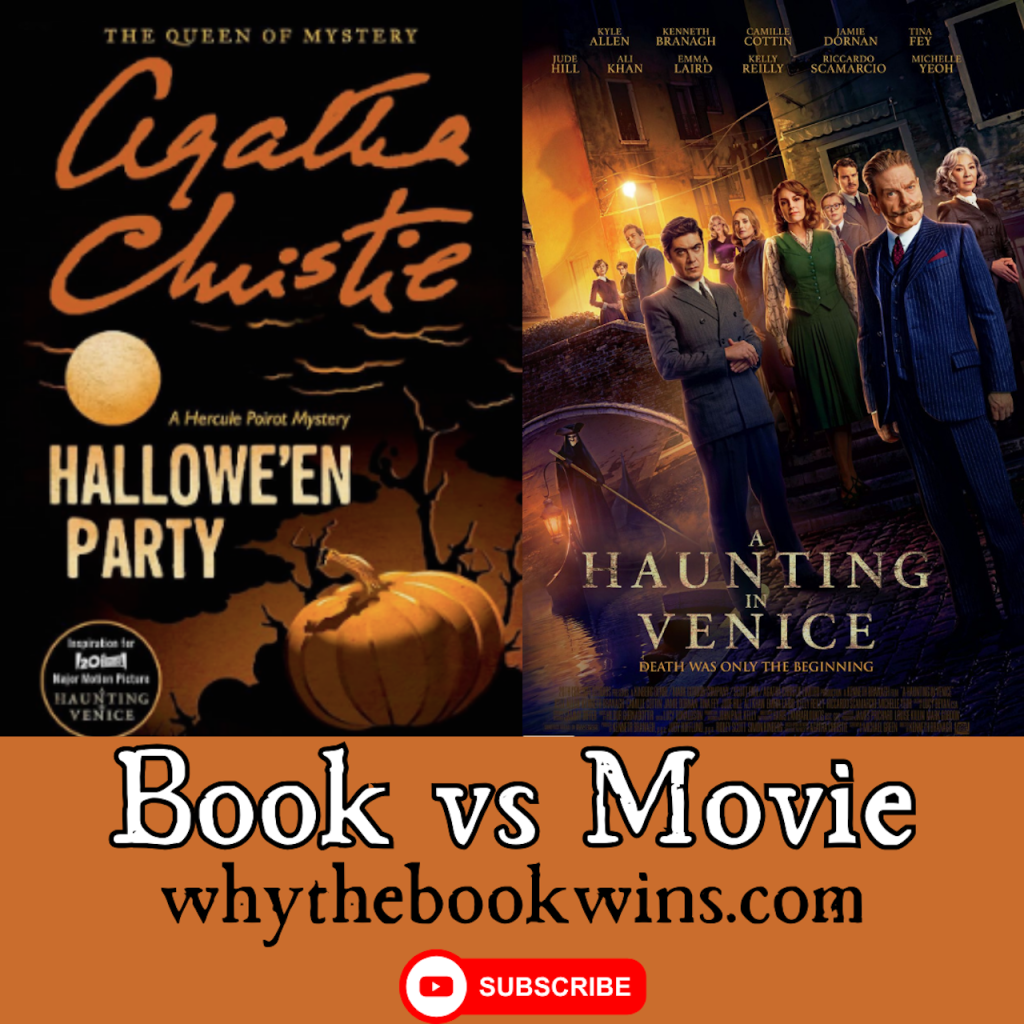
A Haunting in Venice/Hallowe’en Party Book vs Movie Review
Kenneth Banagh’s latest Hercule Poirot movie is an adaptation of Halloween Party. This is the loosest Christie adaptation he has made, but were the changes from book to movie for the better?
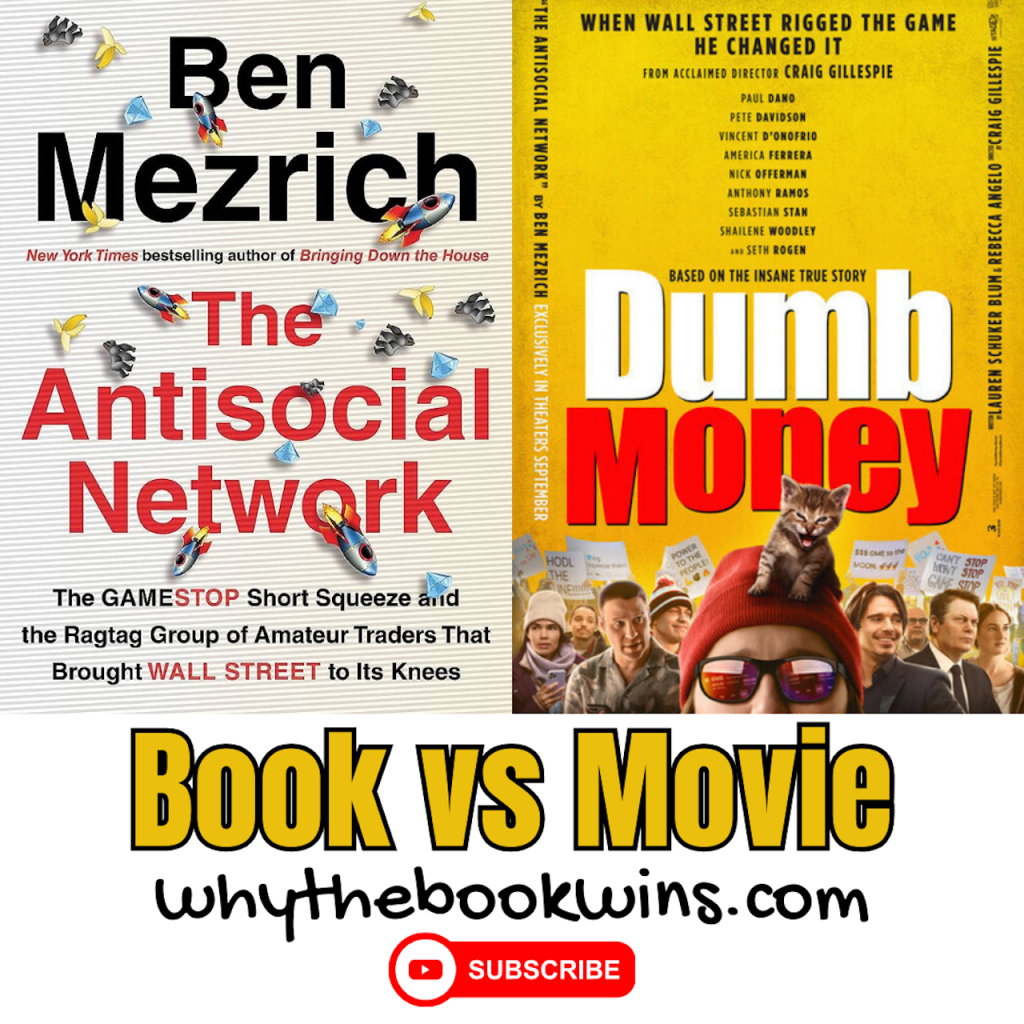
Dumb Money movie vs true story-Analysis/GameStop/Robinhood 2021 Review
Dumb Money is the insane true story of when a group of people on Analysis caused a short squeeze in the stock market. Find out how the movie compares to this real life David and Goliath story!
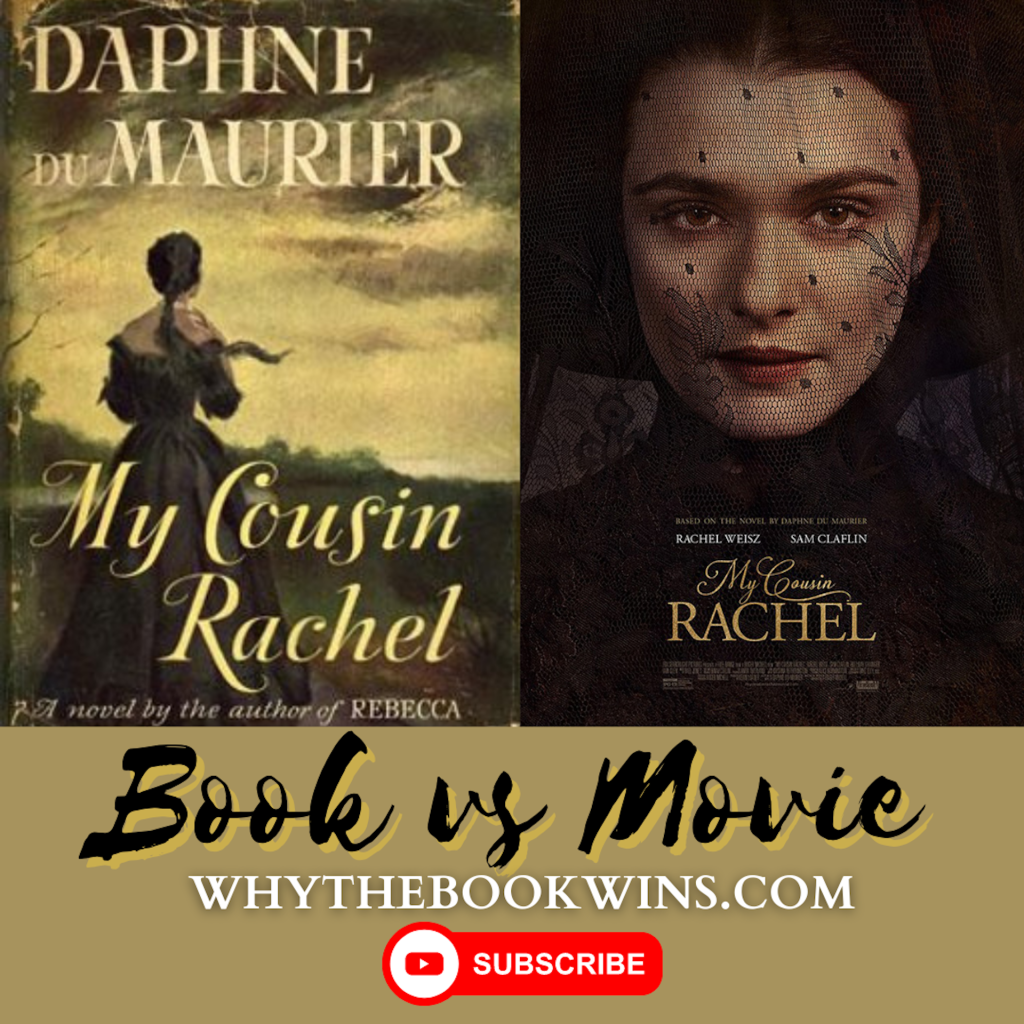
My Cousin Rachel Book vs Movie Review
Daphne Du Maurier’s gothic thriller was adapted into a movie starring Rachel Weisz in the title role-find out how the two compare!

The Player Book vs Movie Review
The Player is a satire about the Hollywood film industry. Find out how the book compares to this star-studded movie!
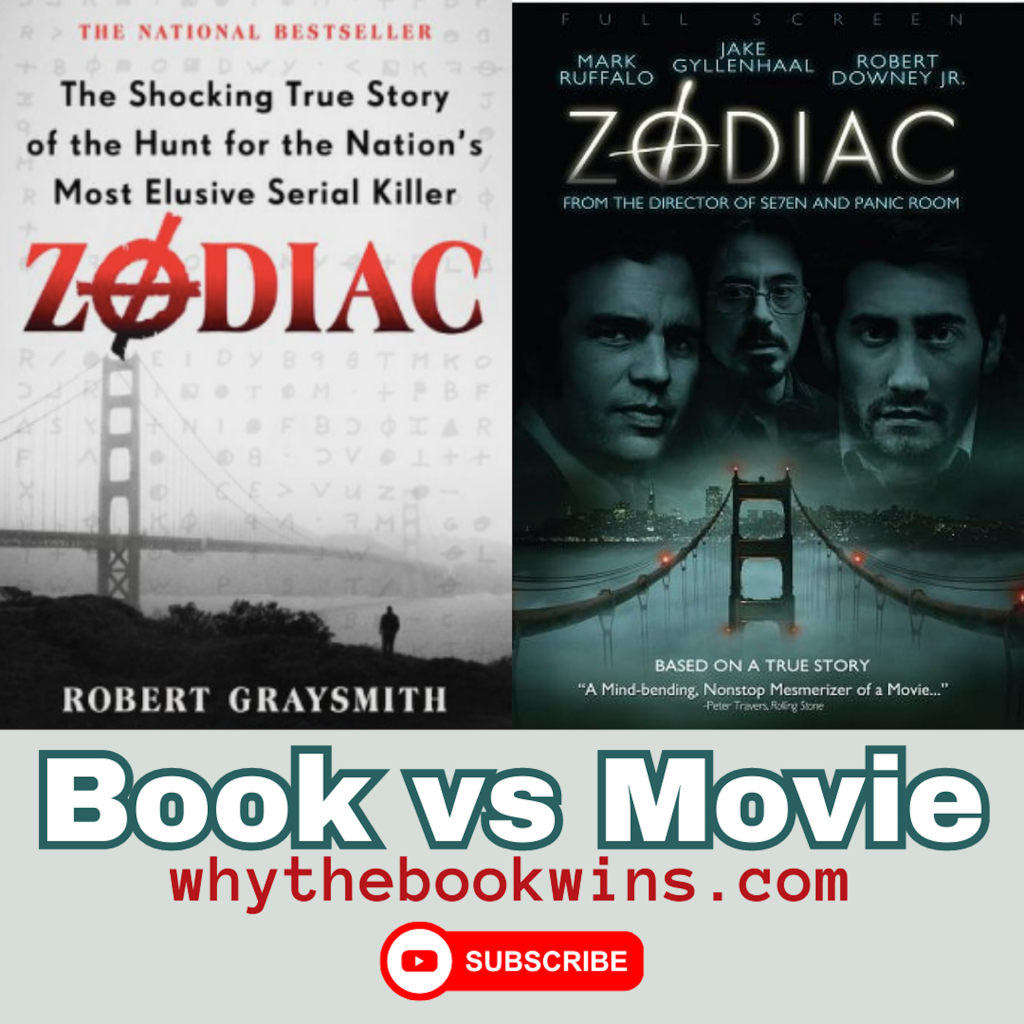
Zodiac True Story vs Movie Review
The San Fransisco Zodiac killer has sparked numerous movies, but the 2007 David FIncher movie is based on the book by Robert Graysmith who has spent decades trying to crack the case.
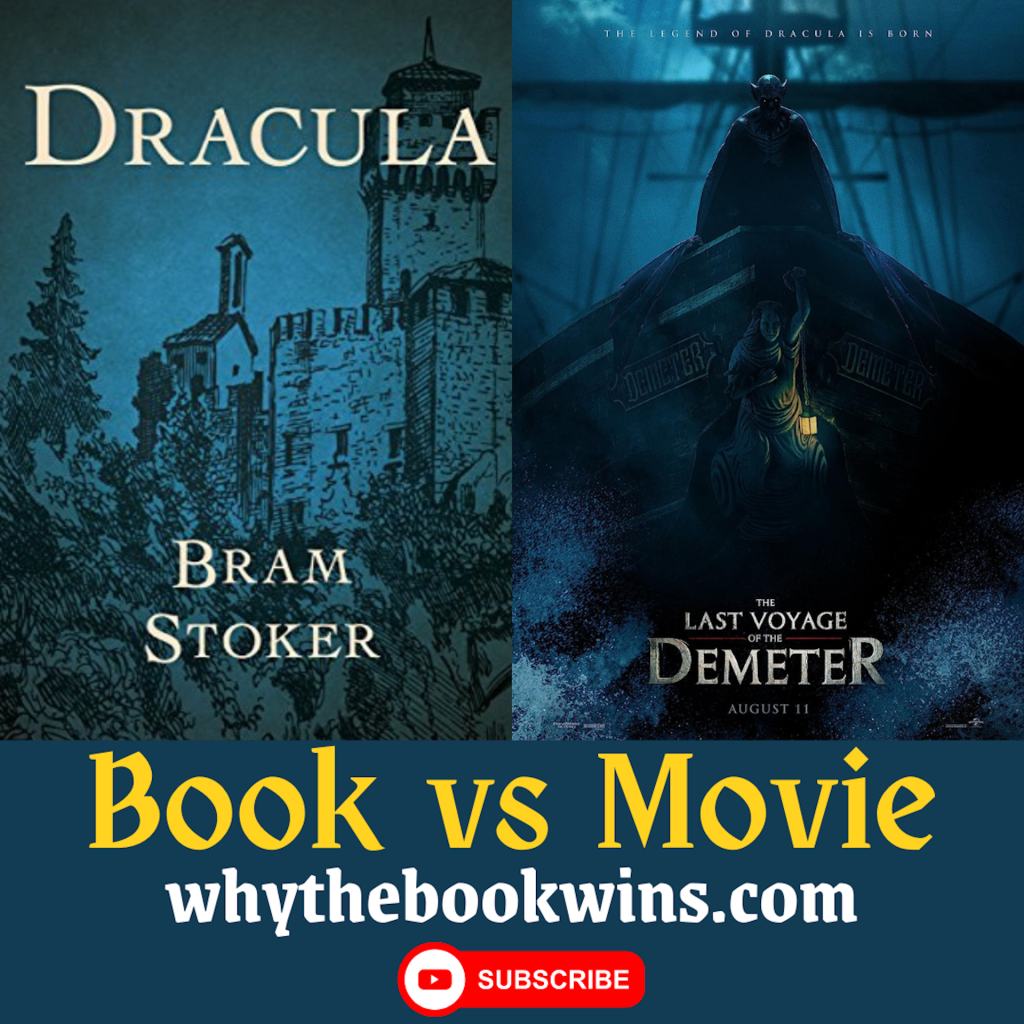
The Last Voyage of the Demeter Book vs Movie Review
The Last Voyage of the Demeter is an adaptation of a chapter from Dracula. Find out what I think of the movie, and how it compares to the Bram Stoker book!
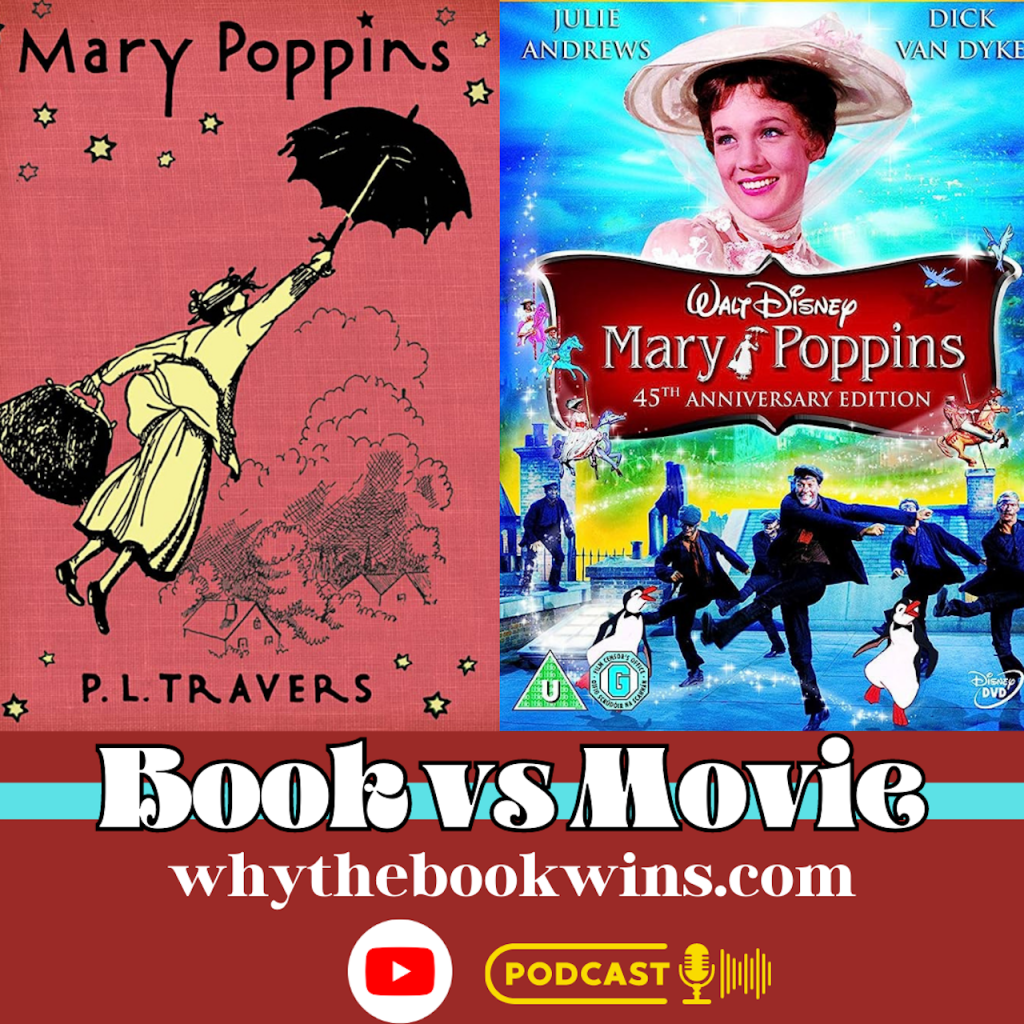
Mary Poppins Book vs Movie Review
Disney’s iconic movie is based on the popular children’s book by P.L. Travers. Find out the changes that were made from book to film!
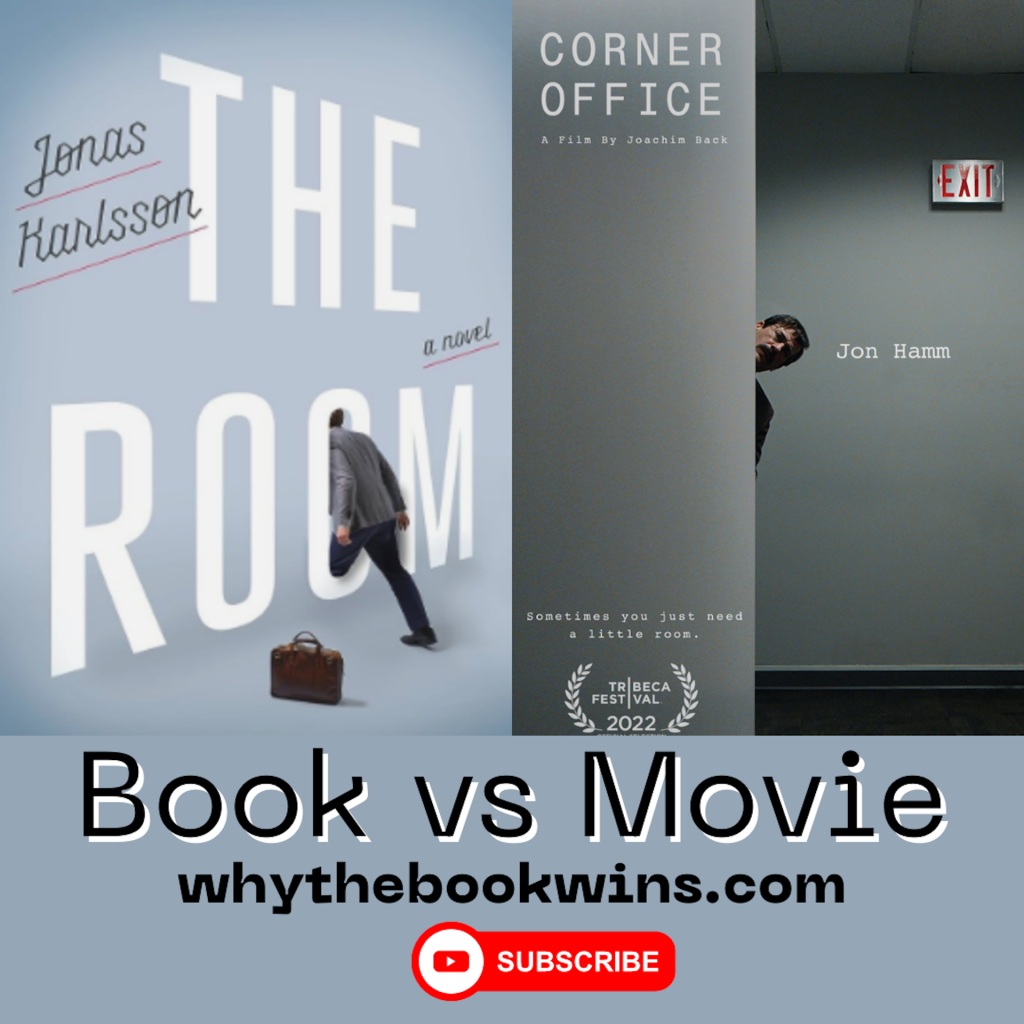
Corner Office/The Room Book vs Movie-ending explained Review
Corner Office starring Jon Hamm is based on the surrealist Swedish novel about corporate life. What do each o them mean? And what is different between the two?
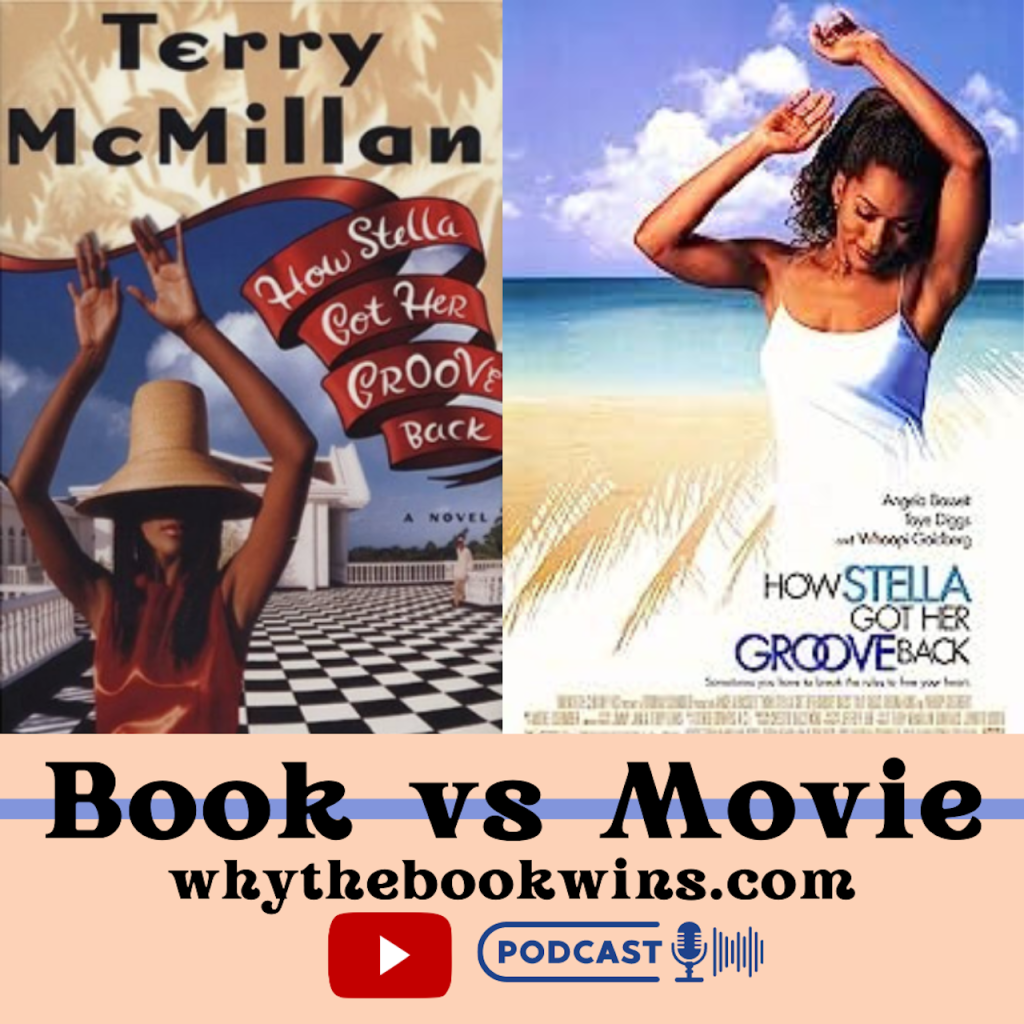
How Stella Got Her Groove Back Book vs Movie Review
Terry McMillan’s book (that is based on a real experience of hers) was adapted into the popular movie starring Angela Bassett and Taye Diggs. Find out how the movie compares to the book and what happened in the true story behind the book!
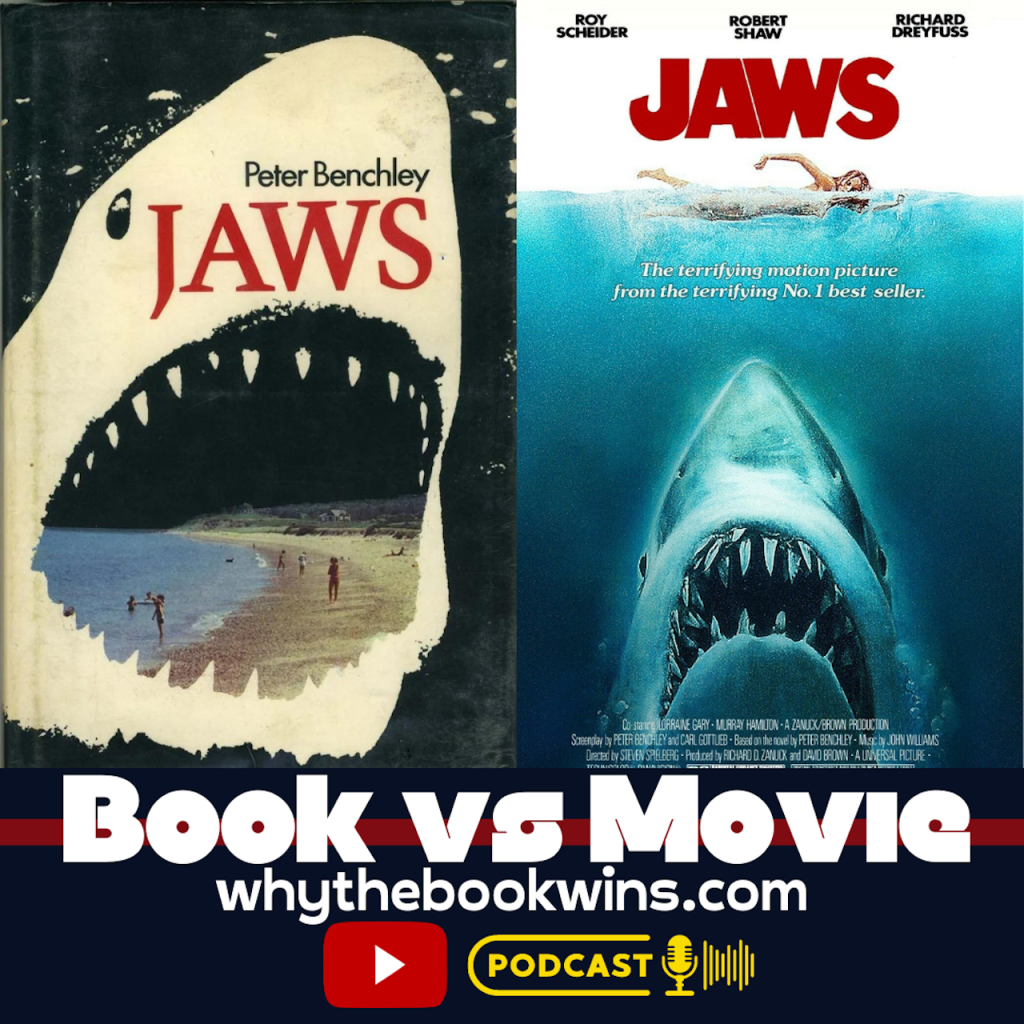
Jaws Book vs Movie Review
Find out how Peter Benchley’s novel compares to the iconic Steven Spielberg summer blockbuster!
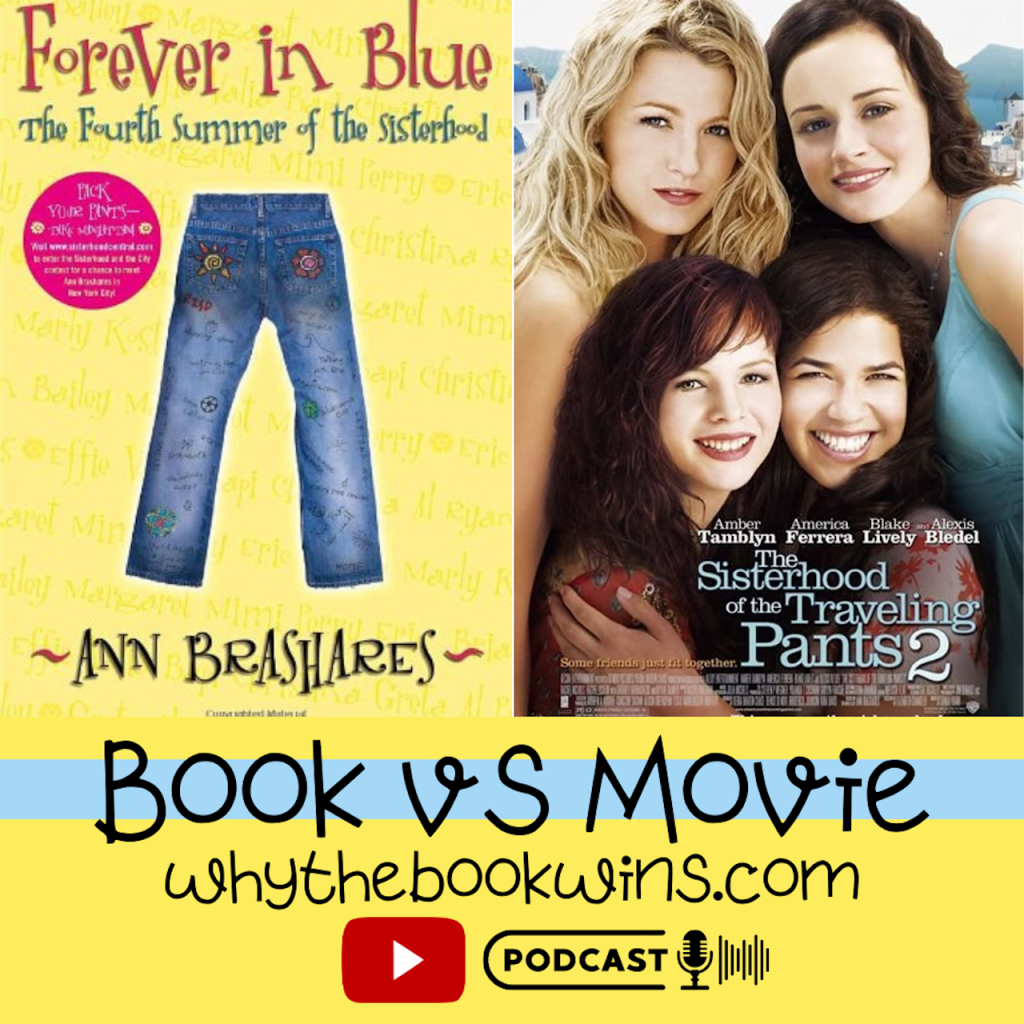
The Sisterhood of the Traveling Pants 2 Book vs Movie Review
In the sequel we see the four friends in college, trying to balance school, romance, friendships, family, and of course, the pants.
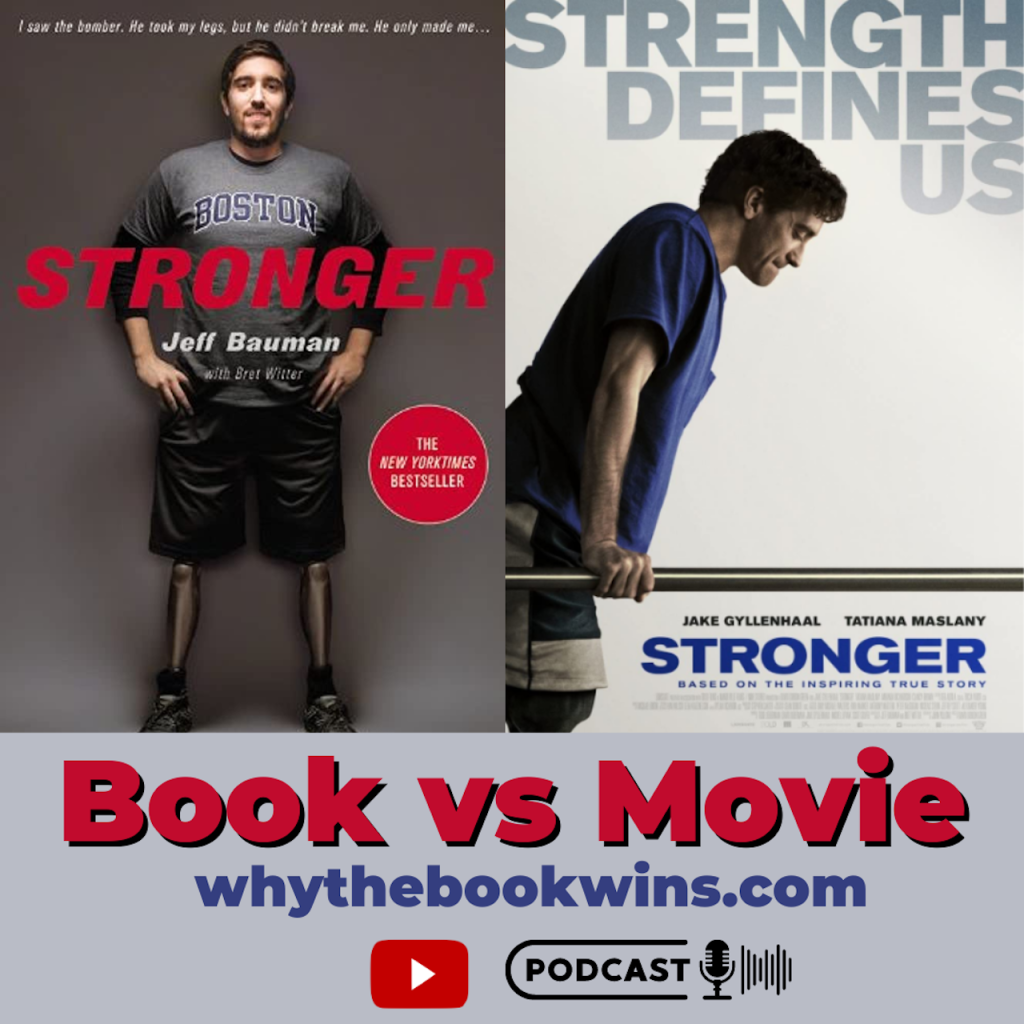
Stronger Movie vs True Story Review
Stronger is the true story of Jeff Bauman, who lost both of his legs in the Boston Marathon bombing and how he learned to walk again-both literally and figuratively.

Ella Enchanted Book vs Movie Review
Ella Enchanted is a fun retelling of Cinderella which was adapted into the movie starring Anne Hathaway. Find out how different the book and movie are!
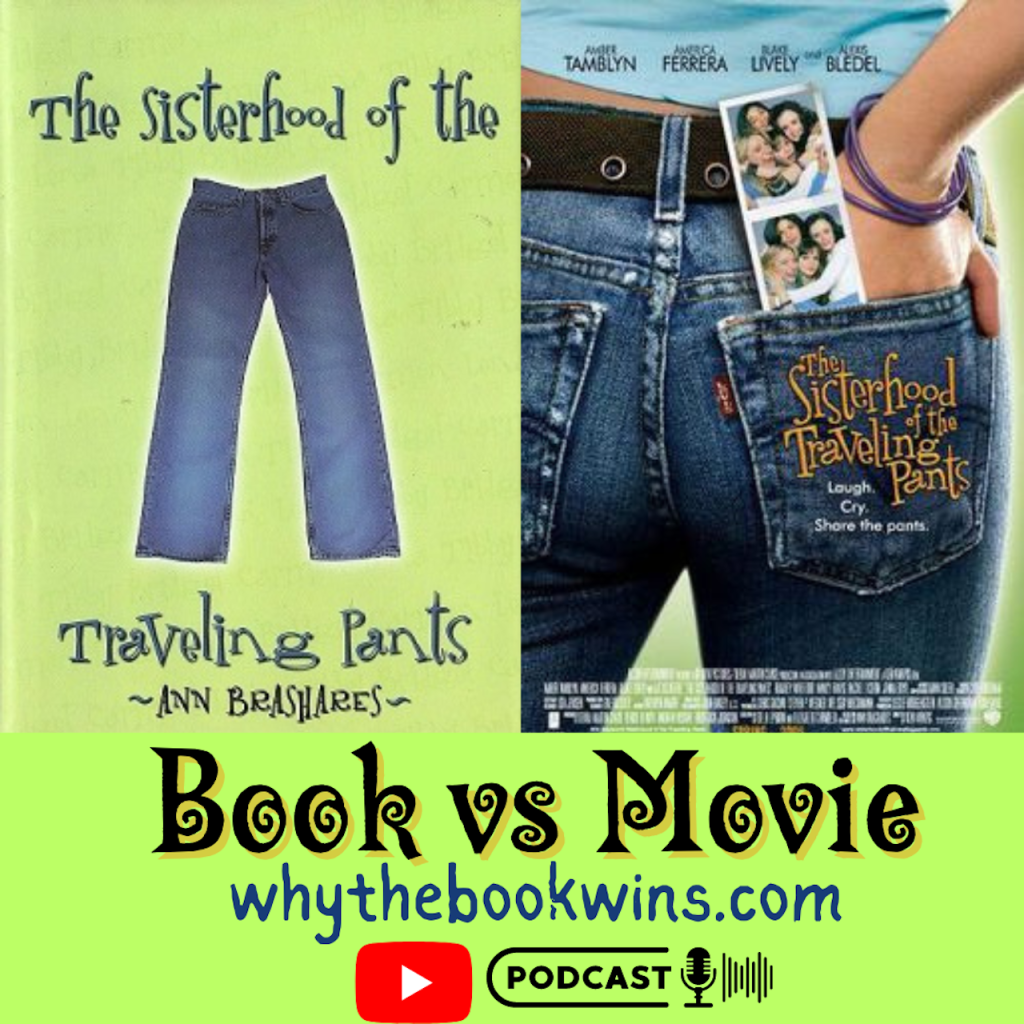
The Sisterhood of the Traveling Pants Book vs Movie Review
This coming of age story follows four best friends who each learn different things about themselves over one summer. But how does the NY Times best seller compare with the movie?
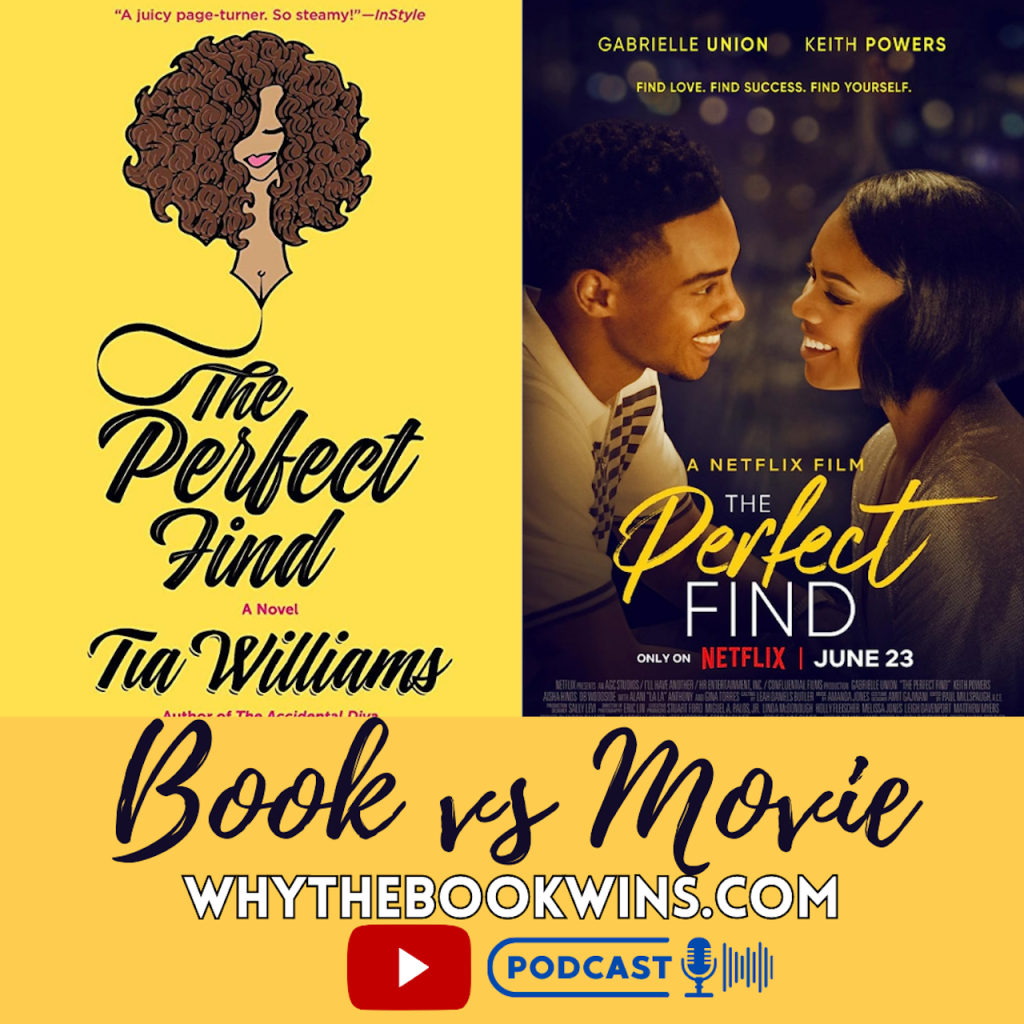
The Perfect Find Book vs Movie Review
Find out how the Tia Williams novel compares with the Netflix movie starring Gabrielle Union!
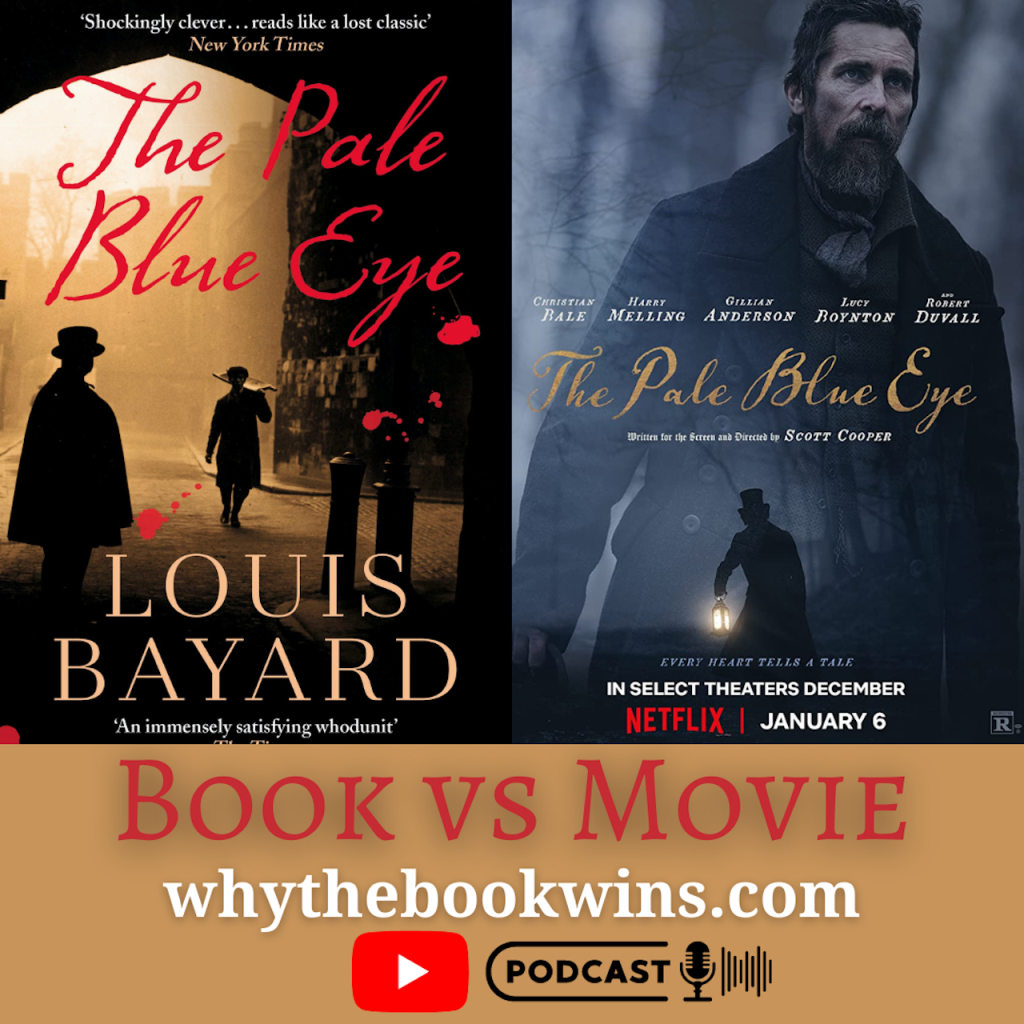
The Pale Blue Eye Book vs Movie Review
This gothic mystery includes a fictionalized version of Edgar Allan Poe and the movie stars Christian Bale. Find out why this is a great adaptation and a great mystery!
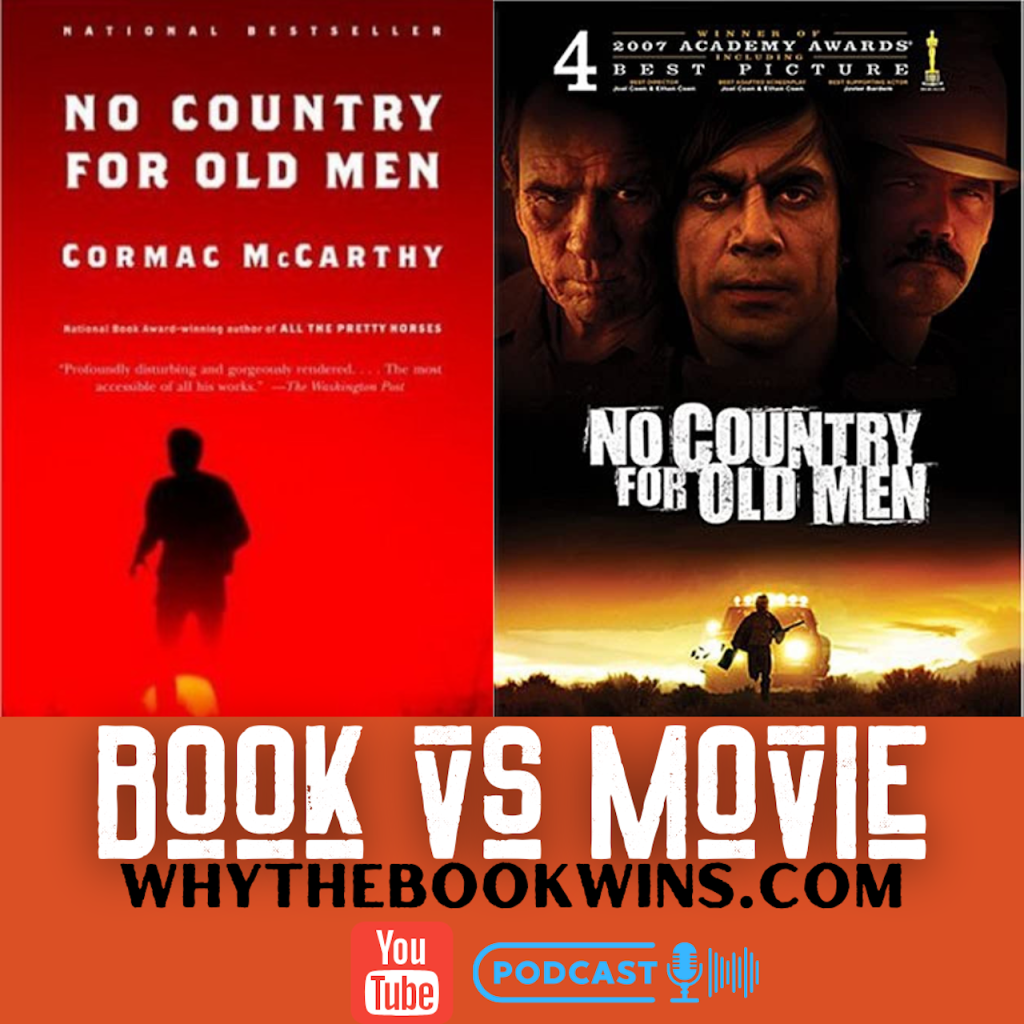
No Country for Old Men Analysis-book vs movie Review
Cormac McCarthy’s best-selling book was adapted by Joel and Ethan Coen’s who made it into an Academy Award winning movie. When it comes to which is better, it’s a nearly impossible choice!
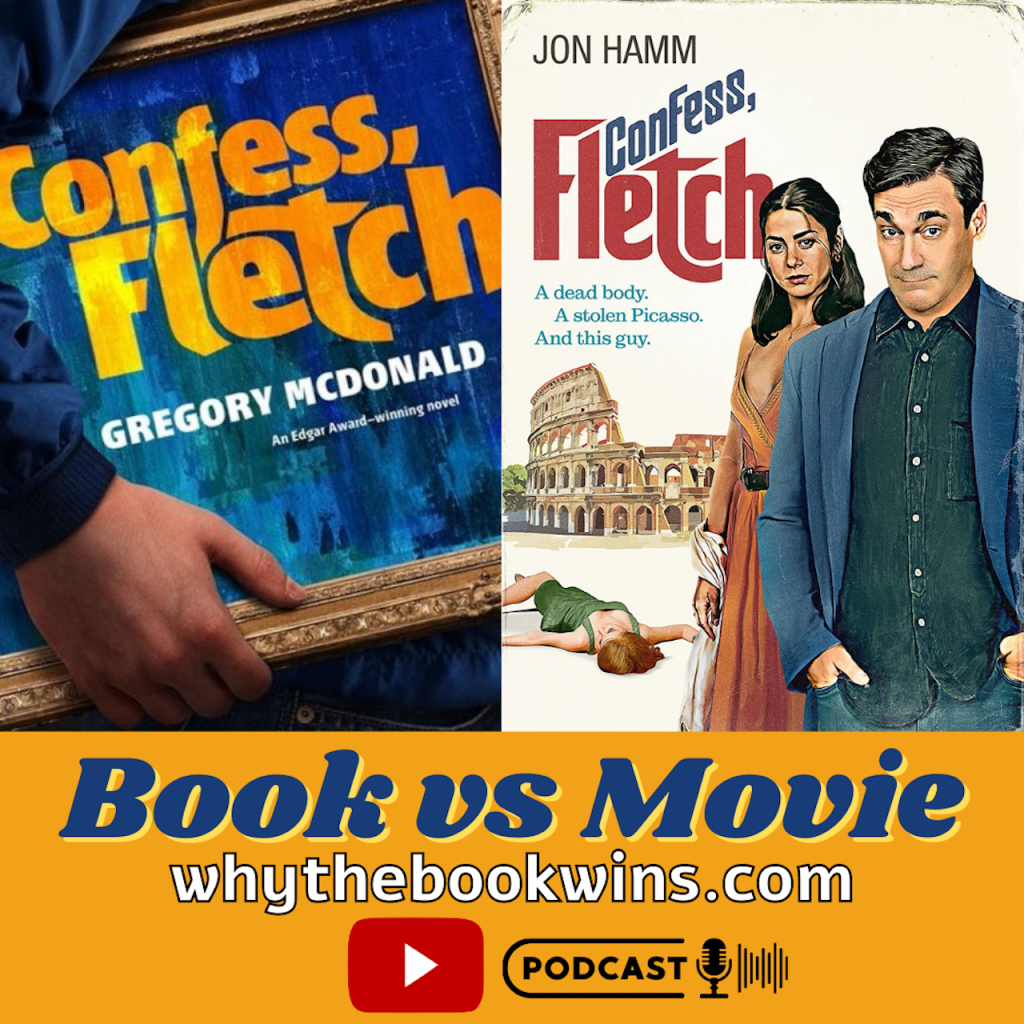
Confess, Fletch Book vs Movie Review
The character created by Gregory Mcdonald and made famous by Chevy Chase is returning with Jon Hamm in the lead! How does this comedic mystery novel compare to the movie??

Drive Book vs Movie (2011) Review
This gritty, noir novel was adapted into the atmospheric movie starring Ryan Gosling. Find out how the two compare and which I like best!

The Birds Book vs Movie Review
The Birds directed by Alfred Hitchcock starring Tippi Hedren has become so iconic. But did you know it is based on a short story by Daphne du Maurier? Find out how the two compare and which I like best!

BlackBerry Movie vs True Story Review
The new Matt Johnson movie starring Glenn Howerton and Jay Baruchel documents the true story of the BlackBerry phone. But how close does it stay to the truth? Check out today’s episode to find out!

The Talented Mr. Ripley Book vs Movie Review
Patricia Highsmith’s novel about a troubled man whose life starts to get out of hand, was adapted into movie starring Matt Damon, Jude Law, and Gwyneth Paltrow.

Are You There God? It’s Me, Margaret Book vs Movie Review
This beloved coming of age book and movie tells the story of a young girl who is navigating life in a new school, getting her period, and trying to figure out what religion she wants to be. Hear how the book and movie differ, and which I like best!
Become a Bestseller
Follow our 5-step publishing path.
Fundantals of Fiction & Story
Bring your story to life with a proven plan.
Market Your Book
Learn how to sell more copies.
Edit Your Book
Get professional editing support.
Author Advantage Accelerator Nonfiction
Grow your business, authority, and income.
Author Advantage Accelerator Fiction
Become a full-time fiction author.
Author Accelerator Elite
Take the fast-track to publishing success.
Take the Quiz
Let us pair you with the right fit.
Free Copy of Published.
Book title generator, nonfiction outline template, writing software quiz, book royalties calculator.
Learn how to write your book
Learn how to edit your book
Learn how to self-publish your book
Learn how to sell more books
Learn how to grow your business
Learn about self-help books
Learn about nonfiction writing
Learn about fiction writing
How to Get An ISBN Number
A Beginner’s Guide to Self-Publishing
How Much Do Self-Published Authors Make on Amazon?
Book Template: 9 Free Layouts
How to Write a Book in 12 Steps
The 15 Best Book Writing Software Tools
Book Introduction Examples: What Works in Five Genres
POSTED ON Apr 21, 2022
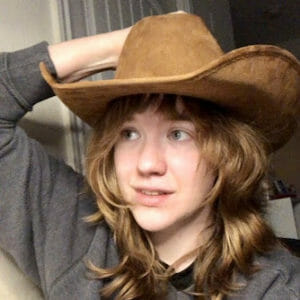
Written by Gloria Russell
The introduction of your book can make or break a reader’s decision to buy it.
That might sound like a lot of pressure, but that’s because it kind of is—your book’s introduction is your book’s first impression (aside from the cover ), and it’s important to make a good one. Regardless of what you write, whether it’s a fiction novel or a nonfiction book, you want to put your best foot forward.
Thankfully, there are plenty of great book introductions out there for us to learn from.
In this article, we’ll cover a list of book introduction examples across five genres to give you a sense of what a good book introduction looks like. Then, we’ll talk about what these introductions have in common and what makes a good book introduction for fiction and nonfiction books. By the end, you’ll be able to apply these lessons to your own work, and you’ll be able to spot both weak and strong introductions from a mile away.
Let’s get started!
This guide to book introduction examples covers:
- Self-help introduction example
- Memoir introduction example
- Mystery/thriller introduction example
- Romance introduction example
- Fantasy introduction example
- Elements of a good fiction book introduction
- Elements of a good nonfiction book introduction
Since there are approximately seven billion genres and subgenres under both the ‘nonfiction’ and ‘fiction’ umbrellas, I’ve narrowed down these examples to include a few nonfiction and fiction examples.
If you don’t see the genre or subgenre you write listed here, don’t worry—the things we learn from these book introductions can be applied to just about anything you write.
Self-Help Introduction Example
How to Win Friends and Influence People by Dale Carnegie
What makes this introduction work?
This list actually appears before the first dedication or the table of contents in the paperback version—it’s one of the very first things the reader sees after the title page. Oftentimes, it's the first thing that comes up when you “Click Inside” on a book published on Amazon .
First, we have a promise made to the reader right away: “the more you get out of this book, the more you’ll get out of life.” This hooks the reader in—even if you don’t believe it, you want to know why Carnegie thinks that. And he’s offered you a quick bullet point list, which is easy to read and follow. Readers are likely to go through it, and that gets them reading, which makes them more likely to keep reading.
Not only is the format engineered to hook the reader, but the tips themselves are interesting. Before we even get into the content, Carnegie’s giving you guidelines on how to stay engaged with this book. This makes it feel like the reader is about to learn something very important, and it makes it feel like the reader needs to pay special attention to whatever’s coming next.
The combined result of these tactics is an engaging introduction that promises to change the reader's life, convinces the reader of the book’s significance, and makes them want to read on to figure out what sort of enormously important advice Carnegie has to offer. And he does it in the space of a single page, which isn’t half bad!
Related: How to Write a Self-Help Book
Memoir Introduction Example
The Anthropocene Reviewed: Essays on a Human-Centered Planet by John Green
In this memoir, which is a collection of essays, Green rates aspects of the human experience on a five-star scale. He covers everything from Canada Geese to Diet Dr. Pepper to the internet. What makes his reviews so memorable and so poignant is the way he connects these things to other, bigger aspects of the human experience. He connects abstract concepts to personal anecdotes, everyday objects to vast, existential fears.
This introduction does exactly that. He opens with a personal anecdote about cutting a trail in his backyard and his experience with labyrinthitis, and he connects this experience to a quote from Allegra Goodman. This prompts him to talk about his experience as a mentally ill writer struggling under the scrutiny of the public eye. And he closes that second scene with a hook: “I realized I didn’t want to write in code anymore.”
As a reader, you’re immediately pulled in. You want to hear more about what Green means by this, and you also might be caught off guard by the sincere tone—”reviewing on a five star scale” sounds silly and unimportant, but with Green’s introspection and thoughtfulness, it’s anything but.
(I give this introduction five stars.)
Mystery/Thriller Introduction Example
Gone Girl by Gillian Flynn
First, we have to talk about part one’s title, “Boy Loses Girl.” This simple phrase prompts the reader to ask: “how?”
In three words, Gillian Flynn has asked a question of the reader to hook them in and keep them reading.
Next, we have our perspective, followed by another subheading: “the day of.” Like “Boy Loses Girl,” this isn’t explained, so the reader has to wonder what it means. They have to wonder—the day of what? What’s going to happen? And they’re probably assuming that it’s something to do with the boy losing the girl.
All of this happens before we even get into the prose. When we get to the opening paragraphs, we’re met with a very personal, intimate description of Amy from Nick’s perspective. We get both the promise that Nick would know Amy’s head anywhere and the fact that Nick doesn’t feel like he knows his wife at all. This theme of knowing Amy on a superficial level, on the level on which she presents herself, is huge throughout the novel.
Finally, we’re given one final hook at the end of this section: “What have we done to each other? What will we do?”
There’s a sinister undertone here when you factor in “Boy Loses Girl” and “the day of,” along with Flynn’s use of words like “stormclouds,” “catch and pin,” and “fast, frantic centipedes.”
In a few paragraphs, Flynn has hooked the reader, given the reader a sample of the themes the book will explore, and given us a good sample of Nick’s character.
Romance Introduction Example
The Duke Heist (The Wild Wynchesters Book 1) by Erica Ridley
Ridley gives us the setting immediately, which is useful for the reader to have an idea of what sort of time frame they’re working with. We open right on our main character, Chloe Wynchester, performing a strong action (‘bursting’ through the door). Her pulse races with excitement, and we get a funny jab at a Duke.
The reader’s wondering: what is Chloe excited for? Who is the Duke? Why is she upset with him? Why doesn’t he stand a chance—in other words, what are they planning to do?
This is a lot to fit into one short paragraph, and it’s done seamlessly.
Then, we get a snapshot of the Wynchesters. Ridley gives the reader a taste of how the Wynchesters interact, then she leads us to the problem at hand. A painting has been stolen, and the Wynchesters are working to recover it.
This puts the reader right in the middle of the action—hitting the ground running like these makes the reader want to keep reading and find out what happens, how we got here, and what’s at stake.
Fantasy Introduction Example
American Gods by Neil Gaiman
Gaiman opens the book with a quote about the boundaries of America as a country. American Gods explores the difference between the spiritual world and the literal, physical land, so putting this quote at the forefront of the novel puts this theme at the forefront of the reader’s mind.
These opening paragraphs also establish a ton of character and tone in writing .
“Shadow had done three years in prison” raises a ton of questions for the reader. What did he do? Was he really guilty? Readers get a sense of Shadow being a big, tough character from the first few lines, and then Gaiman adds a twist at the end of the paragraph with “and thought a lot about how much he loved his wife.”
We instantly get a sense of Shadow as a character, and we instantly get one of his core motivations. He loves his wife, and his love for his wife drives much of his action throughout American Gods . Gaiman’s got character, character motivation, the themes of the book, and a few interesting questions all packed into the first page.
Elements of a good fiction book introduction
Let’s discuss what these fiction introductions have in common.
Introduce the main character(s)
A compelling introduction starts with characters, and ideally, it starts with our main characters. You've already used a character template to sketch it out. Now, introduce the reader to the main character as quickly as possible. Do it in a way to hook the reader and get them invested in the character’s exploits.
Introduce the central conflict
Similarly, a good introduction introduces conflict as early as possible. Ideally, this is connected to the book’s main plot or conflict. Show, don't tell .
Establish themes and tone
The introduction should introduce the themes the book intends to explore, as well as establish the book’s tone. Is this moody and dark, or lighthearted and funny?
Hook the reader
The goal, ultimately, is to hook the reader. The reader should come away from the first paragraph with lots and lots of questions that all really boil down to one question: what’s going to happen next?
If the reader cares about what’s going to happen next, they’re almost guaranteed to keep reading.
Elements of a good nonfiction book introduction
The goals in a nonfiction book can be different from the goals in fiction, so let’s take a look at the elements of a good nonfiction book introduction.
Introduce the subject
In the same way that a fiction novel introduces its character and themes, a nonfiction book should open with its subject. What is this book about, and what is the author trying to teach the reader?
Introduce the method
The introduction should also explain the method by which the author will discuss their topics. For Carnegie, this is the outline example for the reader, detailing how to use the book for maximum success. For Green, this is using the introductory paragraphs as a microcosm of the book as a whole. Both authors are showing you what you’ll be getting throughout the rest of the book.
Establish credibility and relatability
Why should the reader care about the thing you have to teach them, and who are you to teach them, anyway?
Carnegie does this by making his promise that this book will change the reader’s life. Green does it by talking about his previous experience publishing. We want to hear Green’s thoughts on writing and publishing fiction because we know he’s a fiction author, and in case we didn’t know, he reminds us in the introduction.
Just like in a fiction book, nonfiction introductions should aim to hook the reader . The aim should be to draw the reader in and make them ask the same sorts of questions we covered earlier: what does this author have to teach me?
The reader should come away from the introduction eager to learn about the book because they feel connected to its purpose. ( Here's another in-depth resource for nonfiction book introductions. )
Download this free resource to help you get started on your book introduction.
Have you read any particularly powerful book introductions? Tell us about them in the comments!
FREE BOOK OUTLINE TEMPLATE
100% Customizable For Your Manuscript.
Related posts
The best 15 christian books for women to read right now.
Fiction, Writing
How to Write Dark Romance Books: Defining This Alluring Genre
How to write a book about yourself in 11 easy steps (includes publishing).

Choose Your Test
Sat / act prep online guides and tips, how to write an introduction paragraph in 3 steps.
General Education

It’s the roadmap to your essay, it’s the forecast for your argument, it’s...your introduction paragraph, and writing one can feel pretty intimidating. The introduction paragraph is a part of just about every kind of academic writing , from persuasive essays to research papers. But that doesn’t mean writing one is easy!
If trying to write an intro paragraph makes you feel like a Muggle trying to do magic, trust us: you aren’t alone. But there are some tips and tricks that can make the process easier—and that’s where we come in.
In this article, we’re going to explain how to write a captivating intro paragraph by covering the following info:
- A discussion of what an introduction paragraph is and its purpose in an essay
- An overview of the most effective introduction paragraph format, with explanations of the three main parts of an intro paragraph
- An analysis of real intro paragraph examples, with a discussion of what works and what doesn’t
- A list of four top tips on how to write an introduction paragraph
Are you ready? Let’s begin!

What Is an Introduction Paragraph?
An introduction paragraph is the first paragraph of an essay , paper, or other type of academic writing. Argumentative essays , book reports, research papers, and even personal essays are common types of writing that require an introduction paragraph. Whether you’re writing a research paper for a science course or an argumentative essay for English class , you’re going to have to write an intro paragraph.
So what’s the purpose of an intro paragraph? As a reader’s first impression of your essay, the intro paragraph should introduce the topic of your paper.
Your introduction will also state any claims, questions, or issues that your paper will focus on. This is commonly known as your paper’s thesis . This condenses the overall point of your paper into one or two short sentences that your reader can come back and reference later.
But intro paragraphs need to do a bit more than just introduce your topic. An intro paragraph is also supposed to grab your reader’s attention. The intro paragraph is your chance to provide just enough info and intrigue to make your reader say, “Hey, this topic sounds interesting. I think I’ll keep reading this essay!” That can help your essay stand out from the crowd.
In most cases, an intro paragraph will be relatively short. A good intro will be clear, brief, purposeful, and focused. While there are some exceptions to this rule, it’s common for intro paragraphs to consist of three to five sentences .
Effectively introducing your essay’s topic, purpose, and getting your reader invested in your essay sounds like a lot to ask from one little paragraph, huh? In the next section, we’ll demystify the intro paragraph format by breaking it down into its core parts . When you learn how to approach each part of an intro, writing one won’t seem so scary!

Once you figure out the three parts of an intro paragraph, writing one will be a piece of cake!
The 3 Main Parts of an Intro Paragraph
In general, an intro paragraph is going to have three main parts: a hook, context, and a thesis statement . Each of these pieces of the intro plays a key role in acquainting the reader with the topic and purpose of your essay.
Below, we’ll explain how to start an introduction paragraph by writing an effective hook, providing context, and crafting a thesis statement. When you put these elements together, you’ll have an intro paragraph that does a great job of making a great first impression on your audience!
Intro Paragraph Part 1: The Hook
When it comes to how to start an introduction paragraph, o ne of the most common approaches is to start with something called a hook.
What does hook mean here, though? Think of it this way: it’s like when you start a new Netflix series: you look up a few hours (and a few episodes) later and you say, “Whoa. I guess I must be hooked on this show!”
That’s how the hook is supposed to work in an intro paragrap h: it should get your reader interested enough that they don’t want to press the proverbial “pause” button while they’re reading it . In other words, a hook is designed to grab your reader’s attention and keep them reading your essay!
This means that the hook comes first in the intro paragraph format—it’ll be the opening sentence of your intro.
It’s important to realize that there are many different ways to write a good hook. But generally speaking, hooks must include these two things: what your topic is, and the angle you’re taking on that topic in your essay.
One approach to writing a hook that works is starting with a general, but interesting, statement on your topic. In this type of hook, you’re trying to provide a broad introduction to your topic and your angle on the topic in an engaging way .
For example, if you’re writing an essay about the role of the government in the American healthcare system, your hook might look something like this:
There's a growing movement to require that the federal government provide affordable, effective healthcare for all Americans.
This hook introduces the essay topic in a broad way (government and healthcare) by presenting a general statement on the topic. But the assumption presented in the hook can also be seen as controversial, which gets readers interested in learning more about what the writer—and the essay—has to say.
In other words, the statement above fulfills the goals of a good hook: it’s intriguing and provides a general introduction to the essay topic.
Intro Paragraph Part 2: Context
Once you’ve provided an attention-grabbing hook, you’ll want to give more context about your essay topic. Context refers to additional details that reveal the specific focus of your paper. So, whereas the hook provides a general introduction to your topic, context starts helping readers understand what exactly you’re going to be writing about
You can include anywhere from one to several sentences of context in your intro, depending on your teacher’s expectations, the length of your paper, and complexity of your topic. In these context-providing sentences, you want to begin narrowing the focus of your intro. You can do this by describing a specific issue or question about your topic that you’ll address in your essay. It also helps readers start to understand why the topic you’re writing about matters and why they should read about it.
So, what counts as context for an intro paragraph? Context can be any important details or descriptions that provide background on existing perspectives, common cultural attitudes, or a specific situation or controversy relating to your essay topic. The context you include should acquaint your reader with the issues, questions, or events that motivated you to write an essay on your topic...and that your reader should know in order to understand your thesis.
For instance, if you’re writing an essay analyzing the consequences of sexism in Hollywood, the context you include after your hook might make reference to the #metoo and #timesup movements that have generated public support for victims of sexual harassment.
The key takeaway here is that context establishes why you’re addressing your topic and what makes it important. It also sets you up for success on the final piece of an intro paragraph: the thesis statement.
Elle Woods' statement offers a specific point of view on the topic of murder...which means it could serve as a pretty decent thesis statement!
Intro Paragraph Part 3: The Thesis
The final key part of how to write an intro paragraph is the thesis statement. The thesis statement is the backbone of your introduction: it conveys your argument or point of view on your topic in a clear, concise, and compelling way . The thesis is usually the last sentence of your intro paragraph.
Whether it’s making a claim, outlining key points, or stating a hypothesis, your thesis statement will tell your reader exactly what idea(s) are going to be addressed in your essay. A good thesis statement will be clear, straightforward, and highlight the overall point you’re trying to make.
Some instructors also ask students to include an essay map as part of their thesis. An essay map is a section that outlines the major topics a paper will address. So for instance, say you’re writing a paper that argues for the importance of public transport in rural communities. Your thesis and essay map might look like this:
Having public transport in rural communities helps people improve their economic situation by giving them reliable transportation to their job, reducing the amount of money they spend on gas, and providing new and unionized work .
The underlined section is the essay map because it touches on the three big things the writer will talk about later. It literally maps out the rest of the essay!
So let’s review: Your thesis takes the idea you’ve introduced in your hook and context and wraps it up. Think of it like a television episode: the hook sets the scene by presenting a general statement and/or interesting idea that sucks you in. The context advances the plot by describing the topic in more detail and helping readers understand why the topic is important. And finally, the thesis statement provides the climax by telling the reader what you have to say about the topic.
The thesis statement is the most important part of the intro. Without it, your reader won’t know what the purpose of your essay is! And for a piece of writing to be effective, it needs to have a clear purpose. Your thesis statement conveys that purpose , so it’s important to put careful thought into writing a clear and compelling thesis statement.

How To Write an Introduction Paragraph: Example and Analysis
Now that we’ve provided an intro paragraph outline and have explained the three key parts of an intro paragraph, let’s take a look at an intro paragraph in action.
To show you how an intro paragraph works, we’ve included a sample introduction paragraph below, followed by an analysis of its strengths and weaknesses.
Example of Introduction Paragraph
While college students in the U.S. are struggling with how to pay for college, there is another surprising demographic that’s affected by the pressure to pay for college: families and parents. In the face of tuition price tags that total more than $100,000 (as a low estimate), families must make difficult decisions about how to save for their children’s college education. Charting a feasible path to saving for college is further complicated by the FAFSA’s estimates for an “Expected Family Contribution”—an amount of money that is rarely feasible for most American families. Due to these challenging financial circumstances and cultural pressure to give one’s children the best possible chance of success in adulthood, many families are going into serious debt to pay for their children’s college education. The U.S. government should move toward bearing more of the financial burden of college education.
Example of Introduction Paragraph: Analysis
Before we dive into analyzing the strengths and weaknesses of this example intro paragraph, let’s establish the essay topic. The sample intro indicates that t he essay topic will focus on one specific issue: who should cover the cost of college education in the U.S., and why. Both the hook and the context help us identify the topic, while the thesis in the last sentence tells us why this topic matters to the writer—they think the U.S. Government needs to help finance college education. This is also the writer’s argument, which they’ll cover in the body of their essay.
Now that we’ve identified the essay topic presented in the sample intro, let’s dig into some analysis. To pin down its strengths and weaknesses, we’re going to use the following three questions to guide our example of introduction paragraph analysis:
- Does this intro provide an attention-grabbing opening sentence that conveys the essay topic?
- Does this intro provide relevant, engaging context about the essay topic?
- Does this intro provide a thesis statement that establishes the writer’s point of view on the topic and what specific aspects of the issue the essay will address?
Now, let’s use the questions above to analyze the strengths and weaknesses of this sample intro paragraph.
Does the Intro Have a Good Hook?
First, the intro starts out with an attention-grabbing hook . The writer starts by presenting an assumption (that the U.S. federal government bears most of the financial burden of college education), which makes the topic relatable to a wide audience of readers. Also note that the hook relates to the general topic of the essay, which is the high cost of college education.
The hook then takes a surprising turn by presenting a counterclaim : that American families, rather than students, feel the true burden of paying for college. Some readers will have a strong emotional reaction to this provocative counterclaim, which will make them want to keep reading! As such, this intro provides an effective opening sentence that conveys the essay topic.
Does the Intro Give Context?
T he second, third, and fourth sentences of the intro provide contextual details that reveal the specific focus of the writer’s paper . Remember: the context helps readers start to zoom in on what the paper will focus on, and what aspect of the general topic (college costs) will be discussed later on.
The context in this intro reveals the intent and direction of the paper by explaining why the issue of families financing college is important. In other words, the context helps readers understand why this issue matters , and what aspects of this issue will be addressed in the paper.
To provide effective context, the writer refers to issues (the exorbitant cost of college and high levels of family debt) that have received a lot of recent scholarly and media attention. These sentences of context also elaborate on the interesting perspective included in the hook: that American families are most affected by college costs.
Does the Intro Have a Thesis?
Finally, this intro provides a thesis statement that conveys the writer’s point of view on the issue of financing college education. This writer believes that the U.S. government should do more to pay for students’ college educations.
However, the thesis statement doesn’t give us any details about why the writer has made this claim or why this will help American families . There isn’t an essay map that helps readers understand what points the writer will make in the essay.
To revise this thesis statement so that it establishes the specific aspects of the topic that the essay will address, the writer could add the following to the beginning of the thesis statement:
The U.S. government should take on more of the financial burden of college education because other countries have shown this can improve education rates while reducing levels of familial poverty.
Check out the new section in bold. Not only does it clarify that the writer is talking about the pressure put on families, it touches on the big topics the writer will address in the paper: improving education rates and reduction of poverty. So not only do we have a clearer argumentative statement in this thesis, we also have an essay map!
So, let’s recap our analysis. This sample intro paragraph does an effective job of providing an engaging hook and relatable, interesting context, but the thesis statement needs some work ! As you write your own intro paragraphs, you might consider using the questions above to evaluate and revise your work. Doing this will help ensure you’ve covered all of your bases and written an intro that your readers will find interesting!

4 Tips for How To Write an Introduction Paragraph
Now that we’ve gone over an example of introduction paragraph analysis, let’s talk about how to write an introduction paragraph of your own. Keep reading for four tips for writing a successful intro paragraph for any essay.
Tip 1: Analyze Your Essay Prompt
If you’re having trouble with how to start an introduction paragraph, analyze your essay prompt! Most teachers give you some kind of assignment sheet, formal instructions, or prompt to set the expectations for an essay they’ve assigned, right? Those instructions can help guide you as you write your intro paragraph!
Because they’ll be reading and responding to your essay, you want to make sure you meet your teacher’s expectations for an intro paragraph . For instance, if they’ve provided specific instructions about how long the intro should be or where the thesis statement should be located, be sure to follow them!
The type of paper you’re writing can give you clues as to how to approach your intro as well. If you’re writing a research paper, your professor might expect you to provide a research question or state a hypothesis in your intro. If you’re writing an argumentative essay, you’ll need to make sure your intro overviews the context surrounding your argument and your thesis statement includes a clear, defensible claim.
Using the parameters set out by your instructor and assignment sheet can put some easy-to-follow boundaries in place for things like your intro’s length, structure, and content. Following these guidelines can free you up to focus on other aspects of your intro... like coming up with an exciting hook and conveying your point of view on your topic!
Tip 2: Narrow Your Topic
You can’t write an intro paragraph without first identifying your topic. To make your intro as effective as possible, you need to define the parameters of your topic clearly—and you need to be specific.
For example, let’s say you want to write about college football. “NCAA football” is too broad of a topic for a paper. There is a lot to talk about in terms of college football! It would be tough to write an intro paragraph that’s focused, purposeful, and engaging on this topic. In fact, if you did try to address this whole topic, you’d probably end up writing a book!
Instead, you should narrow broad topics to identify a specific question, claim, or issue pertaining to some aspect of NCAA football for your intro to be effective. So, for instance, you could frame your topic as, “How can college professors better support NCAA football players in academics?” This focused topic pertaining to NCAA football would give you a more manageable angle to discuss in your paper.
So before you think about writing your intro, ask yourself: Is my essay topic specific, focused, and logical? Does it convey an issue or question that I can explore over the course of several pages? Once you’ve established a good topic, you’ll have the foundation you need to write an effective intro paragraph .

Once you've figured out your topic, it's time to hit the books!
Tip 3: Do Your Research
This tip is tightly intertwined with the one above, and it’s crucial to writing a good intro: do your research! And, guess what? This tip applies to all papers—even ones that aren’t technically research papers.
Here’s why you need to do some research: getting the lay of the land on what others have said about your topic—whether that’s scholars and researchers or the mass media— will help you narrow your topic, write an engaging hook, and provide relatable context.
You don't want to sit down to write your intro without a solid understanding of the different perspectives on your topic. Whether those are the perspectives of experts or the general public, these points of view will help you write your intro in a way that is intriguing and compelling for your audience of readers.
Tip 4: Write Multiple Drafts
Some say to write your intro first; others say write it last. The truth is, there isn’t a right or wrong time to write your intro—but you do need to have enough time to write multiple drafts .
Oftentimes, your professor will ask you to write multiple drafts of your paper, which gives you a built-in way to make sure you revise your intro. Another approach you could take is to write out a rough draft of your intro before you begin writing your essay, then revise it multiple times as you draft out your paper.
Here’s why this approach can work: as you write your paper, you’ll probably come up with new insights on your topic that you didn’t have right from the start. You can use these “light bulb” moments to reevaluate your intro and make revisions that keep it in line with your developing essay draft.
Once you’ve written your entire essay, consider going back and revising your intro again . You can ask yourself these questions as you evaluate your intro:
- Is my hook still relevant to the way I’ve approached the topic in my essay?
- Do I provide enough appropriate context to introduce my essay?
- Now that my essay is written, does my thesis statement still accurately reflect the point of view that I present in my essay?
Using these questions as a guide and putting your intro through multiple revisions will help ensure that you’ve written the best intro for the final draft of your essay. Also, revising your writing is always a good thing to do—and this applies to your intro, too!

What's Next?
Your college essays also need great intro paragraphs. Here’s a guide that focuses on how to write the perfect intro for your admissions essays.
Of course, the intro is just one part of your college essay . This article will teach you how to write a college essay that makes admissions counselors sit up and take notice.
Are you trying to write an analytical essay? Our step-by-step guide can help you knock it out of the park.

Ashley Sufflé Robinson has a Ph.D. in 19th Century English Literature. As a content writer for PrepScholar, Ashley is passionate about giving college-bound students the in-depth information they need to get into the school of their dreams.
Student and Parent Forum
Our new student and parent forum, at ExpertHub.PrepScholar.com , allow you to interact with your peers and the PrepScholar staff. See how other students and parents are navigating high school, college, and the college admissions process. Ask questions; get answers.

Ask a Question Below
Have any questions about this article or other topics? Ask below and we'll reply!
Improve With Our Famous Guides
- For All Students
The 5 Strategies You Must Be Using to Improve 160+ SAT Points
How to Get a Perfect 1600, by a Perfect Scorer
Series: How to Get 800 on Each SAT Section:
Score 800 on SAT Math
Score 800 on SAT Reading
Score 800 on SAT Writing
Series: How to Get to 600 on Each SAT Section:
Score 600 on SAT Math
Score 600 on SAT Reading
Score 600 on SAT Writing
Free Complete Official SAT Practice Tests
What SAT Target Score Should You Be Aiming For?
15 Strategies to Improve Your SAT Essay
The 5 Strategies You Must Be Using to Improve 4+ ACT Points
How to Get a Perfect 36 ACT, by a Perfect Scorer
Series: How to Get 36 on Each ACT Section:
36 on ACT English
36 on ACT Math
36 on ACT Reading
36 on ACT Science
Series: How to Get to 24 on Each ACT Section:
24 on ACT English
24 on ACT Math
24 on ACT Reading
24 on ACT Science
What ACT target score should you be aiming for?
ACT Vocabulary You Must Know
ACT Writing: 15 Tips to Raise Your Essay Score
How to Get Into Harvard and the Ivy League
How to Get a Perfect 4.0 GPA
How to Write an Amazing College Essay
What Exactly Are Colleges Looking For?
Is the ACT easier than the SAT? A Comprehensive Guide
Should you retake your SAT or ACT?
When should you take the SAT or ACT?
Stay Informed
Get the latest articles and test prep tips!
Looking for Graduate School Test Prep?
Check out our top-rated graduate blogs here:
GRE Online Prep Blog
GMAT Online Prep Blog
TOEFL Online Prep Blog
Holly R. "I am absolutely overjoyed and cannot thank you enough for helping me!”
- AI Content Shield
- AI KW Research
- AI Assistant
- SEO Optimizer
- AI KW Clustering
- Customer reviews
- The NLO Revolution
- Press Center
- Help Center
- Content Resources
- Facebook Group
How to Write Introductions for an Essay on Novels
Table of Contents
Writing a clear, concise intro is crucial because it will be the first thing your reader sees when reading your literary analysis essay.
To analyze literature, a writer must closely follow a theme, motif, character arc, or stylistic component. You should also assess the theme’s significance in relation to the overall plot of the book.
It’s frequently necessary to persuade the reader of your point of view in literary analysis because it depends on the writer’s interpretation of the text. Your reader will be more receptive to your main points if your essay has a compelling intro.
In today’s post, we’re going to look how you can write introductions for essays on novels . Sounds exciting? Well then, keep reading!
How to Write Introductions for Essays on Novels?
After writing your book essay, start writing the intro. This may seem counter-intuitive, but after you’ve listed and explained all of your main points, you’ll be better able to determine what they all have in common, which you can discuss in your essay’s opening paragraph.
After you have finished creating an extensive outline for the essay, organized your paper, and laid out your main points, you can start writing the intro.
Use a grabber at the beginning of your intro of your essay. An effective opening line for a book essay can be a brief quotation from the work you’re analyzing that captures a key idea . Other effective attention-getters include quotations from the book’s author that speak to the subject of your essay or another issue connected to the text and your interpretation of it.
In the first sentence of the introduction, enclose the quote in quotation marks. The quote’s speaker and context should be mentioned in the following sentence, along with a brief explanation of how the section relates to your literary analysis.
The body of your introduction should be kept brief. A literary analysis essay should have eight to twelve sentences per paragraph. Write three to four sentences that broadly describe your paper’s topic and explain why it is fascinating and significant to the book you are reading for the introduction. The majority of your introductory paragraph will be composed of these three or four sentences. Sketch out in these sentences the key ideas that are explained in more detail in the essay’s body.
Your thesis statement should be the last sentence of your introduction of your essay. The main argument of your entire paper is stated in this statement. It should always be the final sentence of the introduction, whether it takes up one or two.
More Tips For Writing Introductions for Essays on Novels
The argument you wish to make regarding the text serves as your thesis in a literary analysis essay. Your essay’s main argument gives it focus and prevents it from being just a collection of random observations about a text.
Your statement should provide a response to this query—not just a yes-or-no answer, but a justification for why this is or isn’t the case. You may occasionally be allowed to select your subject, in which case you must develop a unique thesis.
Think about the parts of the book that stood out to you; ponder questions you might have about the topics that piqued your interest. Your thesis should be debatable, which means it should be something you believe to be true about the book but is not just a matter of fact. It must be intricate enough to be supported by evidence and arguments throughout your essay.
Your essay will develop an argument using evidence—specific passages from the book that prove your point—to support your thesis statement. This supporting information is cited and discussed in your essay to help the reader understand your argument.
Before you begin writing, it can be helpful to go through the text in search of pertinent quotations. Collecting evidence from the start of the book will help you structure your arguments and determine whether they are persuasive. You may not use everything you find and need to go back to the book for more support as you write.
The focus of your essay should be made abundantly clear in your title. It typically includes the title of the author and the text or texts you are analyzing. Try to be as brief and exciting as you can.
An intro for an essay on a novel should do three main things. It should state the exact purpose of the essay, give a brief background for the reader to understand the argument , and announce the central point of the essay. This will make it clear to the reader what will be covered in the body of the essay, which will make the book essay more interesting to read.

Abir Ghenaiet
Abir is a data analyst and researcher. Among her interests are artificial intelligence, machine learning, and natural language processing. As a humanitarian and educator, she actively supports women in tech and promotes diversity.
Explore All Essay Intro Generator Articles
The different ways to start a comparative essay.
Some writers intend to compare two specific things or ideas through their articles. They write these essays to compare and…
- Essay Intro Generator
Know The Best Way to Start an Expository Essay
Are you into writing essays that tackle a still-unknown fact? Do you know how to write an expository essay? Before…
Writing an Opinion Essay? Read This First!
Students are required to express their opinions on a topic in an opinion essay. Pertinent illustrations and explanations support their…
Identifying the Best Transitions to Start an Essay
A typical academic assignment is the essay, which must meet certain requirements in order to be written properly. Even students…
How to Write Introductions for Synthesis Essays
One of the most exciting assignments you could have is writing a synthesis essay. For a college or university student,…
How to Write Introductions for Music Essays
Music is food for the soul, or so they say. A music essay analyzes or describes a piece of music,…

Introductions
What this handout is about.
This handout will explain the functions of introductions, offer strategies for creating effective introductions, and provide some examples of less effective introductions to avoid.
The role of introductions
Introductions and conclusions can be the most difficult parts of papers to write. Usually when you sit down to respond to an assignment, you have at least some sense of what you want to say in the body of your paper. You might have chosen a few examples you want to use or have an idea that will help you answer the main question of your assignment; these sections, therefore, may not be as hard to write. And it’s fine to write them first! But in your final draft, these middle parts of the paper can’t just come out of thin air; they need to be introduced and concluded in a way that makes sense to your reader.
Your introduction and conclusion act as bridges that transport your readers from their own lives into the “place” of your analysis. If your readers pick up your paper about education in the autobiography of Frederick Douglass, for example, they need a transition to help them leave behind the world of Chapel Hill, television, e-mail, and The Daily Tar Heel and to help them temporarily enter the world of nineteenth-century American slavery. By providing an introduction that helps your readers make a transition between their own world and the issues you will be writing about, you give your readers the tools they need to get into your topic and care about what you are saying. Similarly, once you’ve hooked your readers with the introduction and offered evidence to prove your thesis, your conclusion can provide a bridge to help your readers make the transition back to their daily lives. (See our handout on conclusions .)
Note that what constitutes a good introduction may vary widely based on the kind of paper you are writing and the academic discipline in which you are writing it. If you are uncertain what kind of introduction is expected, ask your instructor.
Why bother writing a good introduction?
You never get a second chance to make a first impression. The opening paragraph of your paper will provide your readers with their initial impressions of your argument, your writing style, and the overall quality of your work. A vague, disorganized, error-filled, off-the-wall, or boring introduction will probably create a negative impression. On the other hand, a concise, engaging, and well-written introduction will start your readers off thinking highly of you, your analytical skills, your writing, and your paper.
Your introduction is an important road map for the rest of your paper. Your introduction conveys a lot of information to your readers. You can let them know what your topic is, why it is important, and how you plan to proceed with your discussion. In many academic disciplines, your introduction should contain a thesis that will assert your main argument. Your introduction should also give the reader a sense of the kinds of information you will use to make that argument and the general organization of the paragraphs and pages that will follow. After reading your introduction, your readers should not have any major surprises in store when they read the main body of your paper.
Ideally, your introduction will make your readers want to read your paper. The introduction should capture your readers’ interest, making them want to read the rest of your paper. Opening with a compelling story, an interesting question, or a vivid example can get your readers to see why your topic matters and serve as an invitation for them to join you for an engaging intellectual conversation (remember, though, that these strategies may not be suitable for all papers and disciplines).
Strategies for writing an effective introduction
Start by thinking about the question (or questions) you are trying to answer. Your entire essay will be a response to this question, and your introduction is the first step toward that end. Your direct answer to the assigned question will be your thesis, and your thesis will likely be included in your introduction, so it is a good idea to use the question as a jumping off point. Imagine that you are assigned the following question:
Drawing on the Narrative of the Life of Frederick Douglass , discuss the relationship between education and slavery in 19th-century America. Consider the following: How did white control of education reinforce slavery? How did Douglass and other enslaved African Americans view education while they endured slavery? And what role did education play in the acquisition of freedom? Most importantly, consider the degree to which education was or was not a major force for social change with regard to slavery.
You will probably refer back to your assignment extensively as you prepare your complete essay, and the prompt itself can also give you some clues about how to approach the introduction. Notice that it starts with a broad statement and then narrows to focus on specific questions from the book. One strategy might be to use a similar model in your own introduction—start off with a big picture sentence or two and then focus in on the details of your argument about Douglass. Of course, a different approach could also be very successful, but looking at the way the professor set up the question can sometimes give you some ideas for how you might answer it. (See our handout on understanding assignments for additional information on the hidden clues in assignments.)
Decide how general or broad your opening should be. Keep in mind that even a “big picture” opening needs to be clearly related to your topic; an opening sentence that said “Human beings, more than any other creatures on earth, are capable of learning” would be too broad for our sample assignment about slavery and education. If you have ever used Google Maps or similar programs, that experience can provide a helpful way of thinking about how broad your opening should be. Imagine that you’re researching Chapel Hill. If what you want to find out is whether Chapel Hill is at roughly the same latitude as Rome, it might make sense to hit that little “minus” sign on the online map until it has zoomed all the way out and you can see the whole globe. If you’re trying to figure out how to get from Chapel Hill to Wrightsville Beach, it might make more sense to zoom in to the level where you can see most of North Carolina (but not the rest of the world, or even the rest of the United States). And if you are looking for the intersection of Ridge Road and Manning Drive so that you can find the Writing Center’s main office, you may need to zoom all the way in. The question you are asking determines how “broad” your view should be. In the sample assignment above, the questions are probably at the “state” or “city” level of generality. When writing, you need to place your ideas in context—but that context doesn’t generally have to be as big as the whole galaxy!
Try writing your introduction last. You may think that you have to write your introduction first, but that isn’t necessarily true, and it isn’t always the most effective way to craft a good introduction. You may find that you don’t know precisely what you are going to argue at the beginning of the writing process. It is perfectly fine to start out thinking that you want to argue a particular point but wind up arguing something slightly or even dramatically different by the time you’ve written most of the paper. The writing process can be an important way to organize your ideas, think through complicated issues, refine your thoughts, and develop a sophisticated argument. However, an introduction written at the beginning of that discovery process will not necessarily reflect what you wind up with at the end. You will need to revise your paper to make sure that the introduction, all of the evidence, and the conclusion reflect the argument you intend. Sometimes it’s easiest to just write up all of your evidence first and then write the introduction last—that way you can be sure that the introduction will match the body of the paper.
Don’t be afraid to write a tentative introduction first and then change it later. Some people find that they need to write some kind of introduction in order to get the writing process started. That’s fine, but if you are one of those people, be sure to return to your initial introduction later and rewrite if necessary.
Open with something that will draw readers in. Consider these options (remembering that they may not be suitable for all kinds of papers):
- an intriguing example —for example, Douglass writes about a mistress who initially teaches him but then ceases her instruction as she learns more about slavery.
- a provocative quotation that is closely related to your argument —for example, Douglass writes that “education and slavery were incompatible with each other.” (Quotes from famous people, inspirational quotes, etc. may not work well for an academic paper; in this example, the quote is from the author himself.)
- a puzzling scenario —for example, Frederick Douglass says of slaves that “[N]othing has been left undone to cripple their intellects, darken their minds, debase their moral nature, obliterate all traces of their relationship to mankind; and yet how wonderfully they have sustained the mighty load of a most frightful bondage, under which they have been groaning for centuries!” Douglass clearly asserts that slave owners went to great lengths to destroy the mental capacities of slaves, yet his own life story proves that these efforts could be unsuccessful.
- a vivid and perhaps unexpected anecdote —for example, “Learning about slavery in the American history course at Frederick Douglass High School, students studied the work slaves did, the impact of slavery on their families, and the rules that governed their lives. We didn’t discuss education, however, until one student, Mary, raised her hand and asked, ‘But when did they go to school?’ That modern high school students could not conceive of an American childhood devoid of formal education speaks volumes about the centrality of education to American youth today and also suggests the significance of the deprivation of education in past generations.”
- a thought-provoking question —for example, given all of the freedoms that were denied enslaved individuals in the American South, why does Frederick Douglass focus his attentions so squarely on education and literacy?
Pay special attention to your first sentence. Start off on the right foot with your readers by making sure that the first sentence actually says something useful and that it does so in an interesting and polished way.
How to evaluate your introduction draft
Ask a friend to read your introduction and then tell you what he or she expects the paper will discuss, what kinds of evidence the paper will use, and what the tone of the paper will be. If your friend is able to predict the rest of your paper accurately, you probably have a good introduction.
Five kinds of less effective introductions
1. The placeholder introduction. When you don’t have much to say on a given topic, it is easy to create this kind of introduction. Essentially, this kind of weaker introduction contains several sentences that are vague and don’t really say much. They exist just to take up the “introduction space” in your paper. If you had something more effective to say, you would probably say it, but in the meantime this paragraph is just a place holder.
Example: Slavery was one of the greatest tragedies in American history. There were many different aspects of slavery. Each created different kinds of problems for enslaved people.
2. The restated question introduction. Restating the question can sometimes be an effective strategy, but it can be easy to stop at JUST restating the question instead of offering a more specific, interesting introduction to your paper. The professor or teaching assistant wrote your question and will be reading many essays in response to it—he or she does not need to read a whole paragraph that simply restates the question.
Example: The Narrative of the Life of Frederick Douglass discusses the relationship between education and slavery in 19th century America, showing how white control of education reinforced slavery and how Douglass and other enslaved African Americans viewed education while they endured. Moreover, the book discusses the role that education played in the acquisition of freedom. Education was a major force for social change with regard to slavery.
3. The Webster’s Dictionary introduction. This introduction begins by giving the dictionary definition of one or more of the words in the assigned question. Anyone can look a word up in the dictionary and copy down what Webster says. If you want to open with a discussion of an important term, it may be far more interesting for you (and your reader) if you develop your own definition of the term in the specific context of your class and assignment. You may also be able to use a definition from one of the sources you’ve been reading for class. Also recognize that the dictionary is also not a particularly authoritative work—it doesn’t take into account the context of your course and doesn’t offer particularly detailed information. If you feel that you must seek out an authority, try to find one that is very relevant and specific. Perhaps a quotation from a source reading might prove better? Dictionary introductions are also ineffective simply because they are so overused. Instructors may see a great many papers that begin in this way, greatly decreasing the dramatic impact that any one of those papers will have.
Example: Webster’s dictionary defines slavery as “the state of being a slave,” as “the practice of owning slaves,” and as “a condition of hard work and subjection.”
4. The “dawn of man” introduction. This kind of introduction generally makes broad, sweeping statements about the relevance of this topic since the beginning of time, throughout the world, etc. It is usually very general (similar to the placeholder introduction) and fails to connect to the thesis. It may employ cliches—the phrases “the dawn of man” and “throughout human history” are examples, and it’s hard to imagine a time when starting with one of these would work. Instructors often find them extremely annoying.
Example: Since the dawn of man, slavery has been a problem in human history.
5. The book report introduction. This introduction is what you had to do for your elementary school book reports. It gives the name and author of the book you are writing about, tells what the book is about, and offers other basic facts about the book. You might resort to this sort of introduction when you are trying to fill space because it’s a familiar, comfortable format. It is ineffective because it offers details that your reader probably already knows and that are irrelevant to the thesis.
Example: Frederick Douglass wrote his autobiography, Narrative of the Life of Frederick Douglass, An American Slave , in the 1840s. It was published in 1986 by Penguin Books. In it, he tells the story of his life.
And now for the conclusion…
Writing an effective introduction can be tough. Try playing around with several different options and choose the one that ends up sounding best to you!
Just as your introduction helps readers make the transition to your topic, your conclusion needs to help them return to their daily lives–but with a lasting sense of how what they have just read is useful or meaningful. Check out our handout on conclusions for tips on ending your paper as effectively as you began it!
Works consulted
We consulted these works while writing this handout. This is not a comprehensive list of resources on the handout’s topic, and we encourage you to do your own research to find additional publications. Please do not use this list as a model for the format of your own reference list, as it may not match the citation style you are using. For guidance on formatting citations, please see the UNC Libraries citation tutorial . We revise these tips periodically and welcome feedback.
Douglass, Frederick. 1995. Narrative of the Life of Frederick Douglass, an American Slave, Written by Himself . New York: Dover.
You may reproduce it for non-commercial use if you use the entire handout and attribute the source: The Writing Center, University of North Carolina at Chapel Hill
Make a Gift
- WRITING CENTER
- CUSTOMER AREA
- Client Reviews
- Sample Papers
- Writing Resources
Among the TOP STUDENTS in the WORLD is a GROUP of STUDENTS who have used OUR SERVICES!
Essay homework help offers academic writing services to students either struggling to write their own papers or who lack sufficient time to complete their paper on time. whether you are looking for extra hours to be with your family, ill or you are running out of time, simply contact our mba writers via the order button below and we will be glad to assist., we get paid to write students assignments everyday - get your a grade now.
- Homework Help
How to Write an Essay Introduction for a Book
As you scroll down to the article, remember, we can write your assignment and get you an a grade, do you know why almost all your classmates seek writing help - because they are stressed out. all students go through a lot of stress, as the professors demand more work than the students can complete. seeking the best quality in the writing industry you’ll love this: we give you affordable prices for top quality, experienced writers, get well-researched papers that are originally written to avoid plagiarism from our masters and ph.d. writers., timely delivery, we know how important it is to submit your work on time. our professional writers get it done on time., 100% anonymity, while homework assistance gets you great grades, you also want to work with a company that guarantees privacy., unlimited revisions, once your order is submitted, you can request as many revisions as possible at no extra cost., is homework help good for you, you’re good with the fact that you need to get paper writing help online. essay homework help combines unique features that make it entirely client-oriented. we strive for perfection in every single aspect of our work processes; you can count on getting clear answers from the best support team and receiving flawlessly executed writing tasks at affordable prices., we get you at the top of your class, at essay homework help, our dedicated and professional writers and support team offer quality academic writing services to students either struggling to write or complete their own papers on time. with our academic paper writing service, you have the ability to choose from different levels of academic writing services to suit your needs. you will achieve academic progress without the fuss and hassles., get off homework as you attend to your health matters, at essay homework help, we value your health. completing quality, plagiarism-free papers gives you the peace of mind needed from your busy schedule. if your paper is causing you any kind of frustration, makes you nervous or stressed, we have an easy way out for you – without any consequences for your grade or health. our services are completely confidential; get the help you need from our professional writers., get time for your business/job or sports, amidst the complexities and eventual challenges related to meeting the demands of your personal life, our academic writing services remain a valuable tool for you to experience extra-curricular activities outside your academic life. instead of grueling over writing assignments, you can spend your valuable time on other important activities. just let us do the work for you., get time to be with your family and friends, the capacity of our service to participate in such endeavor creates opportunities for you to enjoy your university life. as a result, you would be successfully admitted to the universities and colleges you applied to with the help of top-quality application papers our writers create for you., unmatched quality control for all your writing needs, this homework sample is carefully selected from the best writers in our team. you may use this sample to write your own assignment but if you are looking for a homework paper to submit, click on the order button below to submit your assignment instructions. our support team will review your instructions and assign your order to the best available mba homework writer. get homework writing now.
Writing an essay for a book tends to be descriptive and analytical. When you have this assignment, you must prepare for a thorough job that involves a deeper understanding of the book in question. In while describing the book, you paint the content plainly for the reader to visualize your essay. Do this in a persuasive way, and give them every reason not to miss reading your whole paper. Besides this, you must introduce your essay in a captivating manner that wets the reading appetite of your audience. Read on and find out more hints on how to write an essay introduction for a book.
See what this page contains:
- Writing good essay introduction for a book
- Parts of an essay introduction for a book
- Model essay introductions for books
This guide is solid toolkit that will simplify your work whenever you are drafting essay intros for different books. Simply adjust it to serve the purpose of your assignment. Keep reading to get more…
How to write an essay introduction for a book
Before you an essay for a book, take your time, read the book, think deeply about the book and demonstrate your understanding.
An essay about a book can take any format. In most cases, your tutor will give you a guide to follow in order to come up with an essay that meets your course objectives. Stick to these guidelines because they form the basis of grading and evaluation of your work.
When writing your essay introduction, do the following:
Stage 1: State the title and author of the book – As you think of how to write an essay introduction for a book, your focus should be on identifying the text fully. Clearly capture the title and author of the book you are writing about. This helps the reader to know what you are doing.
Stage 2: Give publication information – Here, state the publisher and the city of publication. Also, capture the year publication, current edition and the number of pages.
Stage 3: State the genre – As you introduce your essay, classify the book appropriately. For example, state if it is fictional or nonfictional.
Stage 4: Give a brief review of the book – At this level, summarize the main ideas, which the author is advancing in the book.
These four stages should help you do an excellent essay introduction. However, your work will be easier and enjoyable if you read the text and grasp its theme. As you read, keep the following questions alive in your mind:
Questions to ask before writing an essay introduction of a book
- What is the main issue that the author is addressing in the book?
- What is the author’s thesis statement?
- What is the order of ideas in the book, thematic or chronological?
If you can provide accurate answers to these questions, then you will draft your paper with ease. For now, let us consider an example that will help you gain more insights on how to write an essay introduction for a book.
Example #1: Sample essay introduction for a book
In the Essay on the Novel: The Color Purple by Alice Walker , the writer digests the book to help readers understand it better. Here is the introduction:
Alice Walker’s, The Color Purple , was published in the year 1980 in California. The setting of the novel is in the rural areas of Georgia. In this book, black women demonstrate their love each other and documents their tales in the hands of their abusive men. Throughout the book, the author focuses on the struggles of black women as they strive to gain self-esteem and respect. It captures their effort to realize equal treatment in the society. The two main themes of this novel are violence and oppression.
Notice how the writer introduces this essay by laying the foundation and helping the reader understand the novel easily. In the first two sentences, he identifies the author and title of the book plus the year and city of publication. The introduction also gives the context of the book by painting a setting characterized by violence and oppression. You can read the rest of the essay here .
Steps on how to write an essay introduction for a book
The following guidelines on how to write an essay introduction for a book should help you identify relevant information to include in your paper.
IDEA 1: Provide enough background information – Besides giving bibliographical details, which should include the author, title and publisher, furnish your audience with historical background of the book. For example, identify the time and region within which the events of the book are taking place.
IDEA 2: State the author’s purpose – Since you read the book before writing, explain to the reader why the author wrote the book. Was the author under the influence of any prevailing circumstances?
IDEA 3: Identify the thesis of the book – This could be hard for fictional books. However, when writing an essay introduction on a nonfictional book, be sure to bring out the author’s main idea. The author’s thesis shows his work’s contribution and significance.
IDEA 4: Give your thesis statement – After identifying the author’s main idea, it is now your turn to create a statement to propel your argument as you write about the book. Your thesis should come toward the end of your introduction paragraph and must coherent with a convincing evaluation of the book.
Your thesis statement should have the following parts:
- The main argument of the book
- Strengths and weaknesses of the book
- Your evaluation of the book regarding the strengths and weaknesses
As you will see from the following example, an introduction of your essay sets the pace for the rest of your work. Study it to gain more knowledge on how to write an essay introduction for a book.
Example 2: Sample essay introduction for a book
Consider the following essay on ‘A Random Walk Down Wall Street’ . The writer reviews the book, explaining various angles, which the author uses to advance his argument. Here is the introduction:
Burton G. Malkiel’s ‘ A Random Walk Down Wall Street’ , is an investment book, which was published in 1973. Since then, the book has been revised seven times and the current edition was published in 2012. Malkiel is a Professor of Economics at Princeton University and the Chairman of Chemical Bank. This stamps his credibility as an authoritative voice in addressing matters of investment and advising potential investors. Thus, the theme of the book is investment.
The author wrote the book to help investors understand the advantages of purchasing and withholding an index fund against purchasing and selling individual securities. The author also saw the need of educating potential investors on the need of making a good choice of a performing portfolio.
From this introductory excerpt, the reader gets what the book is discussing right from the onset. The writer brings out the qualifications of the author, including his educational background and career history. Importantly, in the introduction, the writer quickly emphasizes the main reasons that pushed the author to write book.
With this example and the above principles of how to write an essay introduction for a book, let us look at a final section of the guide and you will be free to compete favorably in writing good papers.
The general rules of how to write an essay introduction for a book
Write interesting stuff – No reader has all the time to waste on a boring essay that is flat and dull. Start your essay with a hook to grab the attention of the audience.
You never get a second chance to impress – Your introduction will make a lasting impression to the reader. Give it your best shot so that he or she will develop the interest to read the rest of your paper.
Have your audience in mind – As you write your essay on a book, keep in mind the person who will read your final copy. If it is your professor, ensure you are address everything contained in the assignment brief.
Read the book before writing – You cannot write an essay introduction for a book without reading the text. Set aside some time to go through the publication before you create your essay.
We hope these instructions have enhanced your understanding of how to write an essay introduction for a book. Find more essays below:
Example #3: Sample Essays for a book
- Jesus, the Final Days: What Really Happened
- Tax Challenges Facing Developing Countries
- Jacobs Chicken
We deliver instant help…
Would you like to get essay help ? Contact us now and get a wide range of writing services . From term papers to MBA Thesis , we are unrivalled in redelivering homework solutions . Log on to our homepage and see our amazing prices , browse our sample papers or read more about us . Still, you can click order now and get help now.
References:
http://www.infoplease.com/homework/wsbookreporths.html
https://www.trentu.ca/history/workbook/bookreviews.php
http://writingcenter.unc.edu/handouts/introductions/
http://writingcenter.unc.edu/handouts/book-reviews/
https://writing.wisc.edu/Handbook/CriNonfiction_intro.html
http://guides.library.queensu.ca/bookreviews/writing
Are you Looking for Someone to Write Your Assignment? Is Your Homework on this Topic? We can help!
Essay homework help offers academic writing services to students either struggling to write their own papers or who lack sufficient time to complete their paper on time. whether you are looking for extra hours to be with your family, ill or you are running out of time, simply contact our mba writers via the order button below and we will be glad to assist..., so, can i get someone to do my homework assignment right now yes, you can, get homework help today from our professional mba writers with over 7 years experience. we have been in academic writing for over 10 years now; what this means is that know and understand the art of academic writing, having done it over and over again over this period. get help now, boost your homework grades today with our highly trained and exprienced writers, are you tired of low grades from your professor, after spending sleepless nights writing your essay worry no more our professional mba homework writers will help you get excellents grades with our writing services. all you need to do is send us your homework instructions by placing your order., client reviews that speak more about our homework writing services, management paper review, every semester, it seems like there is always one essay that i need to do that i simply cannot figure out. the essay writer i got paired with at essay homework help was an expert in management dynamics and knew exactly what the essay question was asking. his help really helped me write my essay and succeed with this assignment. this is absolutely incredible, nursing homework review, essay homework help has been such a valuable resource throughout my time in university - this company really is one of a kind. their essay writers are highly recommended and they stand behind everything they do. i have got an excellent mark and i'm now convinced in the truth of your promises. thank you so much it was actually everything i was looking for and more”, dissertation project review, "just when i was about to give up on my dissertation, my friend advised me to use your service. it was timely advice because i was stuck and didn't know what to do. the writer followed all my instructions and created a brilliant dissertation. now i am a ph.d. degree holder and i'm so happy about it. thank you so much essay homework help", economics homework review, "thanks a lot. my writer followed all my requirements. i am a demanding customer but your services are great. polite customer support representatives who answered my questions all the time and quality work, am thrilled essay homework help has proven to be very professional, as i did not anticipate getting such a grade. i would encourage potential writers to join.”, submit your homework instructions within 3 minutes, upload homework instructions, all we need is your detailed instructions for us to complete a quality paper., a writer writers & sends on your paper, our writers are highly qualified and experienced to meet your writing needs., our editor checks & submits your paper, our professional editors review your paper from start to finish for quality., download & review your completed paper, let us take the stress out of your life and give you solid academic work, get more excellent samples for your review, do you want to read further check the following articles, sample academic research paper on education in bangladesh, sample research paper on how memes appear and disappear, sample theology essay paper on chapter twelve review of corruption and bible.
- Application Essay Sample
- Research Paper Sample
- Case Study Paper Sample
- Term Paper Sample
- Admission Essay Sample
- Argumentative Essay Sample
- Annotated bibliography Sample
- Article Review Sample Paper
- Book Review Sample
- Movie Review Sample
- Business Plan Sample Paper
- Capstone Project Sample Paper
- Creative Writing Sample Paper
- Critical Thinking Sample Paper
- Discussion Essay Sample Paper
- Dissertation/Thesis Writing
- Literature Review Sample Paper
- Personal Reflection Sample Paper
- Reflection Essay Sample Paper
- Research Proposal Sample Paper
- Response Essay Sample Paper

- About Ayn Rand
- Novels & Works
- Newsletter Sign Up
Atlas Shrugged Essay Contest
Students > Essay Contests > Atlas Shrugged
✓ Open to all high school, college, and graduate students worldwide.
Annual Grand Prize
June 14, 2024
Summer Entry Deadline
Book Length
Interested in participating?
Fill out the contact form below, and we’ll email you with more information about this year’s contest—including instructions on how to enter.
Thank you for signing up!
We’ll email you more information about this year’s contest—including instructions on how to enter. In the meantime, please let us know at [email protected] if you have any questions. We’re happy to help.
What is Atlas Shrugged?
The astounding story of a man who said that he would stop the motor of the world—and did.
Tremendous in scope, breathtaking in its suspense, Atlas Shrugged is unlike any other book you have ever read. It is a mystery story, not about the murder of a man’s body, but about the murder—and rebirth—of man’s spirit.
How It Works
Every three months there is a new seasonal entry round, with its own unique essay prompt. You may compete in any or all of these entry rounds.
The top three essays from each season will be awarded a cash prize. The first-place essay from each season will advance to compete for the annual grand prize.
The first-place essay from each season will be eligible to contend for the annual first-place title, with the opportunity to secure a grand prize of $25,000.
Challenging Essay Topics
Each entry round features a unique topic designed to provoke a deeper understanding of the book’s central themes and characters.
Essays must be written in English only and be between 800 and 1,600 words in length.
Questions? Write to us at [email protected] .
- Summer Prompt
- Fall Prompt
- Winter Prompt
The essay prompt for our fall entry period has not yet been determined. We will post it here as soon it’s available.
The essay prompt for our winter entry period has not yet been determined. We will post it here as soon it’s available.
Grand Prize
Master our grading standards.
Essays are judged on whether the student is able to justify and argue for his or her view, not on whether the Institute agrees with the view the student expresses.
Our graders look for writing that is clear, articulate, and logically organized. Essays should stay on topic, address all parts of the selected prompt, and interrelate the ideas and events in the novel.
Winning essays must demonstrate an outstanding grasp of the philosophic meaning of Atlas Shrugged .
Organization
Understanding, contest timeline, discover the power of atlas shrugged.
Atlas Shrugged is a mystery novel like no other. You enter a world where scientists, entrepreneurs, artists, and inventors are inexplicably vanishing—where the world is crumbling.
And what you discover, by the end, is an uplifting vision of life, an inspiring cast of heroes, and a challenging new way to think about life’s most important issues.
Learn more and request a free digital copy of the book today.

Learn from Past Winners
Curious to know what makes for a winning essay in the Atlas Shrugged contest? Check out some of the essays written by our most recent grand-prize winners.
To varying degrees, they all display an excellent grasp of the philosophic meaning of Atlas Shrugged .
Click here to see the full list of 2022 contest winners.
Jacob Fisher
Graduate Student
Stanford University
Stanford, California
United States
Mariah Williams
Regis University
Denver, Colorado
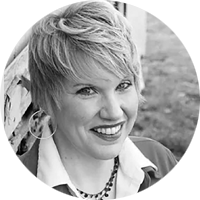
Nathaniel Shippee
University of Illinois
Chicago, Illinois

Samuel Weaver
St. John’s College
Annapolis, Maryland

Patrick Mayles
Graduate student
Universidad Nacional de Colombia

Christina Jeong
College Student
University of Notre Dame
Notre Dame, Indiana

Improve Your Writing Skills
Other than endorsing perfect punctuation and grammar in English, the Ayn Rand Institute offers no advice or feedback for essays submitted to its contests. However, we do recommend the following resources as ways to improve the content of your essays.
The Atlas Project
Writing: a mini-course.

Sign Up for Contest Updates!
Want to stay up-to-date on any new developments to the contest? Sign up to our email list below.
We’ll send you periodic reminders about the contest deadlines, as well as helpful resources to ensure you get the most out of your experience reading and writing about Ayn Rand’s Atlas Shrugged .
Great! Let's get you a copy of the book.
Atlas Shrugged is a mystery novel like no other. You enter a world where scientists, entrepreneurs, artists, and inventors are inexplicably vanishing—where the world is crumbling.
What you discover, by the end, is an uplifting vision of life, an inspiring cast of heroes, and a challenging new way to think about life’s most important issues.
You're almost there!
Enter your school details below to receive a free digital copy of Atlas Shrugged .
Let's log you in to your account.
Success! Let's log you in to your account.
We've received your request for a free copy of Atlas Shrugged and will be emailing you details on how you can access it shortly. In the meantime, are you ready to begin the entry process?
Please enter your password below, either to create a new account or to sign in to your existing account for the contest. Once you're logged in to your account, you'll be able to save your entry progress and return later to complete it.
Hi, . Ready to enter the contest?
Now that you've logged in to your account, let's get you started on your entry for the contest. It's OK if you haven't finished reading the book or writing your essay yet. We'll save your progress for you to continue later.
Then, when you're ready to submit your essay, just return to our platform. Your saved entry will be right where you left off. So, why wait? Take the first step, and start your entry today.

- Privacy Policy
- Terms & Conditions
- Ayn Rand Global
- Ayn Rand Institute eStore
- Ayn Rand University App
Updates From ARI
Copyright © 1985 – 2024 The Ayn Rand Institute (ARI). Reproduction of content and images in whole or in part is prohibited. All rights reserved. ARI is a 501(c)(3) nonprofit organization. Contributions to ARI in the United States are tax-exempt to the extent provided by law. Objectivist Conferences (OCON), Ayn Rand Conference (ARC), Ayn Rand University (ARU) and the Ayn Rand Institute eStore are operated by ARI. Payments to OCON, ARC, ARU or the Ayn Rand Institute eStore do not qualify as tax-deductible contributions to the Ayn Rand Institute. AYN RAND, AYN RAND INSTITUTE, ARI, AYN RAND UNIVERSITY and the AYN RAND device are trademarks of the Ayn Rand Institute. All rights reserved.
Advertisement
Supported by
A Critic’s Plea for Maximalism: ‘Crack Us Open Like Eggs’
In her first essay collection, Becca Rothfeld demonstrates that sometimes, more really is more.
- Share full article

By David Gates
David Gates teaches in the M.F.A. program at St. Joseph’s University.
- Barnes and Noble
- Books-A-Million
When you purchase an independently reviewed book through our site, we earn an affiliate commission.
ALL THINGS ARE TOO SMALL: Essays in Praise of Excess , by Becca Rothfeld
The essays I love favor abundance over economy, performance over persuasion. Zadie Smith’s exemplary “Speaking in Tongues” juggles Barack Obama, Shakespeare, Shaw’s “Pygmalion,” Pauline Kael on Cary Grant, Thomas Macaulay on the Marquess of Halifax and her own “silly posh” speaking voice. Its modest argument, that “flexibility of voice leads to a flexibility in all things,” disappears into the spectacle of a nimble mind reveling in its omnivorous erudition.
The critic Becca Rothfeld’s first collection, “All Things Are Too Small: Essays in Praise of Excess,” is splendidly immodest in its neo-Romantic agenda — to tear down minimalism and puritanism in its many current varieties — but, like Smith, she makes her strongest case in her essays’ very form, a carnival of high-low allusion and analysis. Macaulay, Cary Grant, Obama and a posh accent? Rothfeld will see you and raise you: How about Simone Weil, Aristotle, “Troll 2,” Lionel Trilling, Hadewijch of Brabant (from whom she takes her title), serial killer procedurals, Proust and the Talmud? Not that she neglects Cary Grant; in an essay on love and equality, she filters a smart reading of “His Girl Friday” through the philosopher Stanley Cavell.
Cynthia Ozick (who ought to know) has favorably — and justly — compared Rothfeld to “the legendary New York intellectuals,” though Rothfeld lives in D.C., where she’s the nonfiction book critic for The Washington Post. She’s also an editor at The Point, a contributing editor at The Boston Review, and has published in The New Yorker, The New York Review of Books, The Nation, The Atlantic, The Baffler and The British Journal of Aesthetics. Of course she also has a Substack, and she declares on her website — which links to many splendid pieces not collected in this book — that she’s “perhaps delusionally convinced” she’ll eventually finish her Harvard Ph.D. dissertation in philosophy.
The costive and the envious might wonder if she’s spreading herself too thin, but Rothfeld’s rigor and eloquence suggest that in her case, as the title of one essay has it, “More Is More.” That piece begins in dispraise of “professional declutterers” such as Marie Kondo, whose aesthetic amounts to “solipsism spatialized,” and from whose dream houses “evidence of habitation — and, in particular, evidence of the body, with its many leaky indecencies — has been eliminated.”
But it soon morphs into dispraise of minimalist prose and the “impoverished non-novels” of fashionable writers including Jenny Offill, Ottessa Moshfegh and Kate Zambreno, whose “anti-narratives are soothingly tractable, made up of sentences so short that they are often left to complete themselves.”
Rothfeld, by contrast, leaves no phrase unturned. Her maximalist prose abounds in alliteration — “I recommend bingeing to bursting,” she writes, exhorting us to “savor the slivers of salvation hidden in all that hideous hunger” — as well as such old-school locutions as “pray tell” and “cannot but be offensive.” If these mannerisms sit uneasily next to her f-worded celebrations of sexuality, the dissonance is deliberate, and the unease is a matter of principle.
In “Wherever You Go, You Could Leave,” a takedown of “mindfulness,” Rothfeld reports that when she “decided to live” after a suicide attempt in her first year of college, she rejected the soothing blankness of meditation and concluded that “perturbation is a small price to pay for the privilege of a point of view.”
Despite her disdain for “professional opinion-havers” — among them the columnist Christine Emba, lately also of The Washington Post — she doesn’t mind laying down the law. In the book’s longest essay, “Only Mercy: Sex After Consent,” Rothfeld taxes Emba, author of the best-selling “Rethinking Sex,” with an “appalling incomprehension of what good sex is like.”
So, pray tell. “We should choke, crawl, spank, spew, and above all, surrender furiously, until the sheer smack of sex becomes its own profuse excuse for being.” Some sexual encounters, she continues, “crack us open like eggs” and “we should not be willing to live without them.”
We-shoulding is an occupational hazard of opinion-having, but we need take these pronouncements no more — and no less — to heart than Rothfeld’s paradoxical admiration for both the “beatifically stylized” films of Éric Rohmer and the “magnificently demented” oeuvre of David Cronenberg. Do we agree or disagree with her that Sally Rooney’s novels are overpraised, and that Norman Rush’s “Mating” is really “one of the most perfect novels of the past half century”?
More to the point, do we agree that “the aesthetic resides in excess and aimlessness,” and that extravagance is “our human due”? I’d say no to the former and yes to the latter, but who cares? What counts in these essays is the exhilarating ride, not the sometimes-dodgy destination. William Blake wrote that the road of excess leads to the palace of wisdom; Rothfeld might say that they’re one and the same. No argument there.
ALL THINGS ARE TOO SMALL : Essays in Praise of Excess | By Becca Rothfeld | Metropolitan Books | 287 pp. | $27.99
Explore More in Books
Want to know about the best books to read and the latest news start here..
Stephen King, who has dominated horror fiction for decades , published his first novel, “Carrie,” in 1974. Margaret Atwood explains the book’s enduring appeal .
The actress Rebel Wilson, known for roles in the “Pitch Perfect” movies, gets vulnerable about her weight loss, sexuality and money in her new memoir.
“City in Ruins” is the third novel in Don Winslow’s Danny Ryan trilogy and, he says, his last book. He’s retiring in part to invest more time into political activism .
Jonathan Haidt, the social psychologist and author of “The Anxious Generation,” is “wildly optimistic” about Gen Z. Here’s why .
Do you want to be a better reader? Here’s some helpful advice to show you how to get the most out of your literary endeavor .
Each week, top authors and critics join the Book Review’s podcast to talk about the latest news in the literary world. Listen here .
Book review: ‘Housing the Nation’ is informative introduction to complicated topic
- Updated: Mar. 26, 2024, 8:11 a.m. |
- Published: Mar. 26, 2024, 8:00 a.m.

Housing the Nation: Social Equity, Architecture, and the Future of Affordable Housing Edited by Alexander Gorlin and Victoria Newhouse Provided by Dean Draznin [email protected]
- Tom Moran | Star-Ledger Editorial Board
Economic inequality has risen to extreme levels in America, not seen since the years just before the Great Depression. That’s sparked a lively conversation about what can be done, with President Biden promising to raise taxes on the rich, protect safety net programs and spend billions to reduce child poverty.
But if you talk to people working in poor neighborhoods, the first problem they often point to is housing. In a city like Newark, N.J., 40 percent of renters are paying over half their income for a roof over their heads. If a car breaks down or a child gets sick — if life happens, basically — these families can be ruined.
For the middle class, rising rents and home prices are a burden as well. Young families hoping to buy a home and build wealth, as their parents did, are finding no room in the market. In the 1970s, builders constructed more than 400,000 starter homes, defined as less than 1,400 square feet. By 2020, the number plummeted to 65,000. If you wonder why college grads are living in mom’s basement for years, that’s a big part of your answer.
And yet, Biden almost never talks about housing. Congress is not working on any ambitious program to address the problem. And many Americans who see the crisis every day as homelessness returns to our streets feel ill-equipped to identify a solution and advocate for it. It’s simpler to call for a rise in the minimum wage or food stamp allotments, even if rent increases quickly snatch away the advantage, and then some.
Now, a remarkably informative new book offers a smart overview of the problem, along with possible remedies. “Housing the Nation: Social Equity, Architecture, and the Future of Affordable Housing,” edited by Alexander Gorlin and Victoria Newhouse, is a collection of essays from voices of experts and advocates engaged in this fight, along with a meaty section of annotated photographs of affordable housing projects from cutting-edge architects who are proving public housing doesn’t have to be ugly and dangerous by design.
The housing problem is not simple, and for those who see the urgency and want to understand it, it’s tough to know where to start. Should we build more public housing? Is rent control a reasonable way to contain costs? Are zoning laws that pinch the supply of housing at the root of the problem? What other countries have done better, and how? What about American cities?
This book can make you literate on housing policy in record time. It’s a primer that invites you into the discussion. Some of the essays are not written for a general audience, but most are insightful, and a handful are true gems that untangle the issue like a brush through knotty hair. In a book like this, you can pick and choose after sampling the first few paragraphs. It doesn’t have to be read like a novel, from top to bottom.
The first essay, from economist Dean Baker, explains why inequality is so toxic to the housing market. If wealthy people fly in private jets, that doesn’t directly affect the rest of us who rely on commercial flights. But housing is different.
“The rise in inequality matters more for housing than for items like cars and clothing,” he writes. “The supply of land is inherently limited. … More housing for those at the top means less for everyone else.”
It’s a simple but profound insight. And you can see it in places like the Jersey Shore, where neighborhoods of simple beach cabins once owned by middle class families have been replaced by mansions that take five times as much land, driving up prices for everyone.
Richard Florida, a professor at the University of Toronto, explains how the housing crisis in big cities like Boston, San Francisco and New York is driven by job growth that was not matched by equivalent growth in the housing supply. The shocker is how bad the same squeeze has become in the heartland, turbo-charged by the pandemic that opened the door to remote work. In Austin, home prices have exploded, jumping by 68 percent over just two years, from 2020 to 2022. The squeeze has gone national.
My personal favorite came from Robert Kuttner, co-founder of The American Prospect and professor at Brandeis University. In just eight pages, he masterfully reviews the history that got us into this mess, and the policy options that might get us out. He advocates a massive investment in public housing, which seems to me like wise policy, but politically unrealistic. Kuttner, though, is meticulously fair in his assessment of all options. If you’re a policy nerd, he’s your man.
The book describes the horrid history of racism in the housing market, enforced by banks, realtors and suburban zoning rules that cordoned off Black and brown families into poor urban areas. It is a stain on this country’s history, and zoning barriers in particular have made public schools in a blue state like New Jersey more segregated even than schools in Alabama.
That points to a major hypocrisy of the left. Suburban liberals who say they want to help the poor and resist racial injustice still crowd public meetings to oppose the planned apartment building down the street. I’m looking at you, California.
The final chapter is the annotated photos of cutting-edge designs across the country, which goes on for 80 pages and would make a good coffee table book of its own. These places are beautiful, mostly small scale, open and sunny and stylish. If “public housing” makes you think of the big ugly brick towers of yesterday, this will snap you out of it.
So, jump in. The housing crisis is likely to get worse. Fixing it will require us to do something big, or to do 100 small things with lots of energy. If you want to engage in that fight, this book is a good place to start.
— Tom Moran is editorial page editor and a political columnist for The Star-Ledger of Newark, N.J.
If you purchase a product or register for an account through a link on our site, we may receive compensation. By using this site, you consent to our User Agreement and agree that your clicks, interactions, and personal information may be collected, recorded, and/or stored by us and social media and other third-party partners in accordance with our Privacy Policy.

Ryan O'Connell to Release Essay Collection (Exclusive)
Ryan O'Connell is set to release a new book.
The Emmy-nominated and Writers Guild Award-winning writer, actor, and producer's debut collection of essays was acquired by St. Martin's Press, The Hollywood Reporter can exclusively announce. The book will be published in early 2026.
The book's collection will include "soul-bearing, funny, and provocative essays about overcoming one's limitations, and the ones others place on you, and leading a fully gay life." Publisher St. Martin's Press describes of the book, "In essays that range from his relationship with his mother, to alcohol, to straight people's weddings, and to online hook-up culture, O'Donnell illuminates his life and the lessons he's learned as he embraces his full self."
O'Connell said in a statement to THR , "I love writing for TV and film but when I started considering putting dead bodies in my pilots and earnestly thinking about my creative vision for Bob's Big Boy: The Movie , I knew it was time to return to my problematic first love: The Personal Essay. My latest book is a collection of stories examining how I, a gay disabled man, learned to value myself even when the world around me didn't. Thank you to my agent Kent Wolf and my editor Anna deVries at St. Martin's for believing in me and letting me write a 6,000-word essay called ‘Are Straight People Okay?' I hope after reading this, people will be struck with the delusional confidence of Rob Schneider in the late 90s and pursue big, gorgeous lives."
O'Connell released his debut novel called Just By Looking at Him in 2022. Apart from his work on television, O'Connell also penned a memoir I'm Special: And Other Lies We Tell Ourselves , released in 2015, which became the inspiration for Special.
His breakout sitcom Special , based on his own journey as a gay disabled man coming to terms with his cerebral palsy, ran for two seasons on Netflix and was nominated for four Emmy Awards. He received a Special Recognition Award from GLAAD and a Visibility Award from the HRC for the special. O'Connell also starred in, wrote, and executive produced Queer As Folk for Peacock.
More from The Hollywood Reporter
- Margot Robbie and Power Stylist Andrew Mukamal's New 'Barbie: The World Tour' Book Is On Sale After Scoring Bestseller Status
- Amid Kate Middleton Speculation, New Book from Princess Diana's Brother Hits the Charts

Opinion Christine Blasey Ford is no hero, if justice is the measure

An earlier version of this column misspelled the name of Mollie Hemingway. This version has been corrected.
Christine Blasey Ford is promoting her new memoir to acclaim from certain quarters, including a glowing review by the New York Times. Meanwhile, the man she accused of being a witness to her alleged sexual assault by now-Supreme Court Justice Brett M. Kavanaugh more than 40 years ago can’t get his own book reviewed or even mentioned by mainstream newspapers.
You know me. I can’t resist flipping over a cow patty to see what’s underneath.
Ford, you’ll recall, is the California psychologist with two front doors in her house who, in testimony to the Senate Judiciary Committee in 2018, accused Kavanaugh of assaulting her at a high-school-era party while another boy, Mark Judge, allegedly stood by. Judge, who kept his distance and silence during Kavanaugh’s confirmation hearings — in part, he has said , to avoid further harassment by Democratic interlocutors — released his own version of those events and the aftermath in “ The Devil’s Triangle: Mark Judge vs the New American Stasi ” (2022).
As with Kavanaugh, Ford’s accusation against Judge was embraced by most of the news media despite an absence of evidence or corroborating testimony. No one who was supposed to have been at the party where Ford was allegedly assaulted remembered it, or her. Ford herself was unable to nail down the year the party took place (but settled on 1982 after several stabs) or where it was held, how she got there, how she got home or any other details, except that she herself had consumed just one beer, according to her testimony. Her claims against Kavanaugh ultimately were unsubstantiated.

Even so, the awards and accolades for Ford keep coming. During a recent appearance on “The View,” she was nearly sanctified for her “bravery.” Not one of the “View” chin-wags seemed to have done any research. They merely checked the box next to “female” and continued to hold in contempt the male who became a Supreme Court justice. Whoopi Goldberg summed it up: “To face those people the way they were looking and dealing with you, that is bravery under a whole different kind of fire.”
A fair-minded person would also wonder what it was like to be in Kavanaugh’s seat.
And what about Judge? “Roadkill” is the way constitutional lawyer Jonathan Turley described Judge’s invisible role in this tale. Of course, Judge and Kavanaugh were and are distinct people whose adult lives could not be more different. Kavanaugh was the kind of boy who kept a detailed calendar of his busy activities and who had a stellar career as a federal judge.
Judge, who chronicled his heavy-drinking school days in his 1997 book, “ Wasted: Tales of a Gen X Drunk ,” was a teenage alcoholic who had to claw his way to sobriety and suffered accordingly. He told Martha MacCallum during a recent Fox News interview that the effects of being essentially locked in a stockade for public ridicule and condemnation included “suicidal ideation” and “economic issues.”
Under interrogation by Democrats on the Senate Judiciary Committee, Kavanaugh was forced to review his youthful beer consumption, which he admitted was gustatory. He wasn’t alone; Ford was a drinker, too, according to friends and outlined in the deeply researched book “ Justice on Trial ” by Mollie Hemingway and Carrie Severino.
In my own research for a book that never came to fruition, I also learned that Ford was a party girl, which means she and I would have been friends. Her real “best friend” at the time, Leland Keyser, was known as her designated driver in those days, according to several of her friends cited in yet another book, “ The Education of Brett Kavanaugh ” by New York Times writers Robin Pogrebin and Kate Kelly.
A straight-A student and athlete who became a professional golfer, Keyser had her driver’s license at the time of the alleged assault.
Keyser, who felt pressured by Ford’s supporters to confirm Ford’s story, testified to the FBI that she had no recollection of any such party and didn’t know Kavanaugh.
When intimidation didn’t work, Ford and her friends implied that Keyser’s testimony couldn’t be trusted because she had “significant health challenges,” as Ford put it during her testimony. It didn’t take long for the meaning here to become public. Keyser had at one point become addicted to painkillers prescribed for golf-related back and neck injuries. She has suffered years of surgeries and pain that continues today, thanks to her commitment to recovery. No meds. She also has had to cope with the psychological effects of her persecution by the anti-Kavanaugh brigade. At least one person from Team Ford tried to persuade her to adjust her story. She refused.
Meanwhile, after five years of silence, Judge has emerged from his bunker with both barrels blazing. One can stand only so much smearing. He was, after all, accused in the public arena of variously urging Kavanaugh on or trying to stop him, all the while laughing, according to Ford. Like Kavanaugh, Judge was presumed guilty — a tragic by-product of the “believe the woman” orthodoxy that emerged during the #MeToo movement — and justly wants to have his say.
It takes guts to try to breach the #MeToo iron curtain, as Judge is attempting to do. It takes no courage at all to enrich yourself at other people’s expense, as Ford has done. Even if she believes her own story or suffered some traumatic event at some time, in the absence of evidence or corroboration, a measure of doubt is called for. This doesn’t necessarily mean she lied, as Hemingway and Severino have noted.
Both Judge and Keyser, it seems, deserve the applause Ford is receiving for perpetuating a questionable history that has damaged so many people, not to mention the judicial system she says she has sought to protect. We know the truth is otherwise, thanks to a video capture of Ford’s lawyer, Debra Katz, saying that her client wanted to block Kavanaugh because of fears he would vote to reverse Roe v. Wade . Ford’s fears might have been justified, but her tactics — which have netted her $1 million in donations plus overnights at Oprah’s — were not.
Nothing good grows under a cow patty, but Ford sure did step in one.
- Opinion | Here’s why Americans under 40 are so disillusioned with capitalism April 1, 2024 Opinion | Here’s why Americans under 40 are so disillusioned with capitalism April 1, 2024
- Opinion | What we have learned about the Supreme Court’s right-wingers April 1, 2024 Opinion | What we have learned about the Supreme Court’s right-wingers April 1, 2024
- Opinion | This Easter, let’s not try to pretend Jesus was a ‘Palestinian Jew’ March 28, 2024 Opinion | This Easter, let’s not try to pretend Jesus was a ‘Palestinian Jew’ March 28, 2024


IMAGES
VIDEO
COMMENTS
Writing an essay about a novel or any work of fiction is a 6-step process. Steps 1-3 are the analysis part. Steps 4-6 are the writing part. Step 1. Create a list of elements of the novel ... To write an introduction, all you need to do is add one or two sentences above the thesis statement. ...
A properly written introduction will: 1. Introduce your subject matter. 2. Preview your main argument and the point of view from which you make that argument. 3. Outline your structure, like the prose equivalent of a table of contents. 4. Tee up key information and arguments you will present in the rest of the book.
Table of contents. Step 1: Hook your reader. Step 2: Give background information. Step 3: Present your thesis statement. Step 4: Map your essay's structure. Step 5: Check and revise. More examples of essay introductions. Other interesting articles. Frequently asked questions about the essay introduction.
Step 3: Introduce Your Subject Matter. A good introduction is like a good sales pitch; it should provide the right amount of information to get others excited and motivated to invest. This means book introductions should be concise and informative while showcasing the work's subject matter.
Table of contents. Step 1: Reading the text and identifying literary devices. Step 2: Coming up with a thesis. Step 3: Writing a title and introduction. Step 4: Writing the body of the essay. Step 5: Writing a conclusion. Other interesting articles.
Determine Your Essay Statement: Hook the Reader: Provide Overview and Preview: Crafting Your Outline: Edit and Revise: Conclusion: Writing a strong introduction is one of the most important parts of crafting a polished essay. The opening paragraph sets the tone for your argument and piques the reader's interest right from the start.
Step 3: Read and Analyze the Book. Read the book thoroughly, taking notes on key plot points, characters, themes, and any literary devices used by the author. Analyze the book's significance and consider why it's worth writing about. Step 4: Determine Your Approach. Decide how you want to approach the essay.
Example 3. [1] When the Lutz family moved into a new house in Amityville, New York, they found themselves terrorized by a vengeful ghost (Labianca, 2021). Since then, their famous tale has been debunked by scientists and the family themselves (Smith, 2005). [2]
Tip 5: Keep It Short and Sweet. Long introductions are the quickest way to bore a reader and tempt them to put the book down. If you're writing a prologue, for example, it's important not to cram in every detail about the history of the world or the backstories of the main characters. And if you're writing a preface, you don't need to ...
A thesis statement tells the reader the main point or argument of the essay. This can be just one sentence, or it can be a few sentences. Map Your Essay. Before you wrap up your essay introduction, map it! This means signposting sections of your essay. The key here is to be concise. The purpose of this part of the introduction is to give your ...
How Your Book's Intro Will Help You. How to Write the Book Introduction: 8 Steps. Step 1: Identify the Problem. Step 2: Present the Solution. Step 3: Assert Your Credibility. Step 4: Show Them the Benefits. Step 5: Give Them Proof. Step 6: Make a Promise (The Bigger the Better) Step 7: Warn Them Against Waiting.
Be brief; it's recommended that your introduction make up no more than 8 to 9 percent of the entire text (for example, 200 words for a 2500 words essay). Construct a strong thesis statement. Create some intrigue. Make sure there is a clear and smooth transition from your introduction to the body of your piece.
Literary analysis involves examining all the parts of a novel, play, short story, or poem—elements such as character, setting, tone, and imagery—and thinking about how the author uses those elements to create certain effects. A literary essay isn't a book review: you're not being asked whether or not you liked a book or whether you'd ...
2. State the Book Title and Author's Name: After grabbing the reader's attention with a hook, clearly state the book's title and the author's name. This serves as a formal introduction to the subject matter of your essay. Example: "In this essay, we will explore the captivating world of J.K. Rowling's Harry Potter series, delving ...
Introduce the method. The introduction should also explain the method by which the author will discuss their topics. For Carnegie, this is the outline example for the reader, detailing how to use the book for maximum success. For Green, this is using the introductory paragraphs as a microcosm of the book as a whole.
The introduction to an academic essay will generally present an analytical question or problem and then offer an answer to that question (the thesis). Your introduction is also your opportunity to explain to your readers what your essay is about and why they should be interested in reading it. You don't have to "hook" your
When Kate Chopin's novel The Awakening was published in 1899, critics condemned the book as immoral.One typical critic, writing in the Providence Journal, feared that the novel might "fall into the hands of youth, leading them to dwell on things that only matured persons can understand, and promoting unholy imaginations and unclean desires" (150).A reviewer in the St. Louis Post- Dispatch ...
An introduction paragraph is the first paragraph of an essay, paper, or other type of academic writing. Argumentative essays , book reports, research papers, and even personal essays are common types of writing that require an introduction paragraph.
A literary analysis essay should have eight to twelve sentences per paragraph. Write three to four sentences that broadly describe your paper's topic and explain why it is fascinating and significant to the book you are reading for the introduction. The majority of your introductory paragraph will be composed of these three or four sentences.
Moreover, the book discusses the role that education played in the acquisition of freedom. Education was a major force for social change with regard to slavery. 3. The Webster's Dictionary introduction. This introduction begins by giving the dictionary definition of one or more of the words in the assigned question.
Stage 2: Give publication information - Here, state the publisher and the city of publication. Also, capture the year publication, current edition and the number of pages. Stage 3: State the genre - As you introduce your essay, classify the book appropriately. For example, state if it is fictional or nonfictional.
Atlas Shrugged is a mystery novel like no other. You enter a world where scientists, entrepreneurs, artists, and inventors are inexplicably vanishing—where the world is crumbling. And what you discover, by the end, is an uplifting vision of life, an inspiring cast of heroes, and a challenging new way to think about life's most important issues.
Alan Wake: Novel critique By:Leona. Introduction: The novel I will be critiquing is Alan Wake by Rick Burroughs. In this critique, I will be talking about the book's characters and two themes. This book falls under the psychological thriller genre and mystery and takes place in a fictional town in Washington.
In her first essay collection, Becca Rothfeld demonstrates that sometimes, more really is more. By David Gates David Gates teaches in the M.F.A. program at St. Joseph's University. When you ...
In general, your introductions should contain the following elements: Orienting Information. When you're writing an essay, it's helpful to think about what your reader needs to know in order to follow your argument. Your introduction should include enough information so that readers can understand the context for your thesis.
It doesn't have to be read like a novel, from top to bottom. The first essay, from economist Dean Baker, explains why inequality is so toxic to the housing market.
Ryan O'Connell is set to release a new book. The Emmy-nominated and Writers Guild Award-winning writer, actor, and producer's debut collection of essays was acquired by St. Martin's Press, The ...
Christine Blasey Ford is promoting her new memoir to acclaim from certain quarters, including a glowing review by the New York Times. Meanwhile, the man she accused of being a witness to her ...